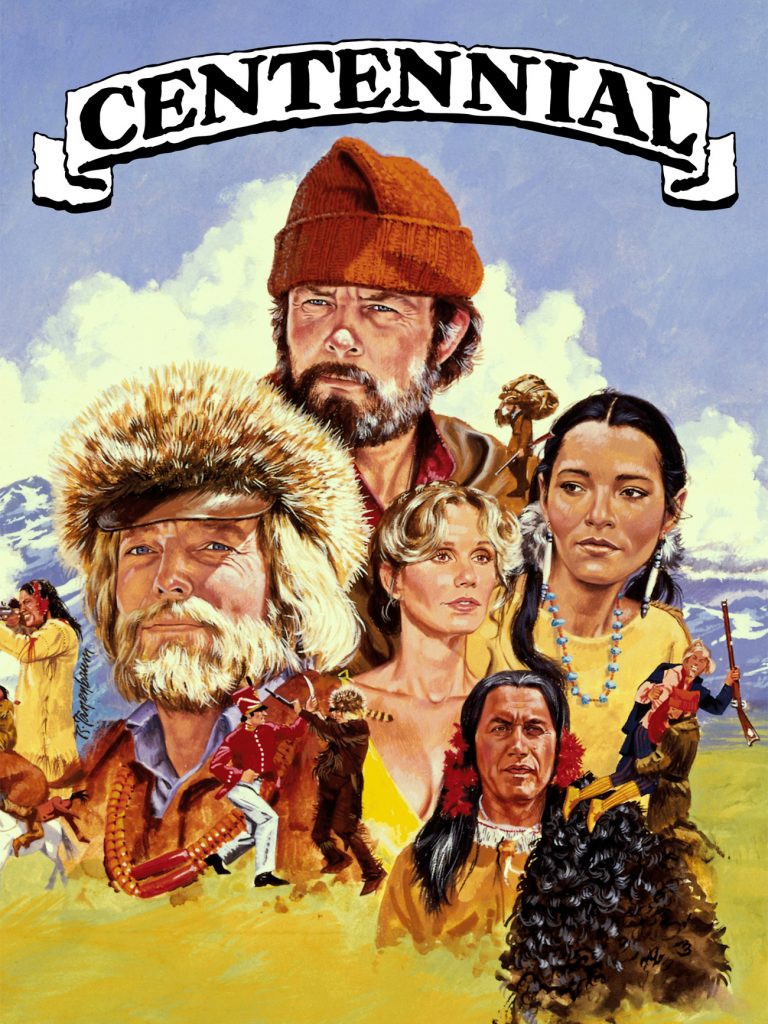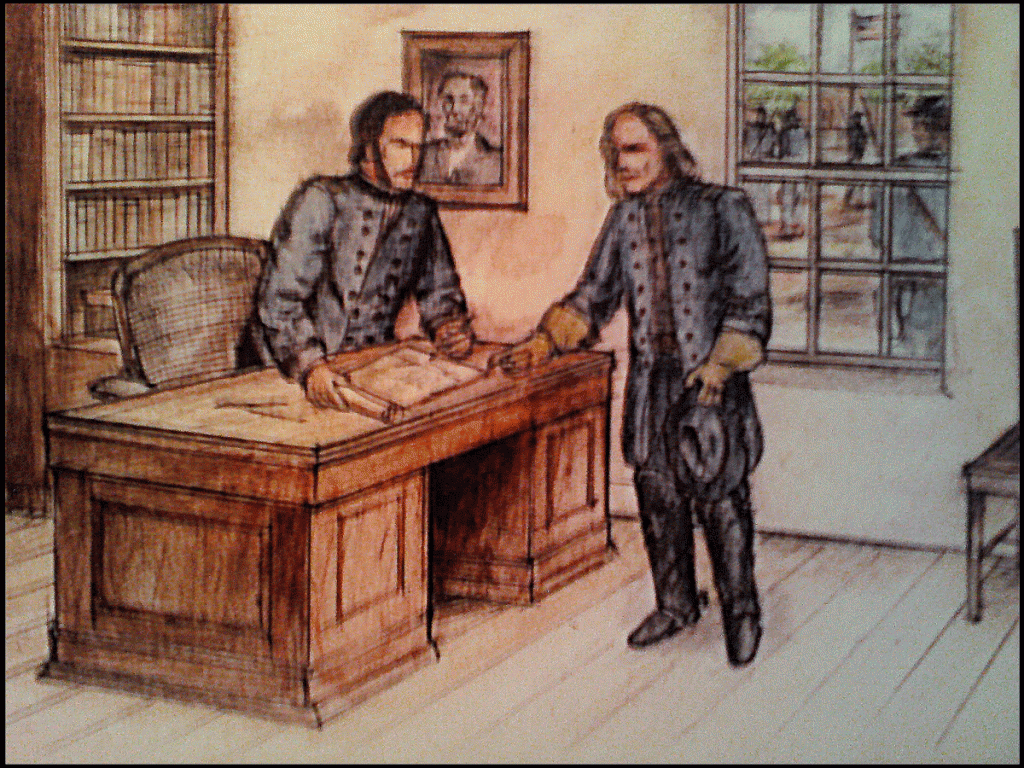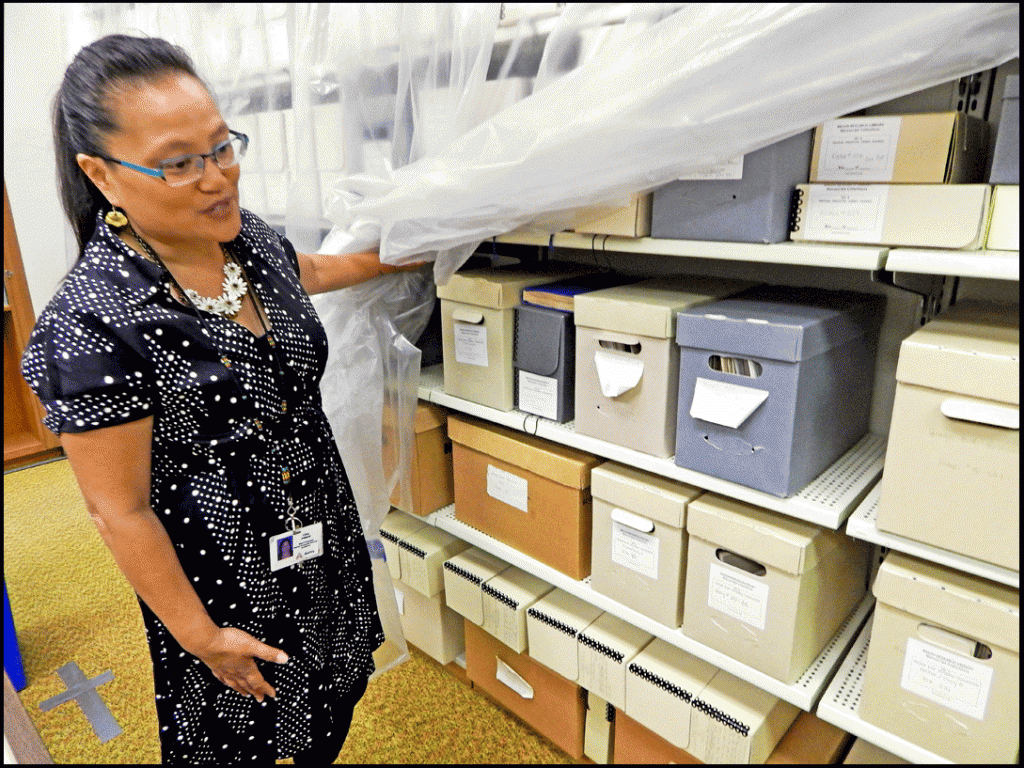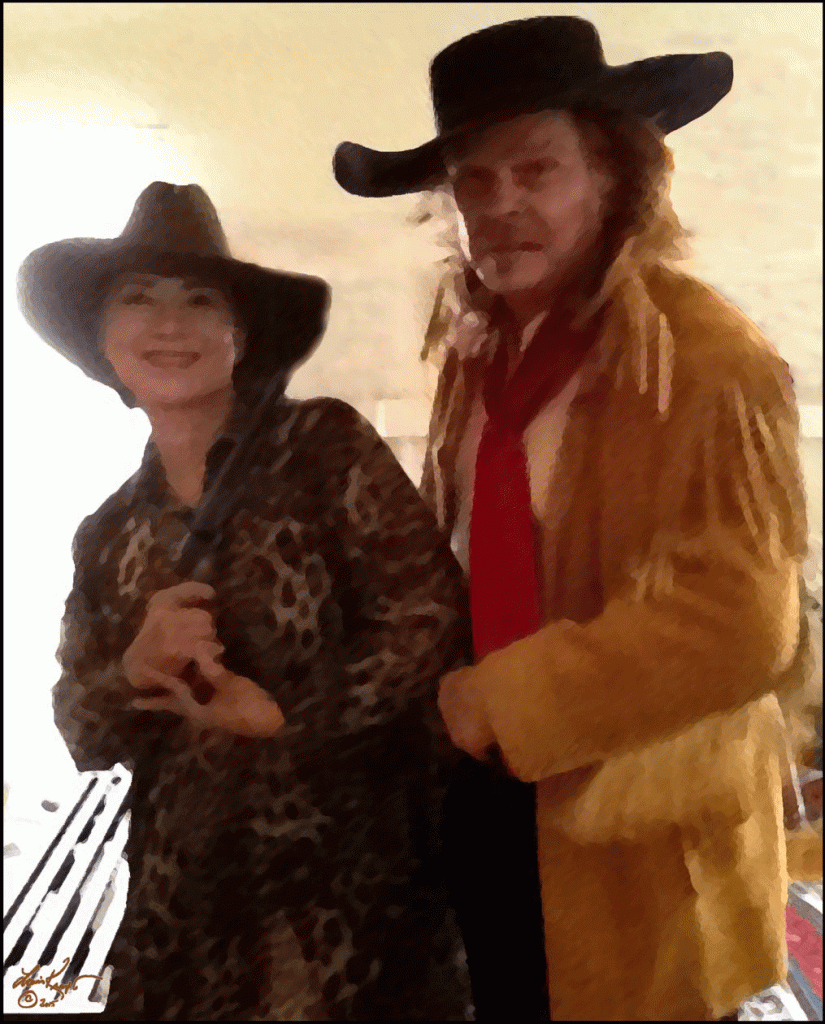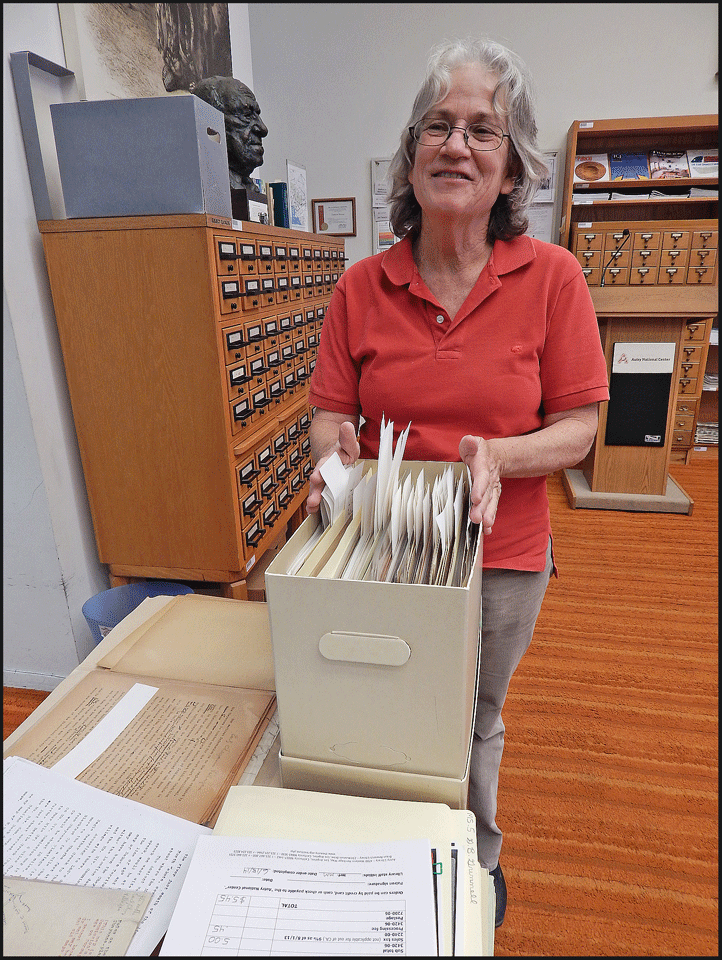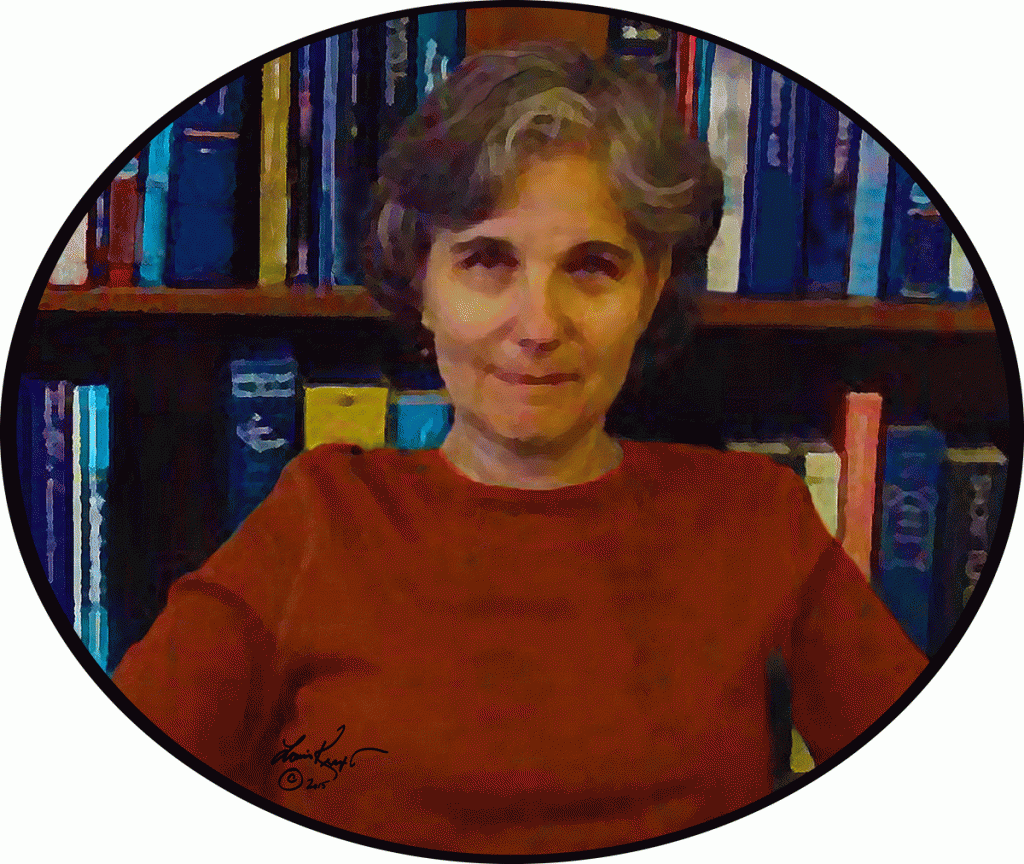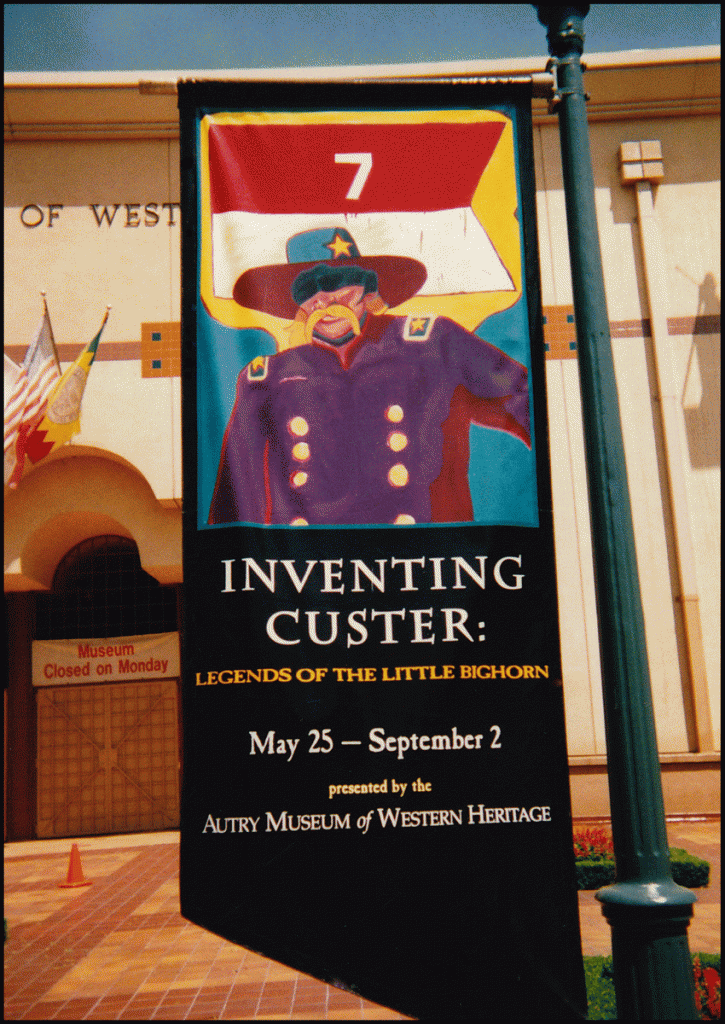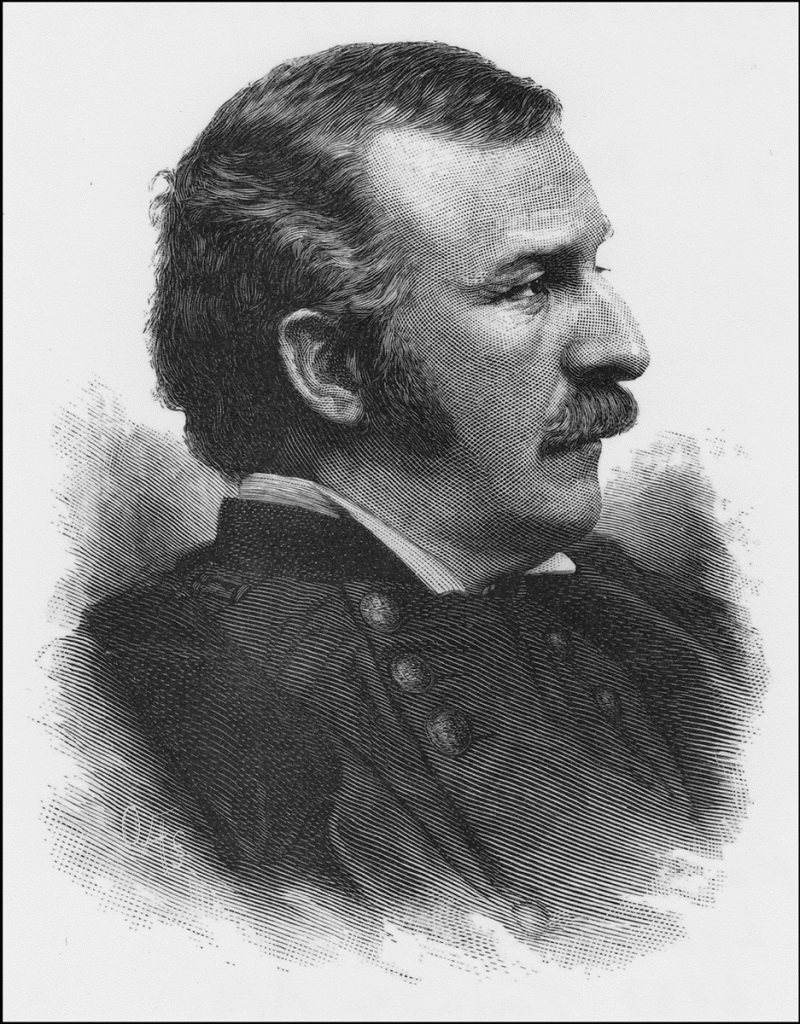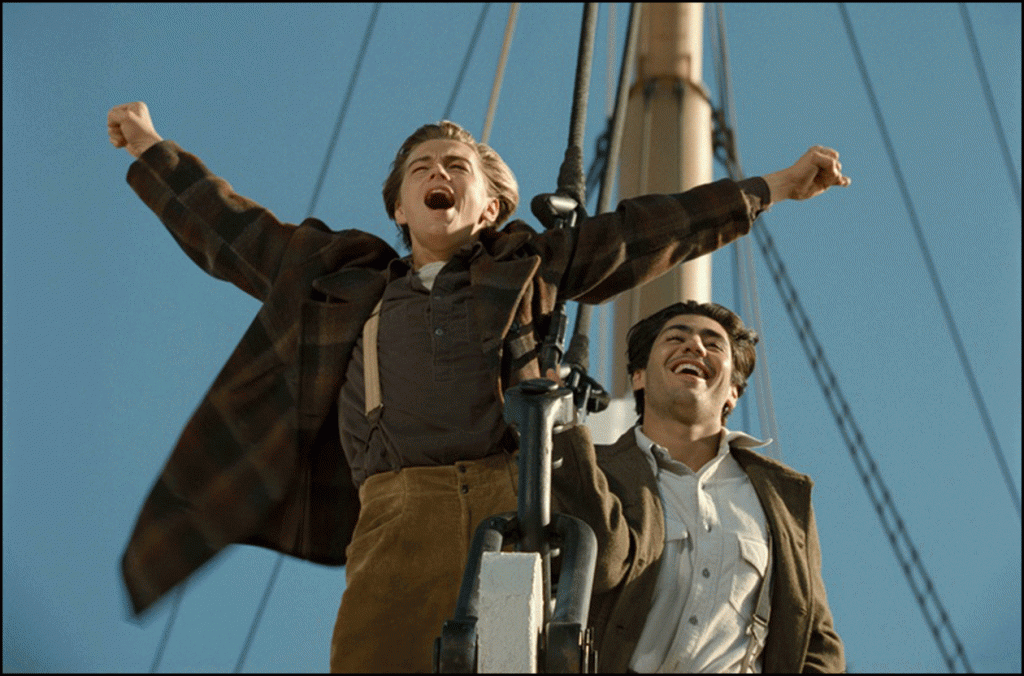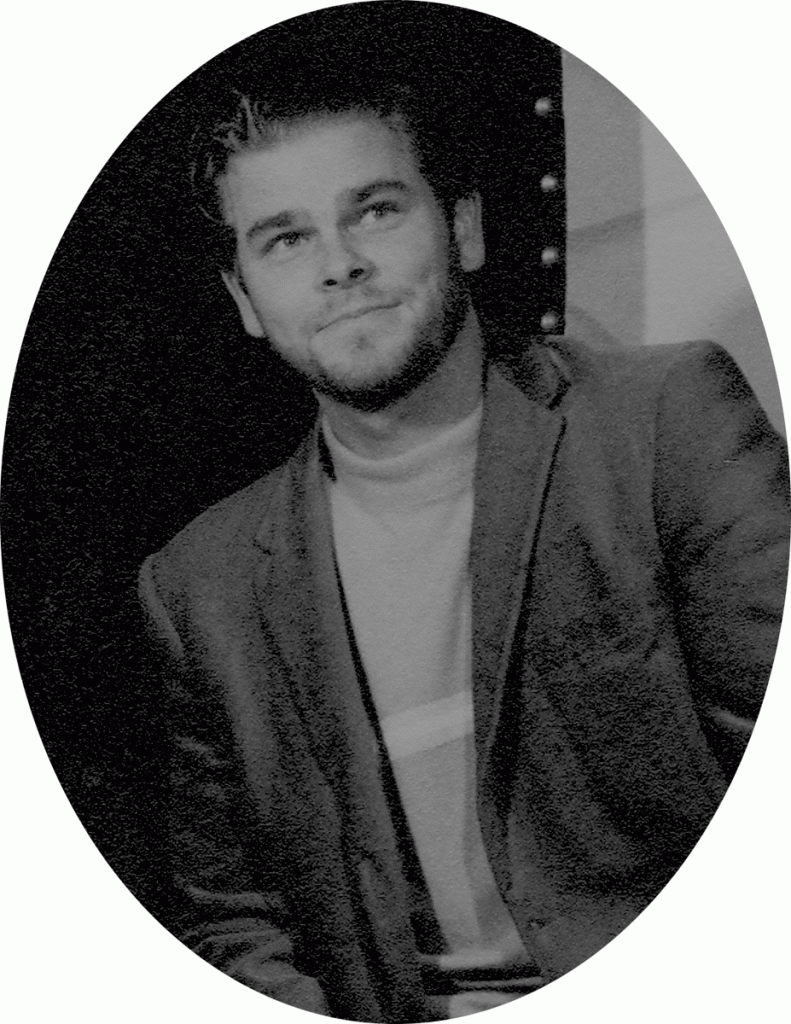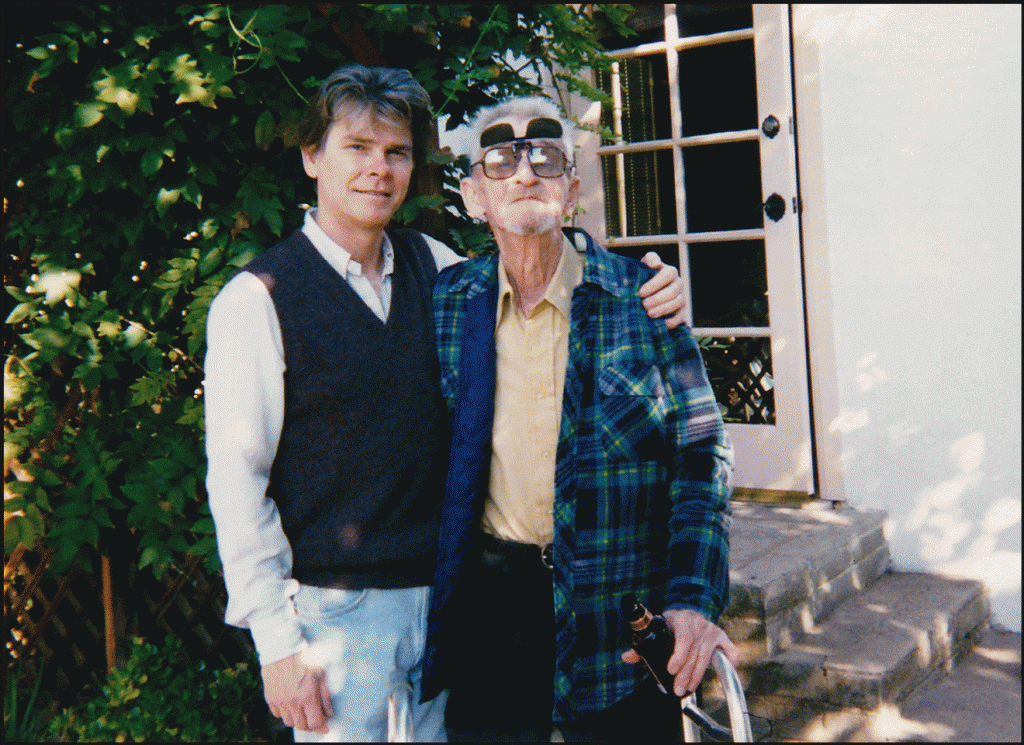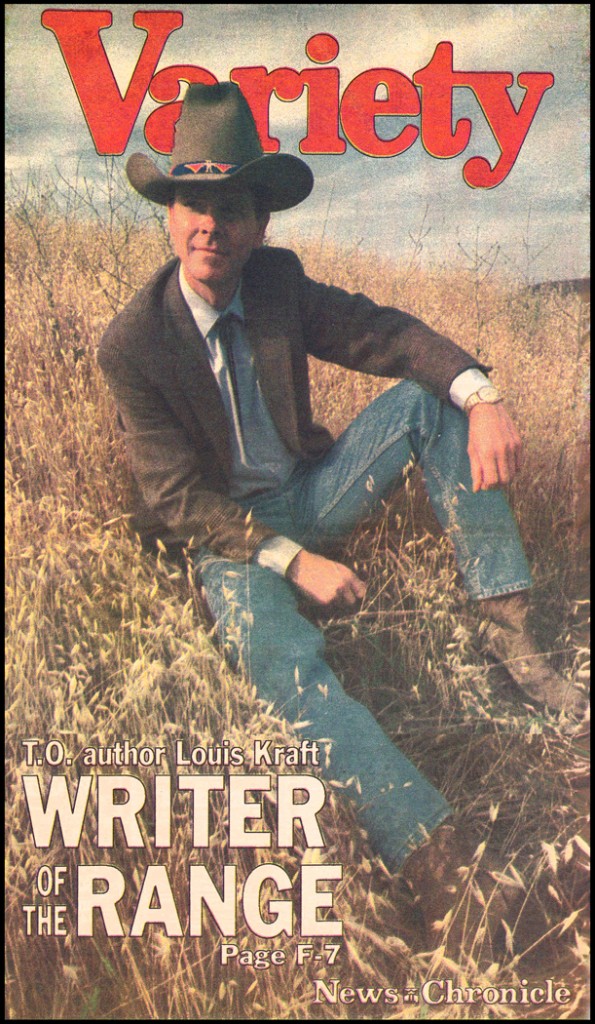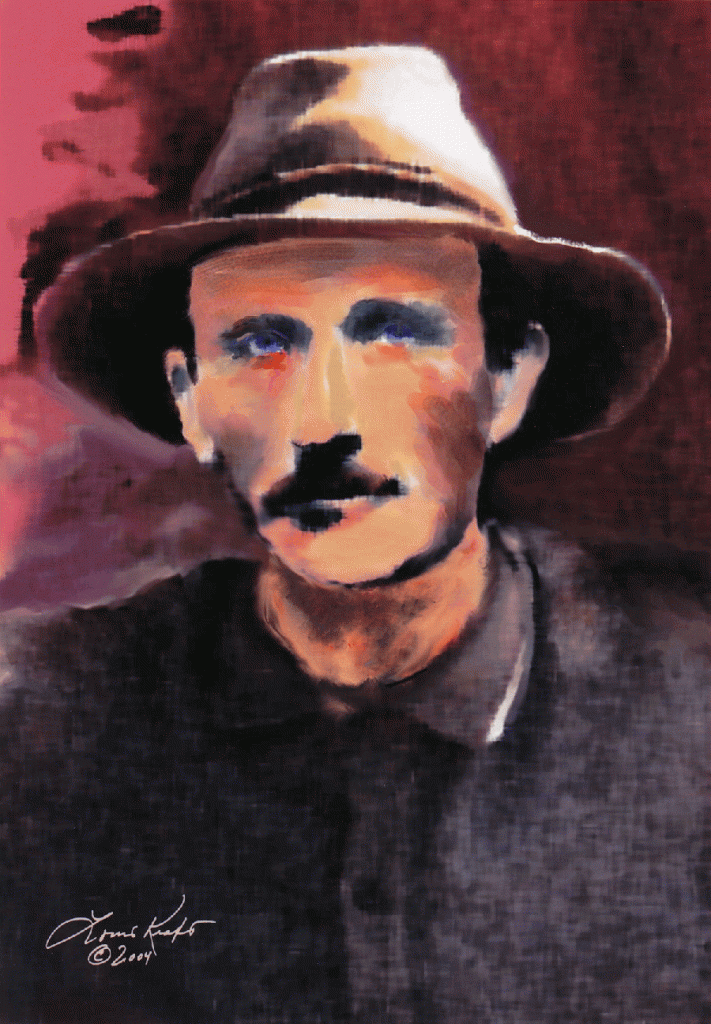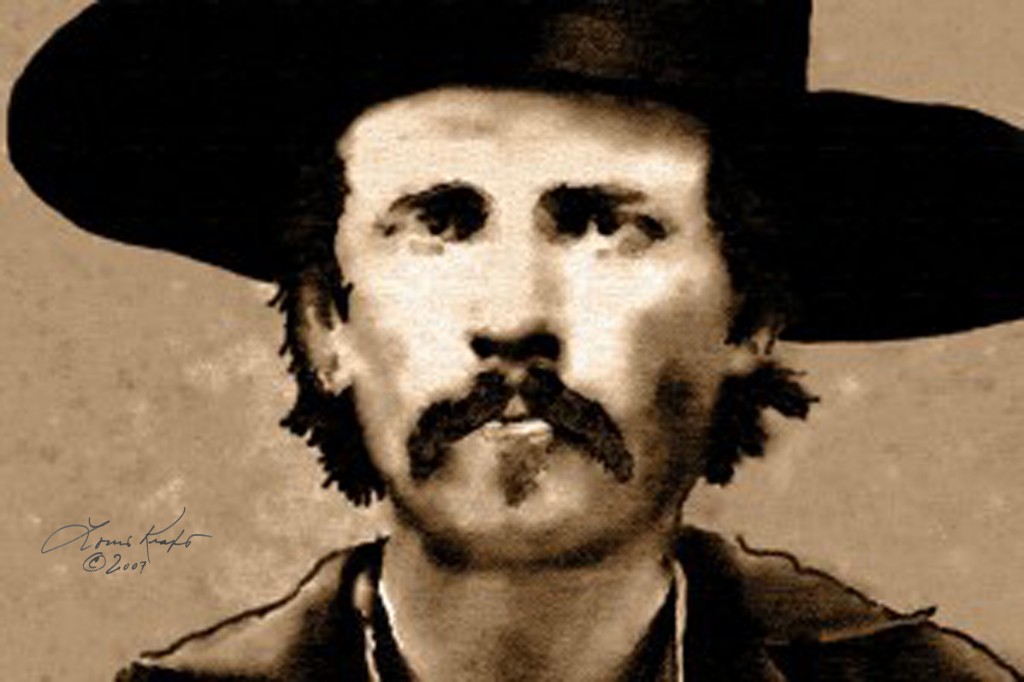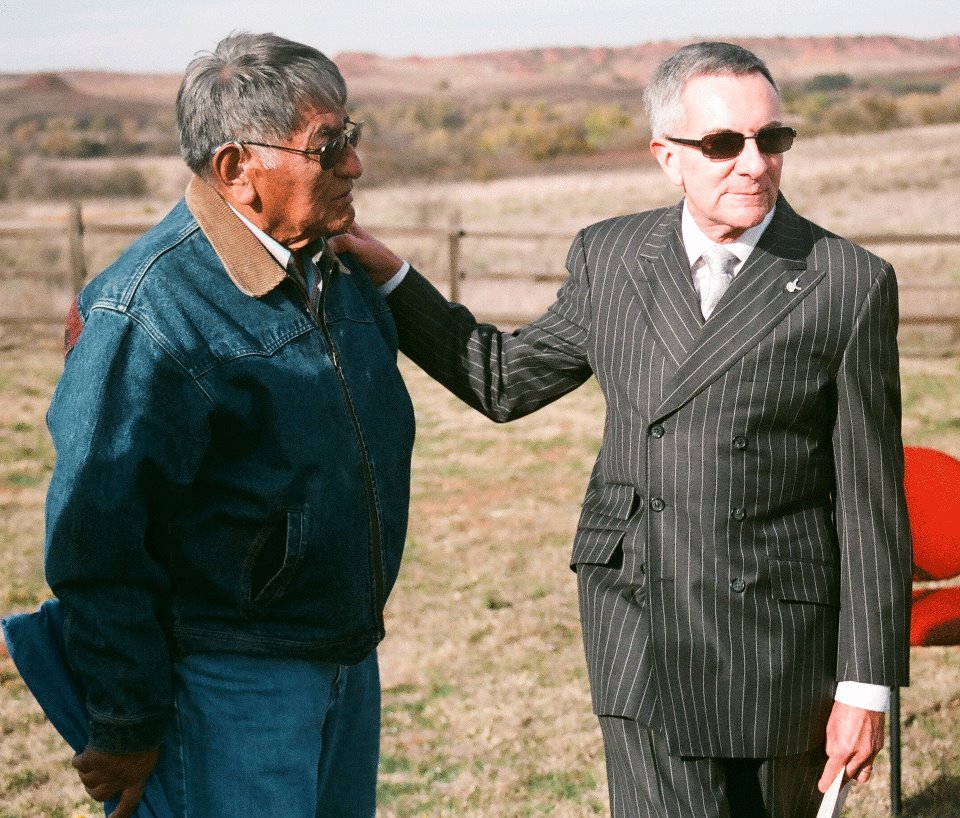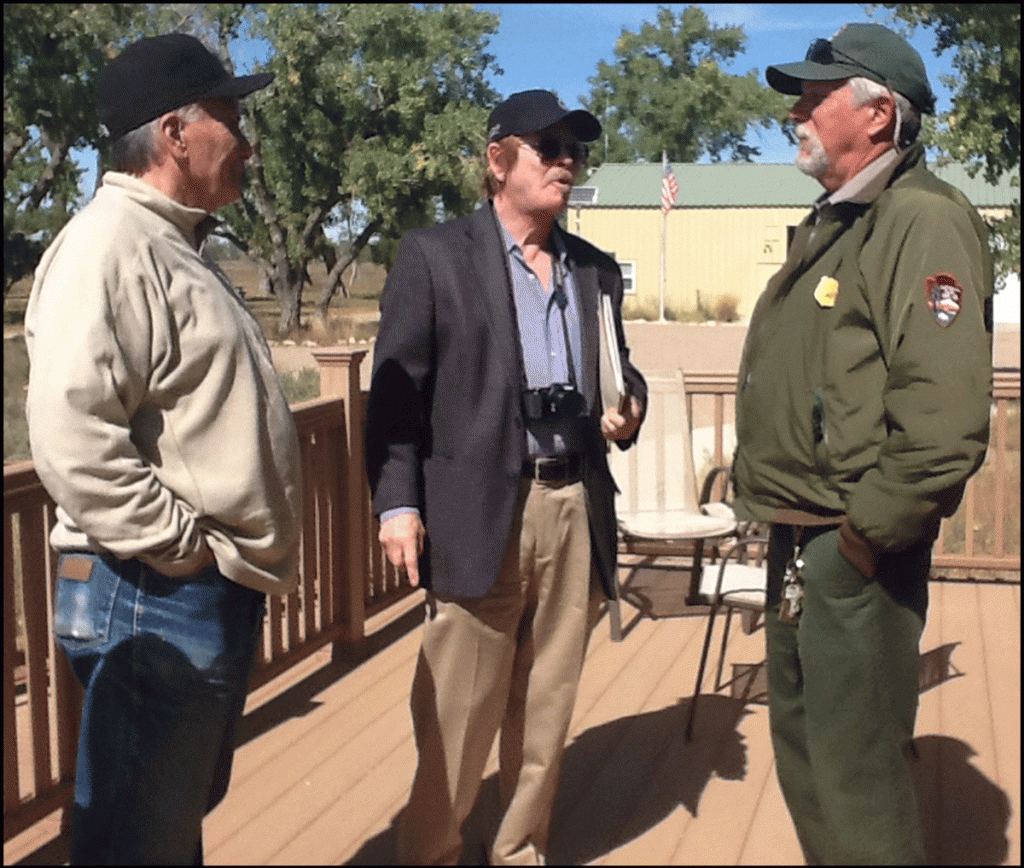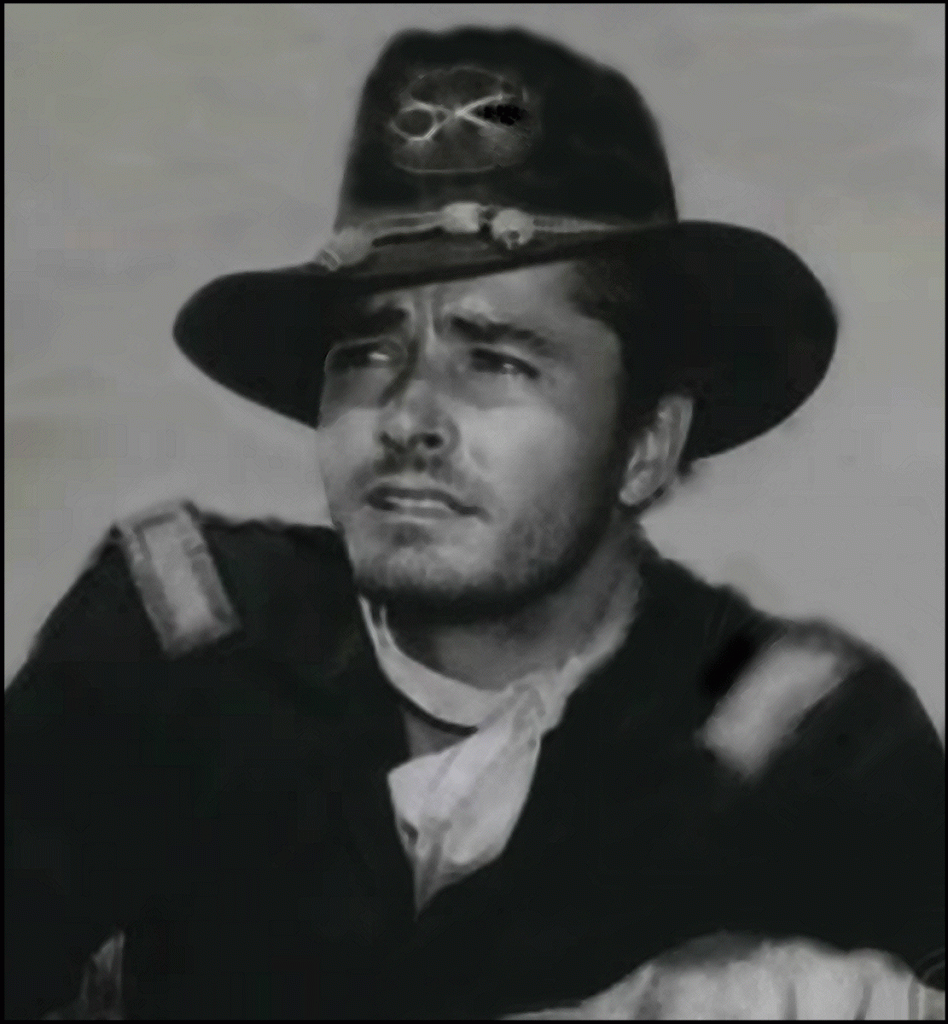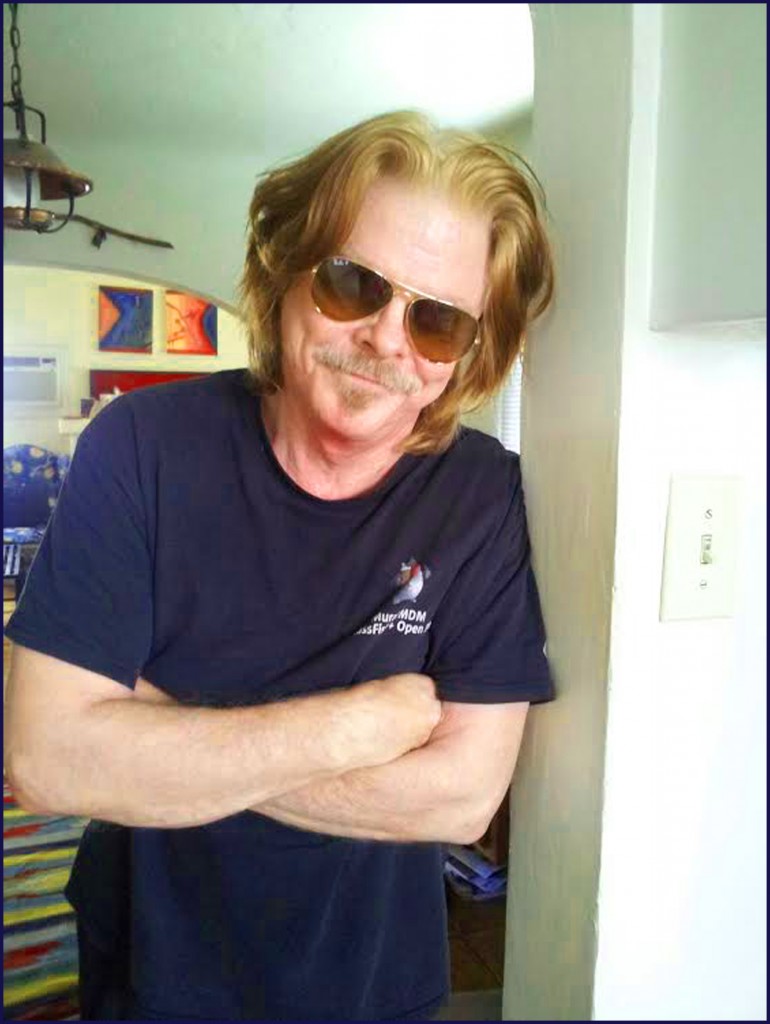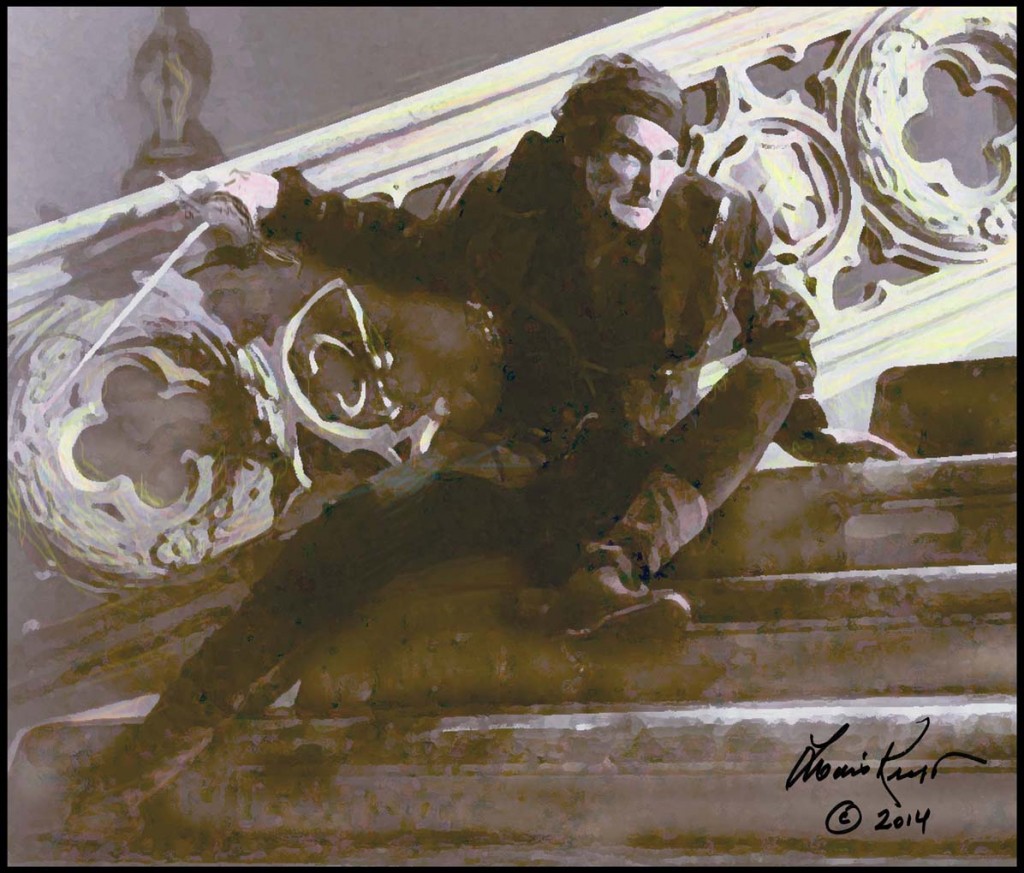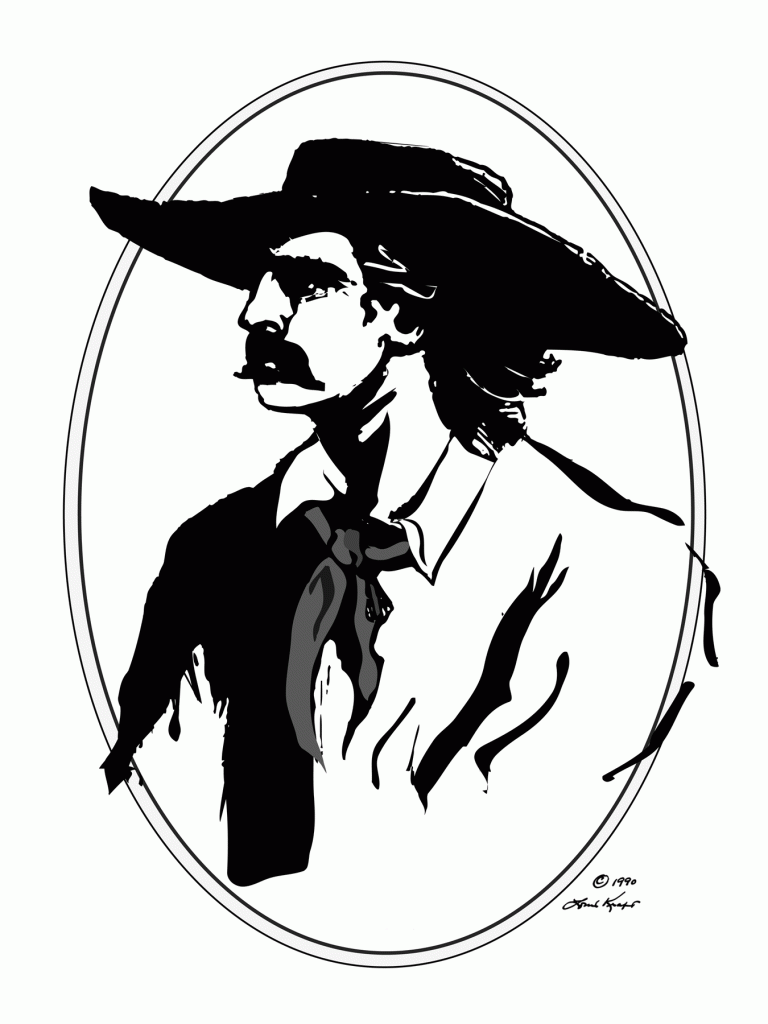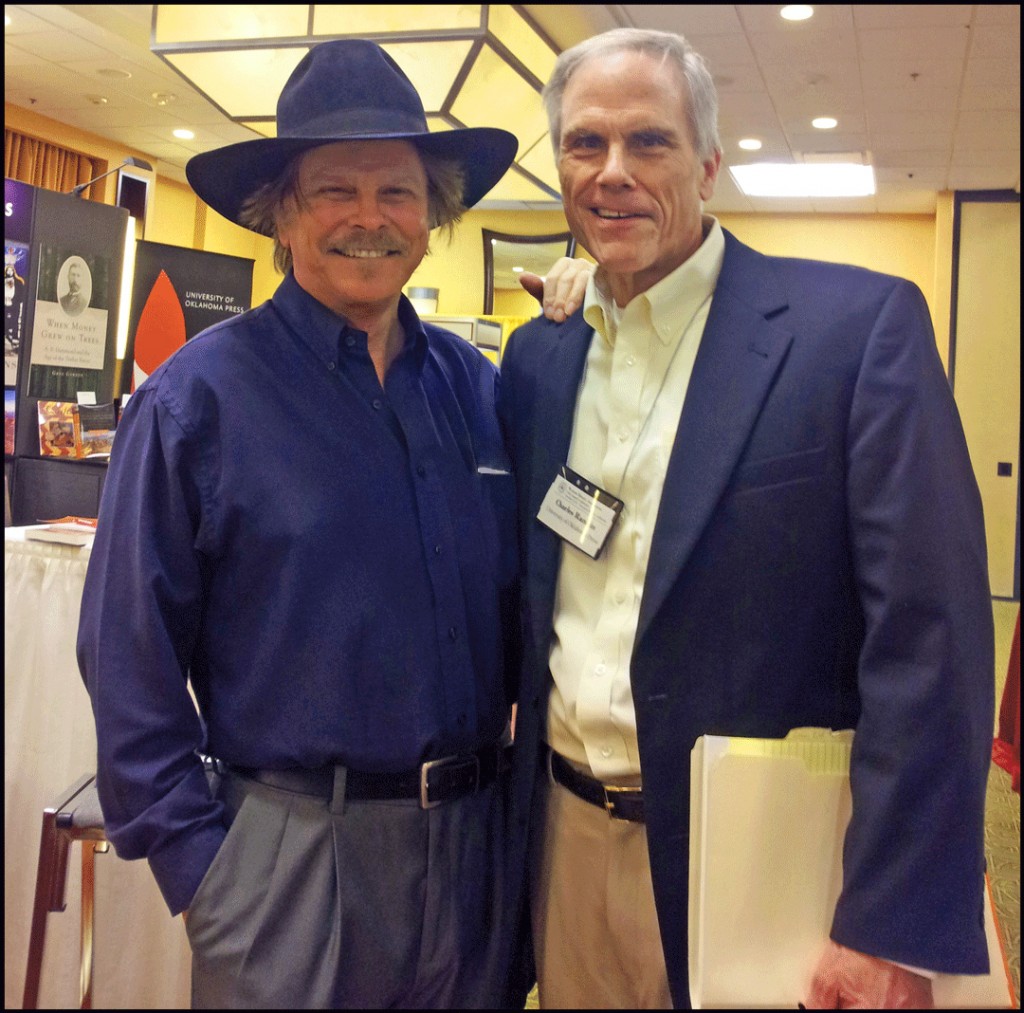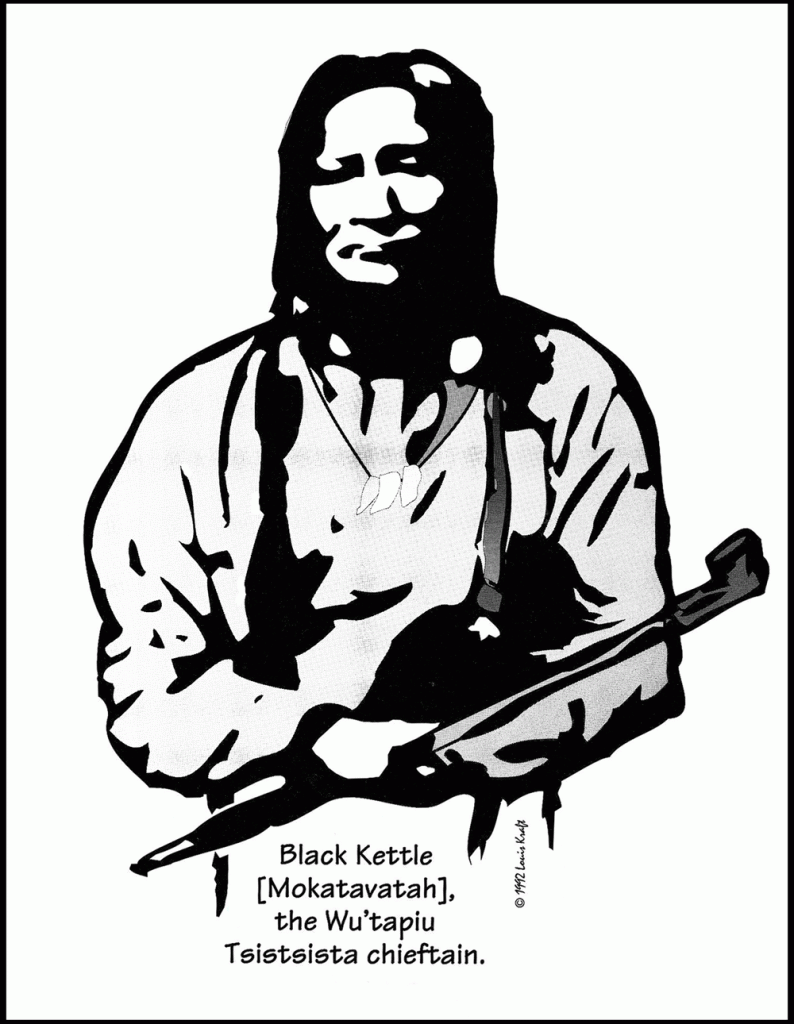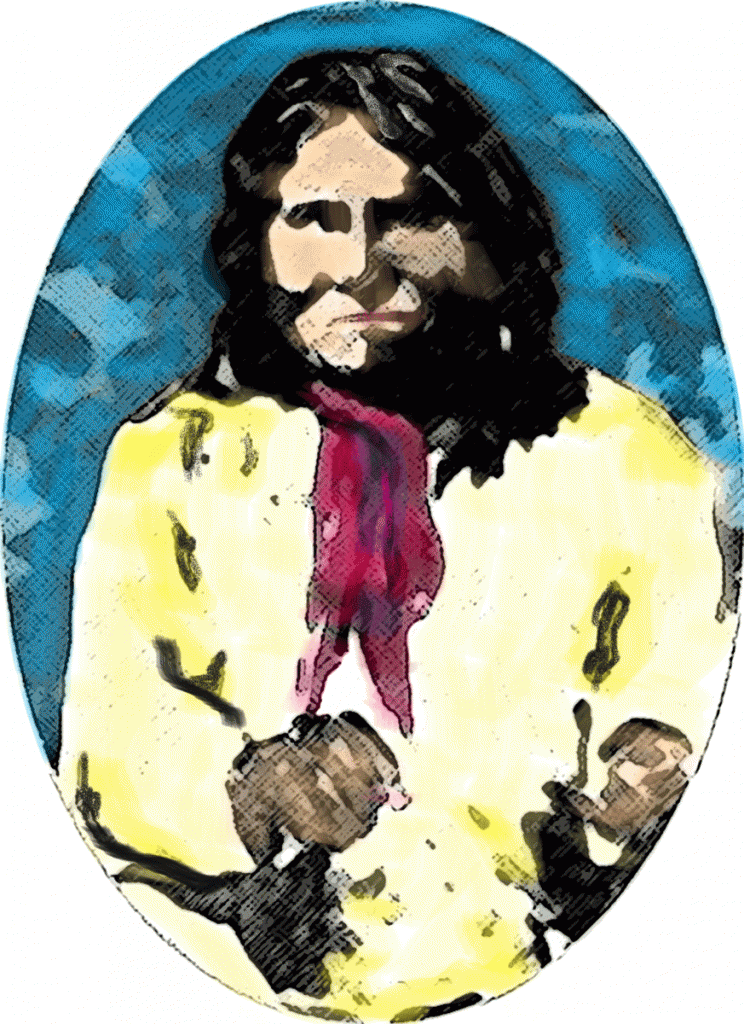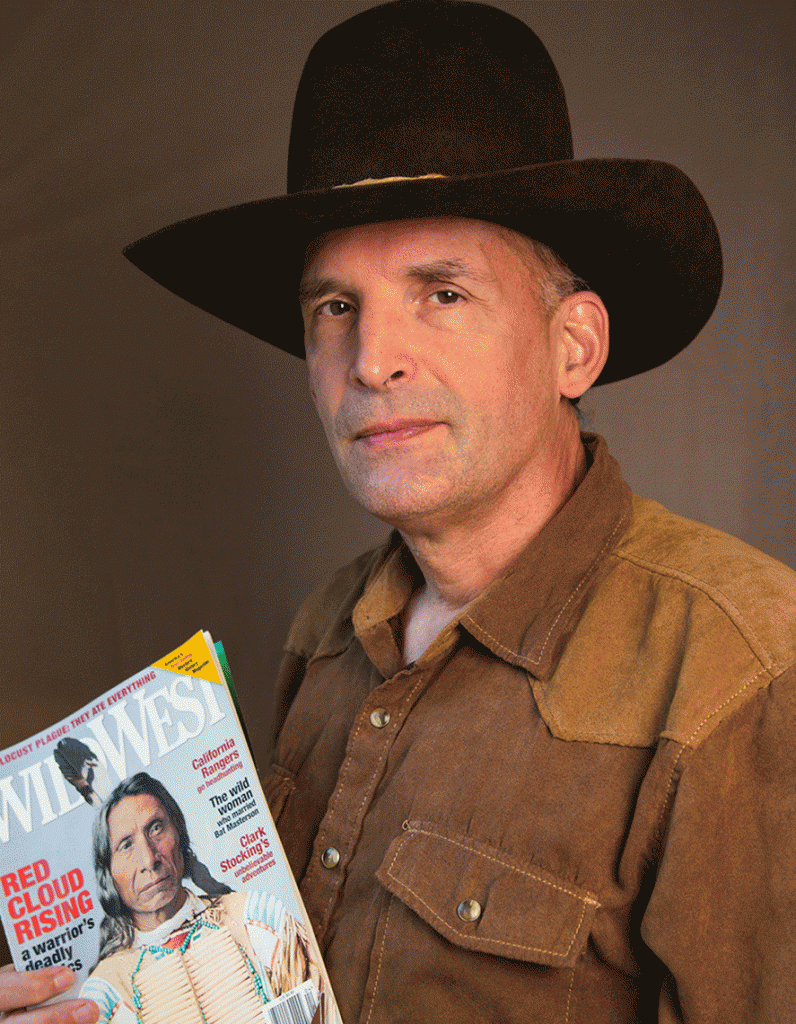Website & blogs © Louis Kraft 2013-2020
Contact Kraft at writerkraft@gmail.com or comment at the end of the blogs
The next blog is tentatively scheduled for late March, and will feature Sand Creek and the Tragic End of a Lifeway and Errol & Olivia updates. My apologies for moving the LK top 60 film list from this blog but there is still too much study that must be completed before my opinion on these films can go live.
’Tis the time of peace on earth
and goodwill to all
Christmas, like Thanksgiving, are now quiet gatherings with my family. It is a day to count our blessings and cherish each other as we pray for peace on earth and equality for all on the day that represents the birth of Jesus. Pailin and I will welcome in the New Year at the Thai Temple in North Hollywood on the evening of the thirty-first.

Pailin created this Christmas image of us for social media. The photo is from 2016 and it was from the last Christmas party we have hosted. It was mostly in the backyard until everyone moved inside after nightfall. That day was nippy, as was this Christmas. Both wouldn’t have been so cold if the wind hadn’t increased as each hour passed. … Just for the record I’m freezing when temperatures drop into the low 60s (no comment is needed). The last thing that I want to do is live in a winter wonderland. (photo © Pailin Subanna-Kraft & Louis Kraft 2016)
I talk to the little boys and girls who live next door. A large hedge along my 80-foot driveway separates us but clipping and removing branches that die during heat spells creates openings wherein we can see each other (and this includes a little boy who lives two doors farther south). They are Latino, but unlike some of their parents they are bi-lingual and speak terrific English. But if not, we’d still be friends. … I walk a lot, often to various stores, and see them in their front yards and when they walk with their parents. I’m almost always around, I have a car they like a lot, they also like my shaggy hair (compliments of yours truly) as theirs is neatly clipped. It matters not if they only had a handful of English for we’d still be able to communicate.
We talk almost daily, and it is enjoyable for us, as we are curious about each other. They had their Christmas tree at least a week and a half before the twenty-fifth. They wanted to know if I had mine. “No.” “When are you going to get it?” “I’m not.” “Why?” “I don’t have any children like you.” “Doesn’t your girlfriend want a Christmas tree?” I chuckled. “She’s my wife, and she’s okay without one. Actually, I haven’t had a tree since my little girl grew up.” “Oh.” There was disappointment in his voice. His simple “Oh” touched me and my memories drifted back to Christmas days long gone but not forgotten.
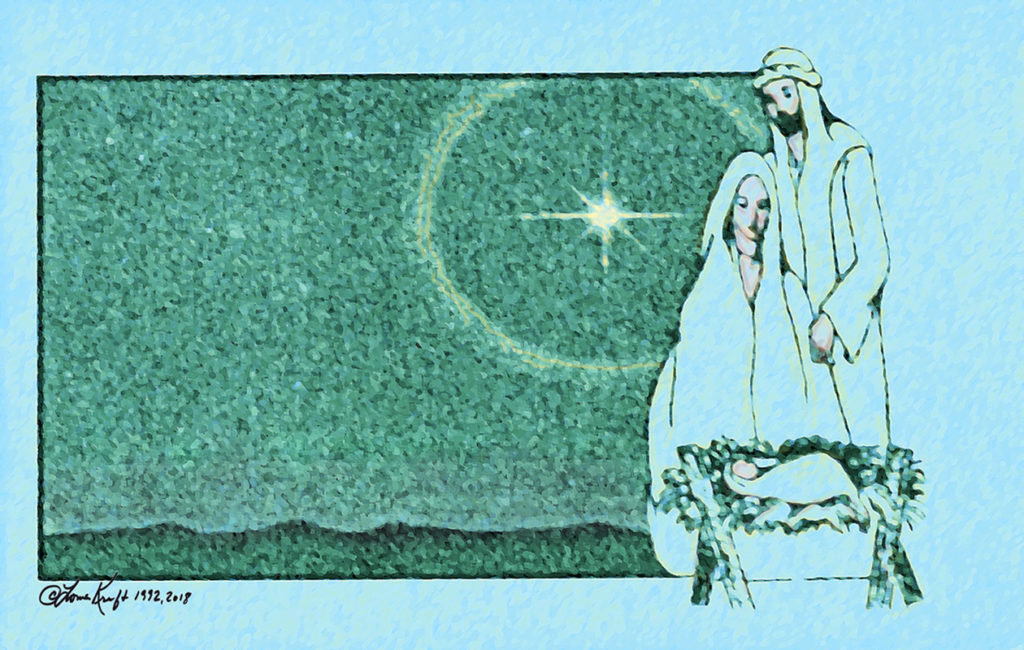
This card is a major update to a Christmas card that I created in 1992. There were three printed words inside the card: “life … love … peace …” These words are still with me today. May they be with you today, tomorrow, and forever … LK. (image © Louis Kraft 1992, 2018)
I’ve missed giving talks …
Probably the major piece of my life that Sand Creek and the Tragic End of a Lifeway forced me to walk away from years back were giving talks. They almost always got me on the road, and I love to travel. More important was/is the thrill of doing one-time presentations before audiences while not knowing what was going to come out of my mouth.
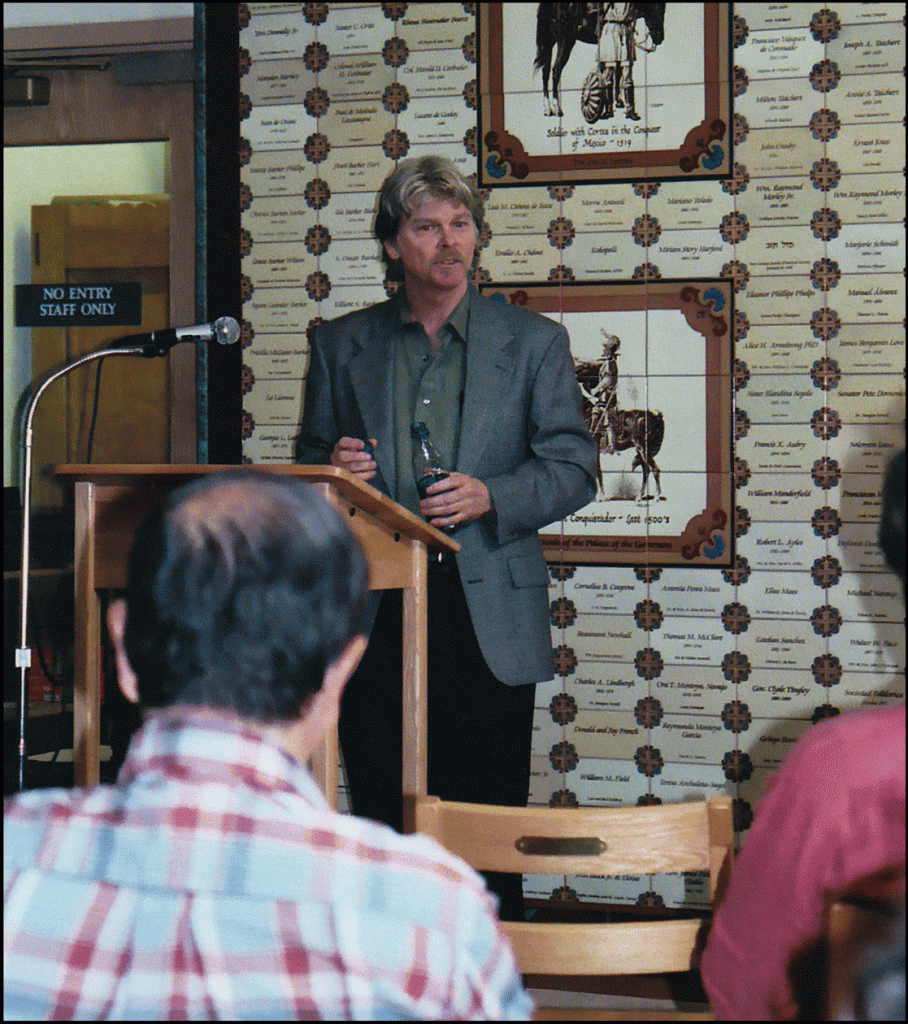
LK talking about “Cheyenne Indian Agent Edward Wynkoop’s 1867 Fight to Prevent War” at the Chávez History Library (Santa Fe, N. Mex.) on 15sept2004. BTW, this talk dealt with the destruction of the Southern Cheyenne-Dog Man-Sioux village on the Pawnee Fork in Kansas. It is a key piece in the Sand Creek manuscript Epilogue, which shows “the tragic end of a lifeway.” I shouldn’t say the following, but heck these blogs are for LK publicity (and hopefully offer a little entertainment). … The Chávez houses the Louis Kraft Collection of his work, photos, and correspondence (AC 402 and ACP 010 for the photo archive). Tomas Jaehn created it at the beginning of this century. He has moved on to become the Director,
Special Collections/CSWR University of New Mexico Libraries as well as becoming a great pal of LK. (photo © Louis Kraft 2004)
I’m prepared, always, but I refuse to read or use slides. I know what I’m going to talk about and I do work on it, but the only thing that I attempt to memorize are quotes.
Sometimes quotes walk out the door of my memory at the most inopportune moments. Paraphrasing usually saves the day, but not always. A number of years back I was talking about Errol Flynn’s performance as George Armstrong Custer in They Died with Their Boots On (Warner Bros., 1941) and comparing the fictional Custer with the real Custer. My favorite scene in the eight films that Flynn made with Olivia de Havilland was at the end of Boots. Olivia, as Elizabeth (Libbie) Custer, helps Flynn pack before he marches to his destiny at the Little Big Horn in Montana Territory on June 25, 1876. During the talk (in Hardin, Montana, in 2011) I used some of the dialogue between them in this scene and of course went blank when I got to my favorite line that Flynn’s Custer said to Olivia’s Libbie—”Walking through life with you, ma’am, has been a very graceful thing.” There’s one thing when you perform live, and that is you keep going. I did but in a different way, I asked the audience for the line and one of the fellows in the front row or near the front row knew it. Think it might have been Gary Leonard, an Indian wars historian from England, whom I met a year later when Custer and the Cheyenne won an award in Oklahoma City, and who has since become a good friend.
Back on focus
Due to the massive undertaking of the Sand Creek story (not to mention The Discovery, 2016, which I wrote to pay for an operation that I didn’t know about until after the fact—money I didn’t have), everything went on hold. As mentioned above, talks were no longer on my schedule. Ditto articles, plays, and believe it or not this year’s blogs (my last one was posted in May).
Talk about a disappearing act. …
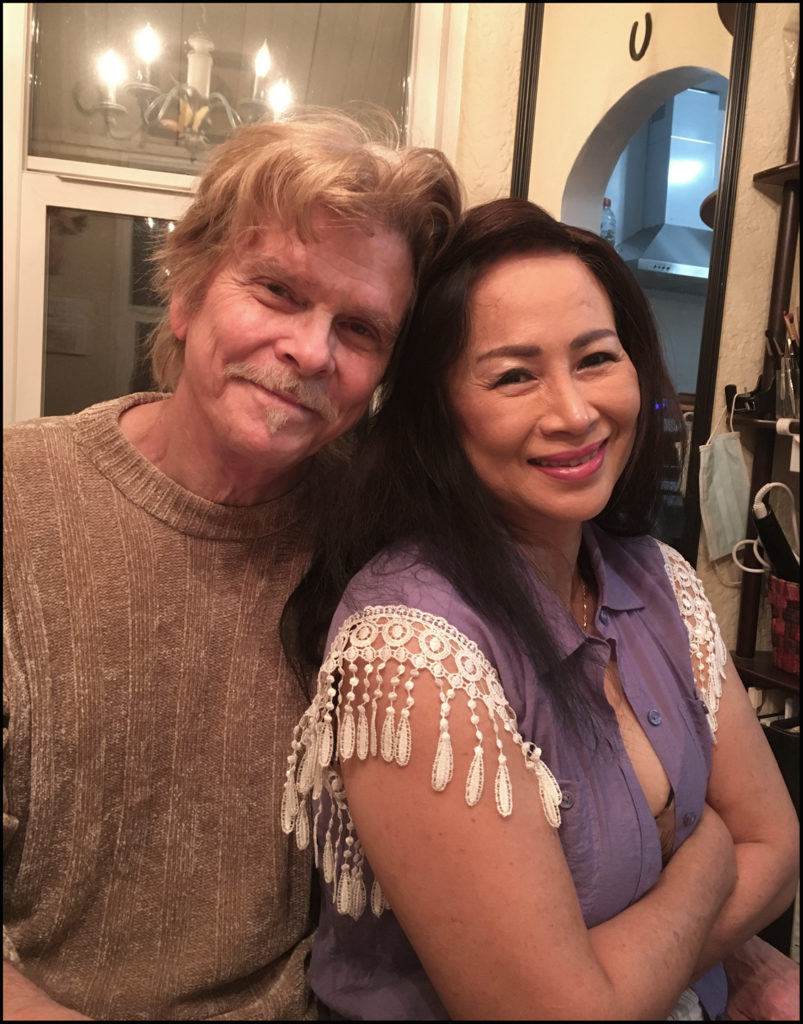
LK and Pailin on the evening of 22nov2018 (Thanksgiving, my favorite holiday). We are in the dining room at Tujunga House but due to the glare of lights in widows and mirrors (yes, mirrors—that’s a mirror behind Pailin and not an entry to the dining room) what is behind us is not behind us. Make sense? No? I didn’t think so. … See, I’m not a total outcast; I have a social life with my small family. (photo © Louis Kraft & Pailin Subanna-Kraft 2018)
At times it is easy to create an outline or a proposal, but in the Sand Creek manuscript there was a massive problem and it wasn’t the research (but in my case the research doesn’t end until no more changes can be made, and this isn’t a joke). It was the massiveness of the players from all points of view. After mining the facts the question became how do I pull all their stories together seamlessly in a linear way and make it work with the larger picture of what was affecting their lives? This is a hell of a lot easier said than done, and certainly when the scope of the manuscript is huge. For those of you who don’t know I have done everything possible to be in the players point-of-view (POV, a film term) when dealing with them. The reason is simple, I want to show what they did and what they said for this will allow the reader to make their decisions about the Cheyennes and Arapahos, the whites who married into the tribes, their offspring, the whites who coveted Indian land, and those who spoke out against the massacre of people who thought that they were removed from the 1864 Cheyenne war in Colorado Territory.
I know, it’s a mouthful but an exploration that has become a big part of my life. Honestly, I’m one lucky cowboy to have it in my life.
Fire, fire, and more fire, … and which blog goes live
Fire has become the new normal in California and in other western states. Unfortunately it is not going away. The year 2017 was the worst fire year in California history, but 2018 surpassed it by late spring. By fall 2018 destroyed the 2017 figures.
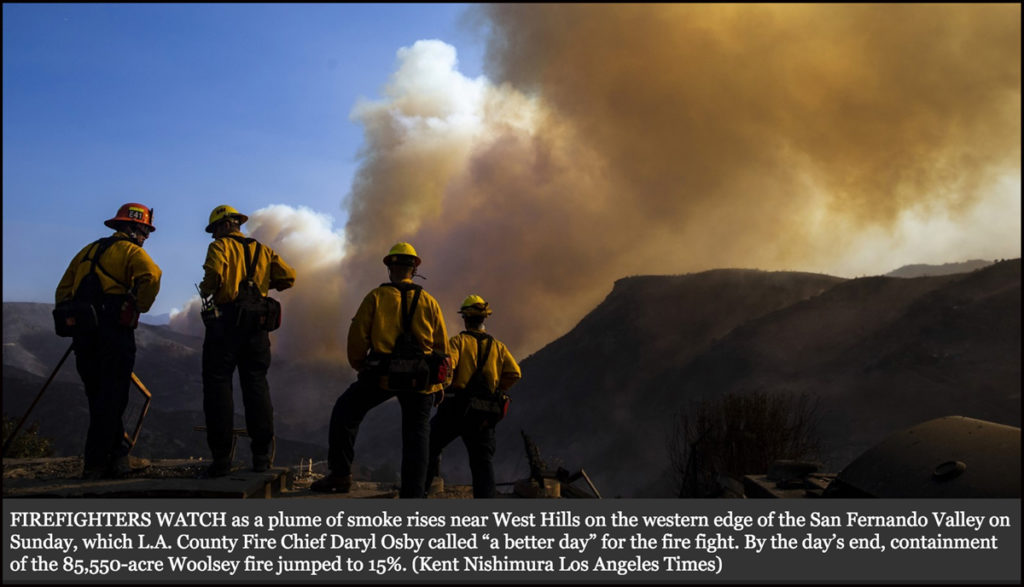
This Los Angeles Times photo (12nov2018) isn’t as dramatic as the multitude of photos that pictured lines and lines of destroyed vehicles that did not escape from Paradise in the Camp fire, but it has massive importance. The San Fernando Valley (SFV) has a population of 1.75 million. If the Woolsey fire had continued east through Calabasas, Bell Canyon, and West Hills the number of destroyed vehicles would have been in the 10s of thousands. I know, this sounds like a ridiculous disaster movie plot, but someday it could become reality. This is the second year in a row when raging fires invaded the SFV. In 2017 fire struck the northeastern and eastern sides of the Valley (and both of those were within five miles of my house), and every effort was put in place to stop them.
Certainly the Woolsey fire in Los Angeles and Ventura Counties (November 2018) has affected me and many other people (and most of them much-much-much worse than me and for many of them their lives will never be as before). … So has my breathing clinic, my Sand Creek manuscript, and my film blog, which preempted this Sand Creek blog, only to get preempted in return (fair is fair). Even though the work on Sand Creek has been ongoing for what seems like a lifetime (read never-ending) things change. …
The Woolsey fire, its devastation, is an example of daily life in California.*
There is a mostly-unpublished fact that has recently come to light
(regarding Northern California). The Camp fire, which wiped
out the town of Paradise (November 2018) and quickly
became the worst and deadliest fire in the Golden
State’s history has a statistic that is frightening.
Between 2003 and 2018 this portion of
Northern California had permits to
build 24,000+ houses. During
this time fire has destroyed
20,000+ homes.
* See https://www.louiskraftwriter.com/2018/01/01/louis-kraft-socal-fires-earthquakes-sand-creek-massacre-an-errol-flynn-tidbit/ for details about the 2017 SoCal fires.
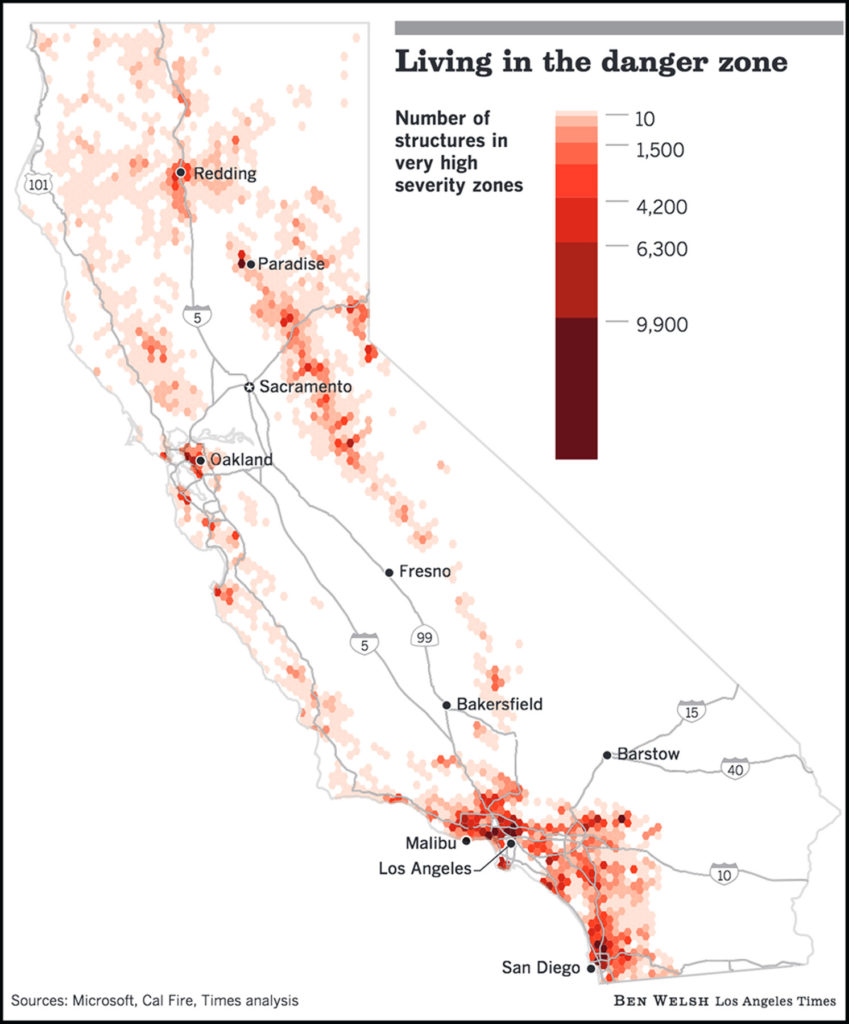 The nightmare is ongoing. A study just released pointed out that over 1.1 million buildings are at fire risk in California, according to the Los Angeles Times (“A million buildings facing fire risk stir cries for action,” 22dec2018; see the map at left and drag it onto your desktop to expand it), that is “roughly 1 in 10 buildings.” The largest number of these buildings are in Los Angeles County: 114,000, “including tens of thousands of Westside and San Fernando Valley houses in the Santa Monica, Santa Susana and San Gabriel mountains”. … The Times went on to state: “The findings follow a fire season of unprecedented destruction—more than 20,000 homes lost, more than 100 people killed—that showed what damage can be done if Californians fail to address a widespread risk.”
The nightmare is ongoing. A study just released pointed out that over 1.1 million buildings are at fire risk in California, according to the Los Angeles Times (“A million buildings facing fire risk stir cries for action,” 22dec2018; see the map at left and drag it onto your desktop to expand it), that is “roughly 1 in 10 buildings.” The largest number of these buildings are in Los Angeles County: 114,000, “including tens of thousands of Westside and San Fernando Valley houses in the Santa Monica, Santa Susana and San Gabriel mountains”. … The Times went on to state: “The findings follow a fire season of unprecedented destruction—more than 20,000 homes lost, more than 100 people killed—that showed what damage can be done if Californians fail to address a widespread risk.”
The real SoCal
California rainfall season is from October 1 until September 31. For the rainfall season ending on 31sept2018 for Los Angeles the rainfall was 4.74 inches.* … Regardless if SoCal has a lucky year of rainfall as we did between 1oct16 and 31sept17, which was about 18 inches (an anomaly), SoCal suffered through the worse year on record for fire destruction in California in 2017. …
* As of December 26 the rainfall for the season that began on October 1, 2018, is 4.26 inches (three months into the year and we have almost reached last season’s entire output). Fingers are crossed.
Even though the destruction during recent fire seasons has increased this century everyone thought that 2017 was an anomaly. It wasn’t. By late spring 2018 the fire season (which now almost feels like it is year round) surpassed 2017. That year two fires came within five miles of Tujunga House (one from the east and one from the north).* What do you take if you must run? Pailin and I know what documentation is mandatory, and we have more than most people for Pailin has gone through multiple processes to obtain permanent residency, obtain a Social Security number, driver’s license, and of major importance pass the required testing to obtain a certificate that she is one of the top massage therapists in California (it is illegal to work in the state if you don’t have this license and raids are ongoing).
* I would need a large U-haul to get my research to safety (not a comforting thought) or a year to digitize it (not going to happen), and this doesn’t include a lot of artifacts, posters, photos, and books).
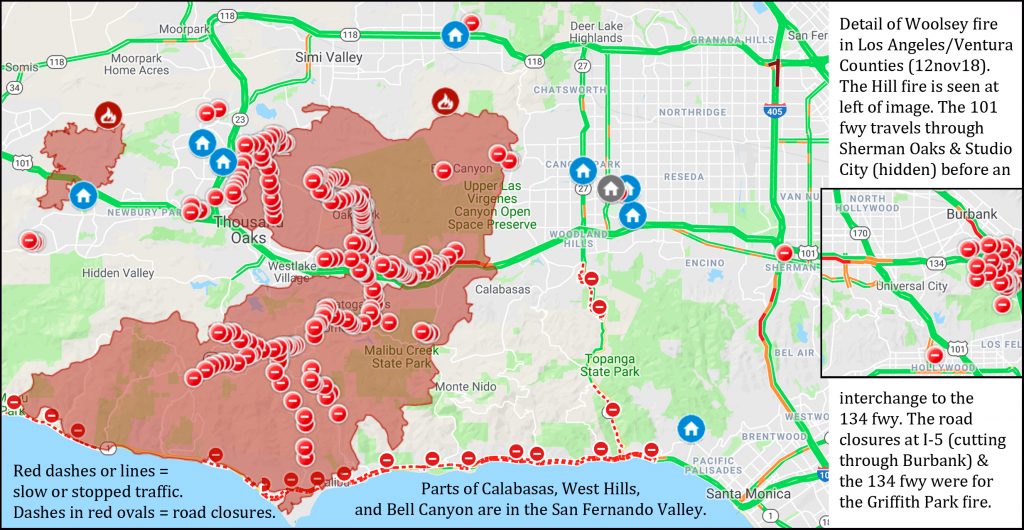
As of 17nov2018 over 98,000 acres have burned in the Woolsey fire. … The Griffith Park fire started on the morning of 9nov2018 where Victory Boulevard crosses over the 134 freeway just east of I-5 at the southern entrance to the Los Angeles Zoo and the Autry Museum of the American West. The brush fire was totally extinguished by the next morning with only 30 burnt acres. Luckily there were no Santa Ana winds on the east side of the San Fernando Valley for the cities of Glendale (east and northern border) and Burbank (to the north and northeast) while the town of North Hollywood was northwest (about seven miles to Tujunga House), … all highly populated areas. (To view a larger rendition of the map drag it to your desktop and open it.)
On 7nov18 fires again struck SoCal with an intent to destroy and kill (a day after the Camp fire in Northern California destroyed most of the town of Paradise (population of approximately 26,000). …What has happened during the Camp fire in Butte County (where the town of Paradise once stood) has been an ongoing nightmare. As of 17nov2018 9,800 homes have been destroyed, the death count currently is 71 (this number is now over 100, but it includes some deaths in SoCal) with 1,001 people still missing (this figure has dropped, but they’ll never find all of the missing). I don’t know what you see outside of California but I see it all. The story of Sand Creek and the Cheyenne and Arapaho Indians is a tragedy; so is the story of the people who once lived in Paradise. Some died in their homes, others died in their cars as they attempted to flee, while even more died after deserting their cars in a last-gasp effort to survive.
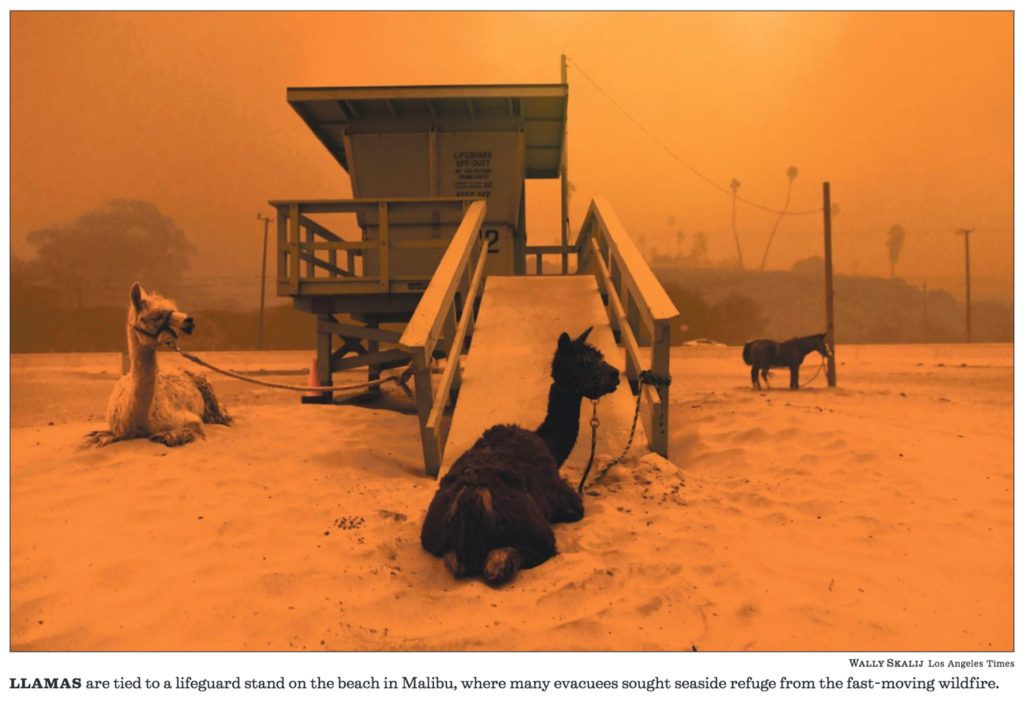
This image of Llamas on a beach in Malibu, Calif., on 9nov18 (© Wally Skalij for the Los Angeles Times) is worth 10,000 words for it shows the horror that has become a yearly occurrence in California. The two llamas, Thunder and Luke (called alpacas in a later edition of the Times), and the horse, Gidget, are west of the Santa Monica Mountains and they are as far west as they can go for just beyond them is the Pacific Ocean. They symbolize not only the destruction of property but also the massive loss of animal life (wild and not). Luckily Thunder and Luke were evacuated to Ojai, a gorgeous valley/small city north of the city of Ventura (Ventura County), and Gidget to a stable in Glendale (a city in LA County; I-5 is its western border and the Ca. 134 freeway cuts through it as it begins to climb the mountain on its way to Pasadena).
My time is short, and the fires in California have again become the fires from hell. I don’t have time to keep writing about this ongoing disaster, so perhaps this social media post will give you some indication of the immensity of the threat: Woolsey fire as related to Los Angeles county on 12nov18. The fire that has ravaged Ventura and Los Angeles Counties was contained around November 19. Some 300,000 people were evacuated in California since these fires broke out in early November; 177,000 lived in Los Angeles County. It could have been worse—much worse—if the Woolsey fire had completed its invasion of the San Fernando Valley, it had the possibility of forcing an additional 1.75 million evacuations.* So what’s the big deal? This example should give you an idea. One of my physician’s office is on Ventura Blvd. in Encino. It is a 10 mile drive. To arrive at a nine o’clock appointment on time I need to be on the road by seven-twenty.
* If the SFV was a city it would be the fifth largest in the USA (only NYC, LA, Chicago, and Houston would be larger).
When the Santa Ana winds strike their speeds can quickly grow from 40 mph to 60 to 75 and more. The firefighters, some of whom at times worked 36 hours straight, had to deal with not only the power of the Santa Anas but also the sudden change of direction.
Many people lost everything but their lives. Everything. Already many know that they can’t rebuild for what they had originally paid for their homes is peanuts in today’s market and unfortunately many could not keep increasing their fire insurance.
My house before moving to Tujunga House was in Thousand Oaks. A very safe and gorgeous city in Ventura County (just north of LA County). It was on a hill, had a courtyard, swimming pool (swimming is my favorite individual exercise; I’ve been a fish since elementary school), and a half-block walk into the Santa Monica Mountains. The house survived as the fire was farther south.
An LK reality
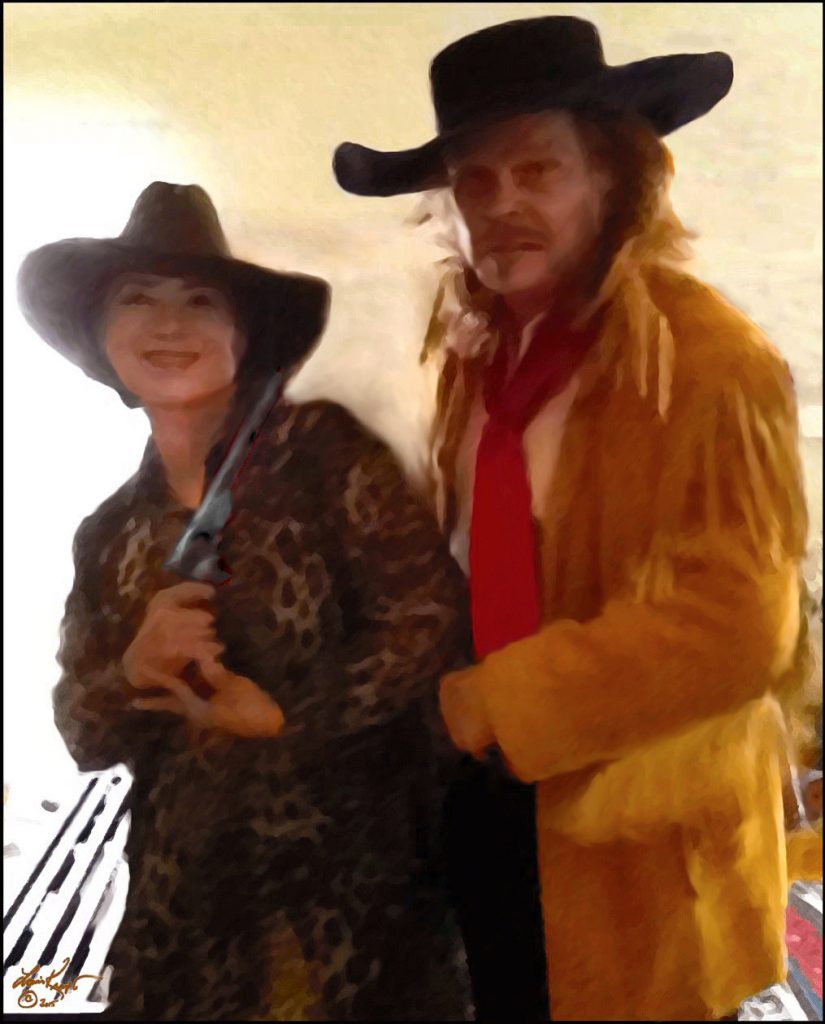
Art of LK and his pistol-packing lady that I began several years after I began pitching the idea of bringing Johnny’s novel to the stage (see the paragraph to the left of this image). I’m a chameleon but this is an image that reappears in my life time and again. … Pailin? She is my lady for all time, and as such she is with me in all my incarcerations. She backs me at all times no matter deep I immerse myself in my projects, no matter how far I drop out of society. She is with me and I am with her. (art © Louis Kraft 2015-2018)
My life is what it is, and it has been this for way for a long time. My world is simple: Protecting three women, surviving, and living to see my Sand Creek manuscript published. This doesn’t sound like much but for me it’s a big deal.
The LK reality is the book projects and the people in my life. Relax for this blog will focus on Sand Creek and the Tragic End of a Lifeway past, present, and future. Long time comin’. … But first I need to get a little personal with the recent past, present, and future. Not that long back I had pitched two friends on me writing a play based on East of the Border, a novel by Johnny D. Boggs, wherein James Butler (Wild Bill) Hickok tours the theatre circuit in the East with Buffalo Bill Cody and Texas Jack Omohundro. Wild Bill feels awkward treading the theatrical boards, is bored, hates what he is doing, and is often drunk. He discovers that when he fires his revolver too close to extras playing dead Indians that they leap to life when the blank firing burns them. He loves this. Type casting for LK? Probably. I’ve wanted to play Wild Bill since the first time I read Johnny’s novel.
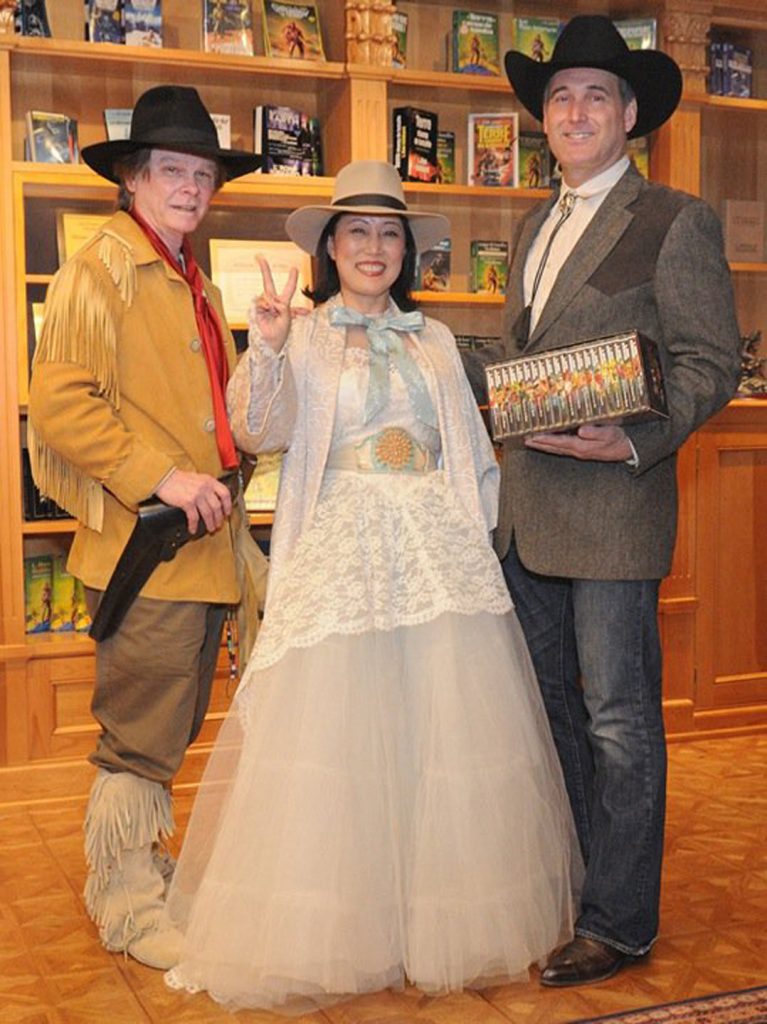
LK, a former friend, and John Goodwin at a Galaxy Press event in Hollywood, Calif., in June 2010. I designed two of the hats (center and left), the buckskin coat, and moccasins years back.
This desire goes back years, and as I’ve said in previous blogs Lisa Smith, Johnny’s wife, said it would make a great play. Still Johnny had been silent (probably because he didn’t want me to adapt his book for the stage). The other key person in this triangle was Tom Eubanks. He had directed all of the Ned Wynkoop one-man shows in Kansas, California, Colorado, and Oklahoma. He, also, wasn’t interested. Eventually I gave up on what I thought would make a good play, and better a great character for LK to play. They probably thought I’d embarrass myself. … I never get embarrassed, and certainly not when I’m wearing a wide-brimmed hat, buckskins, moccasins, and packing an 1860 Colt. Are you kidding?
See https://www.louiskraftwriter.com/2016/09/17/the-tom-eubanks-louis-kraft-ned-wynkoop-errol-flynn-connection/ for images of the Wynkoop one-man shows and Cheyenne Blood, plus more on Tom Eubanks.
I believe in reaching for the stars, … and if I get lucky and my wish/prayers become reality to reach for another impossible dream—that is many more years with my ladies and perhaps yet another book, and another, and another, … and another. Yep! I’m a greedy ol’ dog.
Since the end of May it has been an ongoing string of Sand Creek edits, dealing with the peer reviews, adding new information, checking and double checking citations, searching for key information that I need in the manuscript, reaching out for help with other experts on my subject (which, believe it or not I’ve been living with since the 1980s). This is always a good time for it is totally creative. It’s also a scramble as the manuscript must now come together and flow smoothly between people and events as the story races toward conclusion.
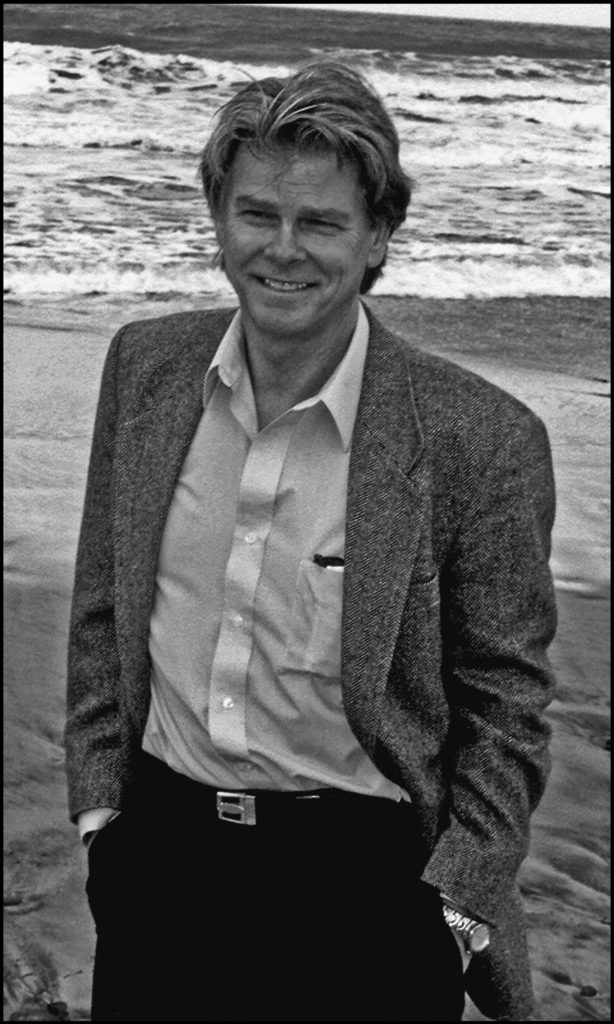
My great friend George Carmichael took this image while we enjoyed the Pacific Ocean in northern San Diego County in March 2001. I met George at a fiction class at UCLA in 1990. We were both writing western novels: His was traditional, mine was modern day on the Navajo Reservation. We didn’t see eye-to-eye, but somehow became great friends until the end of his life on 2apr2014. He was an engineer turned published fictional short story writer while I focused on becoming a novelist. Although I have two published novels I’m proud of (The Final Showdown, 1992, and The Discovery, w/Robert S. Goodman, 2016), I reached an intersection in the road, yanked the wheel to the left, and became a writer of nonfiction. (photo © Louis Kraft 2001)
Sound like fiction? Maybe. Sound like a film plot? Perhaps. … For LK it is nonfiction with many intricate pieces that must merge in a linear fashion and not jerk all over the place. … Been there and done that. But that doesn’t count for the scope of this manuscript is massive and I must connect all the players and events in a manner that makes the reader turn pages.
That’s right—turn pages. I believe that nonfiction is just like fiction, plays, film, articles, talks, and blogs. It must grab the reader’s (or viewer’s) interest at the beginning and hold it until the end. Will I succeed at this? You’ll have to read Sand Creek and the Tragic End of a Lifeway to learn the answer.
Ladies and gents, the question of the Sand Creek manuscript being published in my lifetime is now passé. I’m one tired and skinny cowboy but I get up between four and five with a big grin on my face almost seven days each week.
A big grin, for my tablespoon of organic apple cider vinegar in a glass of water and then a cup or three of coffee begins my days of exploration and confirmation and word-crafting and polishing. … This is a golden time for LK and it gets better as the days pass, for this is just the beginning. See below.
The reality of this time
I don’t want to say that it was bad. At the same time I don’t want to say that it was good.
As I floated for months in a no-man’s zone that hovered between success and failure I was totally alive as each day merged into the next and the next and the next. One edit became the next edit and then the next, with each a challenge all its own. I’m social, very social, and get along with all people (two exceptions being racists and sexual predators that hit on me and other people; perhaps I should add habitual liars to the list). I’m also a loner. Although I want a special person in my life at all times I can thrive in a solitary environment. … Although I have many people that are a major part of my literary/creative world (these people are my best friends), and I spend a lot of time with them via the phone, email, social media, as well as in person whenever I get lucky. When it gets down to the writing it is me, my computer, pens, and paper. Zero days pass without work, and this drives me to the next day and the one after. I live and breathe my work.

This is my lady praying at Tujunga House on 9sept2018. We have two different upbringings, two different cultures, two different languages, and two different religions. When we met we took our time and slowly got to know each other, to respect each other, to trust each other, to explore each other’s lives, and to love each other. (photo © Pailin Subanna-Kraft & Louis Kraft, 2018)
I am with my lady 100 percent of the time day in and day out no matter what our work schedules are. One hundred percent of the time. If someone badmouths her or hints that I should cheat because they have an open relationship I don’t run to the bathroom and vomit. Still you do not want to
hear my opinion of these slimballs for it isn’t printable in this blog or elsewhere. AND I don’t talk about them with friends either. For me
people like this aren’t worthy of mentioning. They are dirt, they mean nothing, and I remove them from my life.
Add racism to the formula, and I can say one thing and it is important—I grew up in a racially-tolerant family at a time when racism was rampant in the USA. Over the years all of us have seen a massive amount of progress to alleviate this hateful and harmful blot on the world. Unfortunately something evil took center stage in 2015 and people embraced a man who has no respect for humankind or women or the truth. This opened a door and racists crashed through it. It is the here and now, but like all evil that has thrown a dark shadow over the world in the past it will be pushed to the side and a humanitarian light will once again shine.
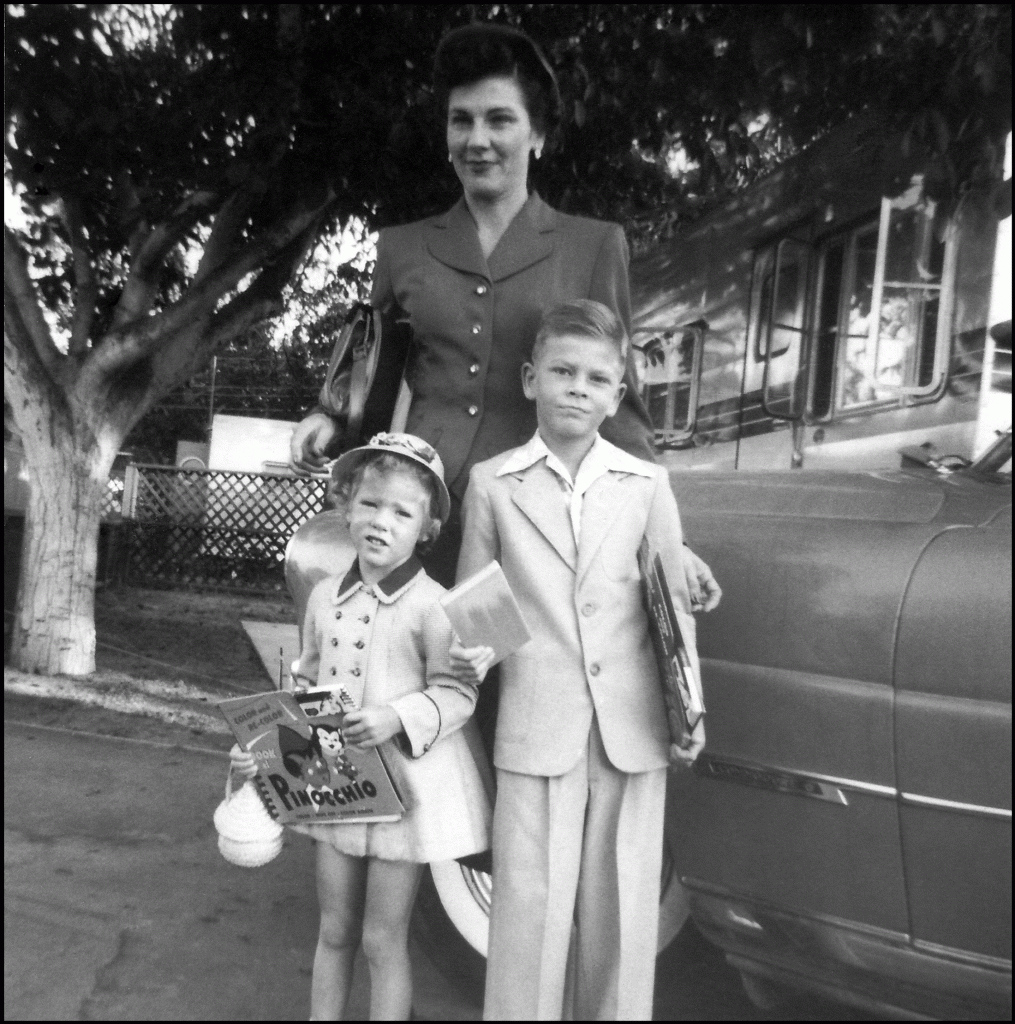
LK (right), Linda Kraft (left, d. 2006), and our mother Doris (center, d. 1980) in 1955 at the Van Nuys trailer park, our first permanent home in Los Angeles after parking the trailer in rural backyards for a long period of time. The car was a 1950 Hudson Commodore and it pulled the 35-foot trailer in the background to California. My dad owned the car from when he bought it in 1950 until 1998, a year before his death (and I had many happy memories driving it). (photo © Louis Kraft 1955)
My first best friend was a Latino (in a time when the word wasn’t used). I was seven and he was five or six. I was Walt Disney’s Davy Crockett and he was my sidekick (actually, he was also Davy Crockett for we were equals, even at that age and time) as we climbed the man-made mountain on the west side of the trailer park where we lived in Van Nuys, California, in 1955. We climbed it and slid down into the wonder of the Los Angeles River that flowed on the other side of what would become the infamous Ca. 405 freeway. We were explorers as we followed the flow of the river on the sandbanks below the trees that lined the water flow. It was a mystical time. Others—not many—also skirted the river; some adults and others younger. Not once were Jesse and I ever threatened. Try to do this in our 2018 world and Jesse Carrera and I would have become easy targets.
A Little about how I write and the Sand Creek peer reviews
Although I write my books from proposals and outlines there are no preconceived directions, and it doesn’t matter what the writing medium is, for I go where the research and the words lead me.
For the record I over-write everything and I don’t care what my subject or genre is. The reason is simple: The more facts, anecdotes, quotes, events, people’s actions the better for when it is time to cut, edit, add, polish, and bring the words together the better chance I have of creating the manuscript that I envision. … At same time I’m totally aware of the contracted word count.
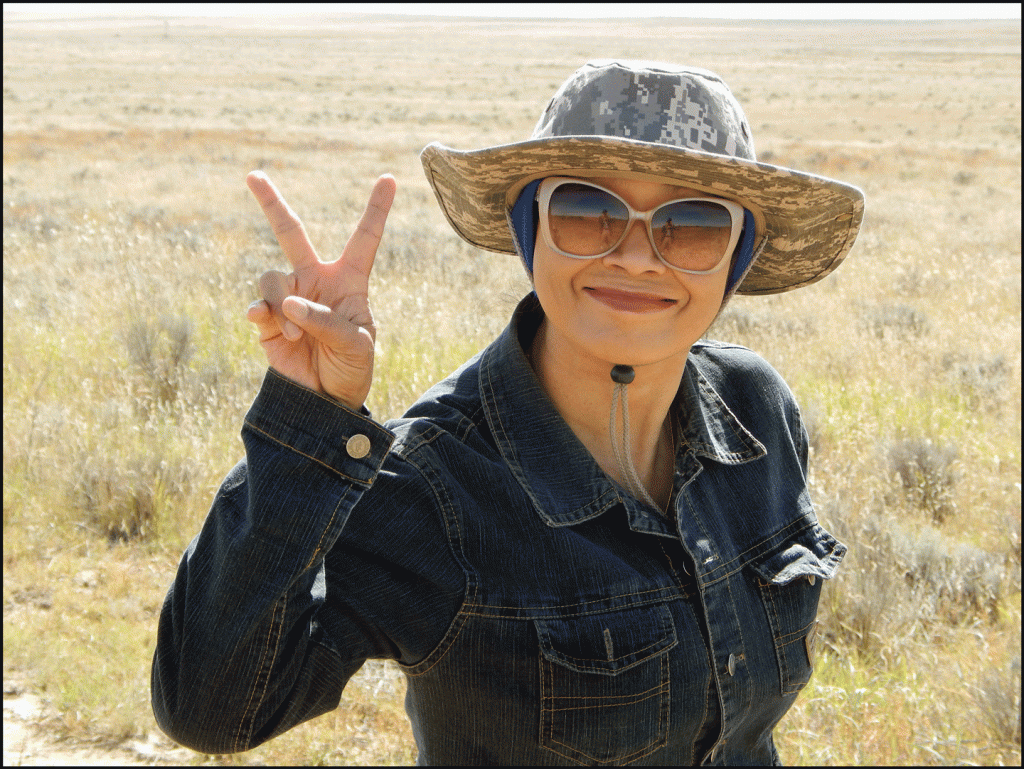
Pailin on the bluffs to the west of the Sand Creek village at the Sand Creek Massacre National Historic Site (NHS) on 3oct2014. Our wonderful friends John and Linda Monnett, whom we had been staying with, drove us there that day. This is one of my favorite images of Pailin, as she is an explorer and as at home in the field as I am. She’s also like me in that she is a little goofball. (photo © Louis Kraft & Pailin Subanna-Kraft, 2014)
I had begun editing the manuscript in June 2018 in the hope to deliver a polished manuscript by 15sept2018—an impossible deadline, and especially so when I received the two peer reviews in early August. As expected they were professional, well done, and with a lot of good comments and questions. As it turned out neither said a word about the huge word count and both highly recommended publication.
One of the reviewers had the following to say about the Sand Creek and the Tragic End of a Lifeway manuscript: “Kraft … purposefully devotes nearly two-thirds of his manuscript to that time before conflict [meaning before the Sand Creek Massacre]. That portion of the work is delightfully original and a marvelous setup to the final third of the book, when for the Southern Cheyennes their world changed forever.”
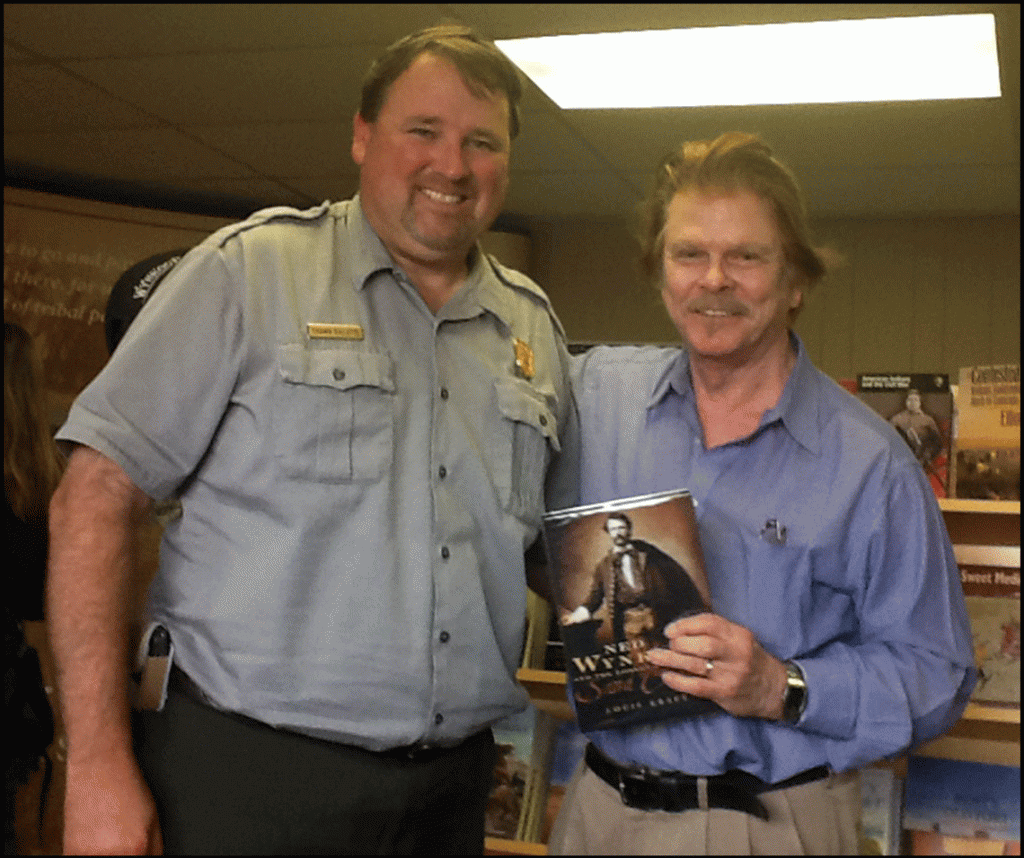
LK with Scott Gillette, chief of interpretation at the Sand Creek Massacre NHS administration building in Eads, Colo., on 3oct2014. Scott has always been open and friendly to me, and he has time and again aided my research. Thank you, Scott. … Oh yeah, they sell Ned Wynkoop and the Lonely Road from Sand Creek. (photo © Pailin Subanna-Kraft & Louis Kraft, 2014)
He went on to say, “Kraft has a fine way with words. … There are any number of Sand Creek histories, some good, some atrocious. Kraft’s point is not to refight the episode but to use it as a defining moment in the telling of a multi-generational history of the Southern Cheyennes, from their earliest appearances through Sand Creek and slightly beyond to the coming of the reservation era. No other Sand Creek history contextualizes this story as he does. Equally if not more important, this reader is unaware of any comparably detailed history of the Southern Cheyennes told within the same broad timeframe that Kraft embraces. That alone makes this work a gem.” Finally this reviewer said something that blew me away: “Kraft knows this story and its primary and secondary sources intimately. He utilizes his sources soundly, challenges in his notes various source shortcomings, contradictions, and nuances; notes where sources have been misused by others; and in all fashions a story destined to be deemed, I believe, definitive on the subject.”
Whew! …
Heady words, kind words, and I didn’t expect them. I hope that they prove out to be true. Time will tell.
I had miles to walk and thousands upon thousands of words to cut while fine-tuning the story line and polishing.
A return to the Woolsey fire destruction
I can’t walk away from the Woolsey fire and its destruction of film history. In July 2016, I traveled to Lasky Mesa, a massive mountainous and valley area (in the Upper Las Virgenes Canyon Open Space Preserve), an easy 35 minute drive from my house on Victory Boulevard). I met companion at his apartment on that day, and he drove. After parking in the lot where Victory Boulevard dead-ends at to the eastern entry to the Open Space Preserve you have perhaps a two-mile hike around and over hills as you work your way to an open area surrounded by hills and in the distance mountains—Lasky Mesa. Dirt roads and paths meander through the area and down into small canyons. That July there was a lot of dried grass up to my knees.
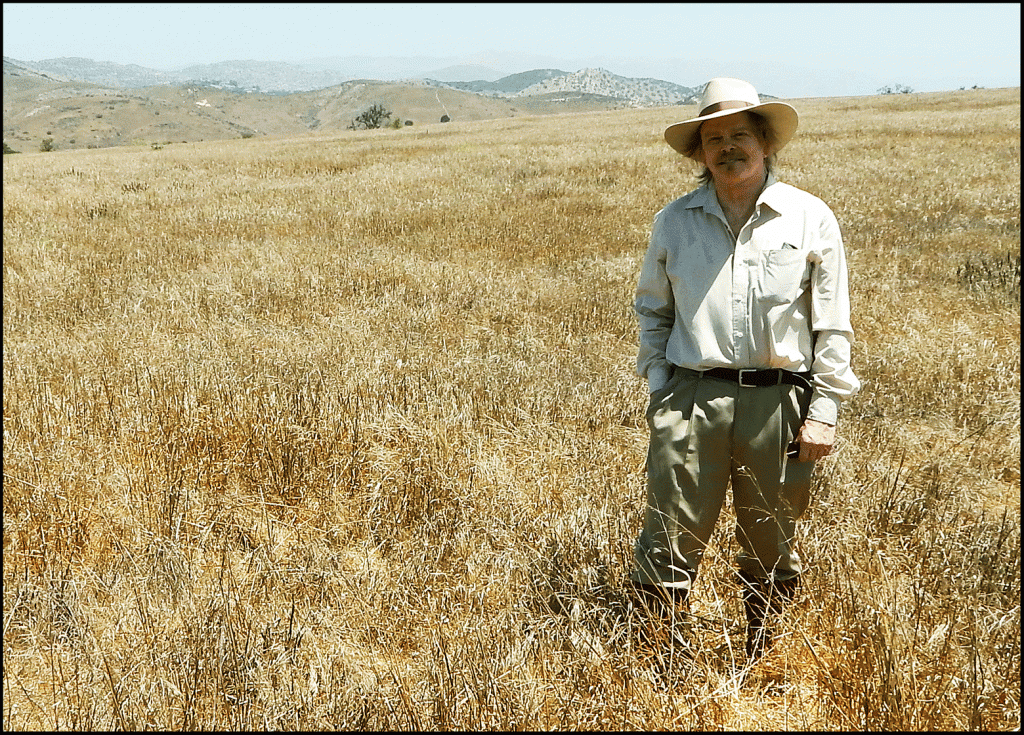
On 13jul2016 LK stood where Errol Flynn’s Seventh Cavalry rode to their death in They Died with Their Boots On (Warner Bros., 1941). (photo © Louis Kraft 2016) … For the record three of the eight Flynn-de Havilland films were westerns, and all had back stories that will be dealt with in detail in Errol & Olivia.
This mostly-ignored hilly area has been seen in many major films from the Golden Age of Cinema. This includes Errol Flynn’s glorious death as George Armstrong Custer (They Died with Their Boots On) that was shot in fall 1941. That day I saw the tree near where Errol Flynn and Alan Hale sat upon their horses as the coach with Flynn’s then wife Nora Eddington approached at the end of Adventures of Don Juan (Warner Bros., 1948), … as well as the tree from a famous scene from Gone with the Wind (Selznick International Pictures/MGM, 1939). I have this film on DVD but have not seen it in decades (and never in one complete screening) as the film bores me to tears. However, for Errol & Olivia (and sooner than I now expect) it will become a film that I study in detail while I decide what I’ll say about Olivia de Havilland’s performance.
Hours of 100+ temperatures put me in trouble by the time my research on Lasky Mesa neared conclusion. I had a backpack with a lot of water but the heat soared to 105-106 degrees (as I knew it would). By about three in the afternoon I headed back to the parking lot where the car was parked. One problem. I still had a long walk in front of me. Would I make it was not only on my mind but a true threat. I climbed a hill only to continue to meander to the right and left as I descended, climbed, and worked my way back to the vehicle.
Lasky Mesa is north (or east) of the Ca. 101 freeway as it slices northwest and skirts the Pacific Ocean. Soon after one can exit the 101 and drive west on Kanan Dume Road toward the Santa Monica Mountains until it reaches the Pacific Ocean. To the north of the road as it begins to enter the mountains is/was the Paramount Ranch (a back lot for a major film studio in Los Angeles during days gone by).
Fire devastation beyond human tragedy
But by no means has this been only humankind’s loss. The devastation has been beyond belief throughout California over the last few years, and not just to the families that have lost everything (many of whom won’t be able to rebuild as the cost has become prohibitive), but also for the loss of the trees and grasses and plants that are native to Southern California (actually all of California). And I cannot forget the wild life, many of whom have been forced to share their land with invading humans. I’m certain that this has not been an easy adaptation for them.
Lizards
I have pet lizards. I call them pets as I talk to them and often they listen, but they aren’t pets. I walk carefully when they are present as I don’t want to frighten them for they are wild. … I don’t know their view of me, but I consider them friends.
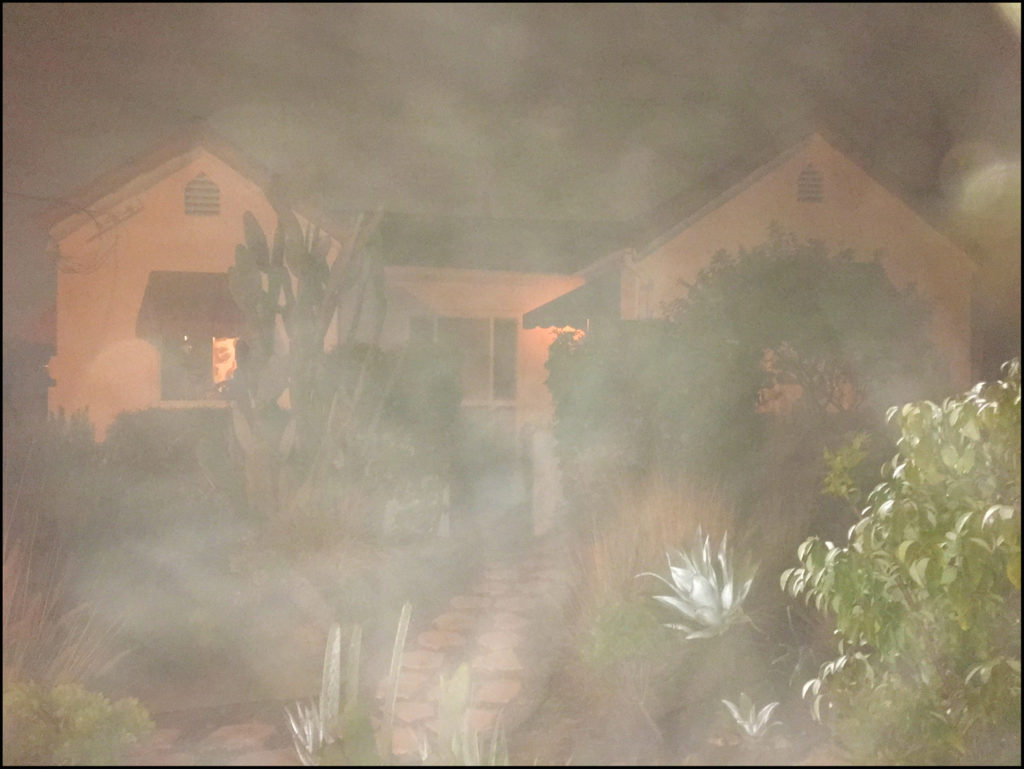
I took this photo of Tujunga House at 4:41 am on 6feb2018. It is a photo, not art, and it is full frame. There was an early morning fog and I took advantage of it and captured some great images. The foreground light was provided by a telephone pole that is just south of the driveway. The front yard is a good portion of the lizards’ homeland, and it is a wonder to watch them enjoy their environment. (photo © Louis Kraft 2018)
I don’t feed the lizards, but Pailin and I have created a home for them on the north side of the driveway with two pieces of granite near a huge bougainvillea in a plantable area that I cleared except for one white rosebush. The lizards discovered that the granite provided shelter from the elements and they have made the area their home. Tujunga House is surrounded by mostly desert vegetation. I don’t water often, but when I do it is for my lemon trees, bamboo, and roses (Pailin makes rose tea). Every so often I’ll water a plant that needs it, only to give one of the lizards a shower. It darts away, stops, turns and stares at me, almost as if saying, “What the hell are you doing?” … They know that we keep two monsters (a Vette and an M-B), and when they come to life and growl the lizards get off the driveway to where they will be safe and watch until the beasts come to a halt or leave their land. …
How many lizards died in the Woolsey fire? I could never venture a guess, but I know that it was way-too-many.
P-64
Here I’m also talking about an animal that is my favorite as it is so sleek and graceful (more so than wolves or horses or coyotes or doberman pinchers, my other favorite animals). They are sometimes called panthers, but much-more often pumas. They are mountain lions that live in Los Angeles (city and county). When caught, and they are never harmed, they receive a GPS collar, tagged, and given a name designated with a “P-” and a number. They are then returned to their habitat, tracked, observed, but never fed or pampered. If sick, and cameras are set up in areas they frequent, and their condition is captured, they are medically treated and returned to their homeland that ranges through the Santa Monica Mountains that separate downtown Los Angeles, the Westside, and the beaches from the San Fernando Valley (SFV) and the Ca. 101 freeway that connects downtown Los Angeles with the SFV (population of 1.75 million) to Agoura Hills, Malibu, Westlake, Thousand Oaks, Oxnard, Ventura, and onward to Santa Barbara and beyond.
 Above is P-64 in the photo (courtesy: National Park Service). He was captured in February 2018 in the Simi Hills, Ventura County (northwest of LA County) and fitted with his collar and tag in his ear. This image shows him exiting a blind culvert that is in total darkness as it zigzags under the Ca. 101 freeway. The day after he was set free he became the second puma to be captured on film crossing the 101 freeway (I don’t believe that it was this image). Since that time he crossed not only the 101 but also the Ca. 118 freeway that slices through the northern portion of the SFV and into Simi Valley. It is not known how many times he crossed these freeways risking death by dodging speeding autos during night hours (unfortunately numerous mountain lions have lost their lives doing this), but he was tracked doing it forty-one times since he received his collar.
Above is P-64 in the photo (courtesy: National Park Service). He was captured in February 2018 in the Simi Hills, Ventura County (northwest of LA County) and fitted with his collar and tag in his ear. This image shows him exiting a blind culvert that is in total darkness as it zigzags under the Ca. 101 freeway. The day after he was set free he became the second puma to be captured on film crossing the 101 freeway (I don’t believe that it was this image). Since that time he crossed not only the 101 but also the Ca. 118 freeway that slices through the northern portion of the SFV and into Simi Valley. It is not known how many times he crossed these freeways risking death by dodging speeding autos during night hours (unfortunately numerous mountain lions have lost their lives doing this), but he was tracked doing it forty-one times since he received his collar.
P-64 was a pathfinder and adventurer in that he expanded his habitat while trapped inside civilization. This was how it always was for him; the only life he ever knew. Then fire, fire, and more fire that increased time and again over recent years. But this time it wasn’t beyond the next hill—it was all around him. On November 26, and again on the twenty-eighth his GPS tracked him. But Jeff Sikich, a wildlife biologist who tracked the four-year old, said he was caught between the avalanche of blaring sirens, an army of firefighters, and frantic humans, and moved back into the burnt area near Oak Park and the Simi Hills in Ventura County. Glen Williams and I discussed P-64 in detail on December 10 and decided he was terrified and chose the best of his two options.
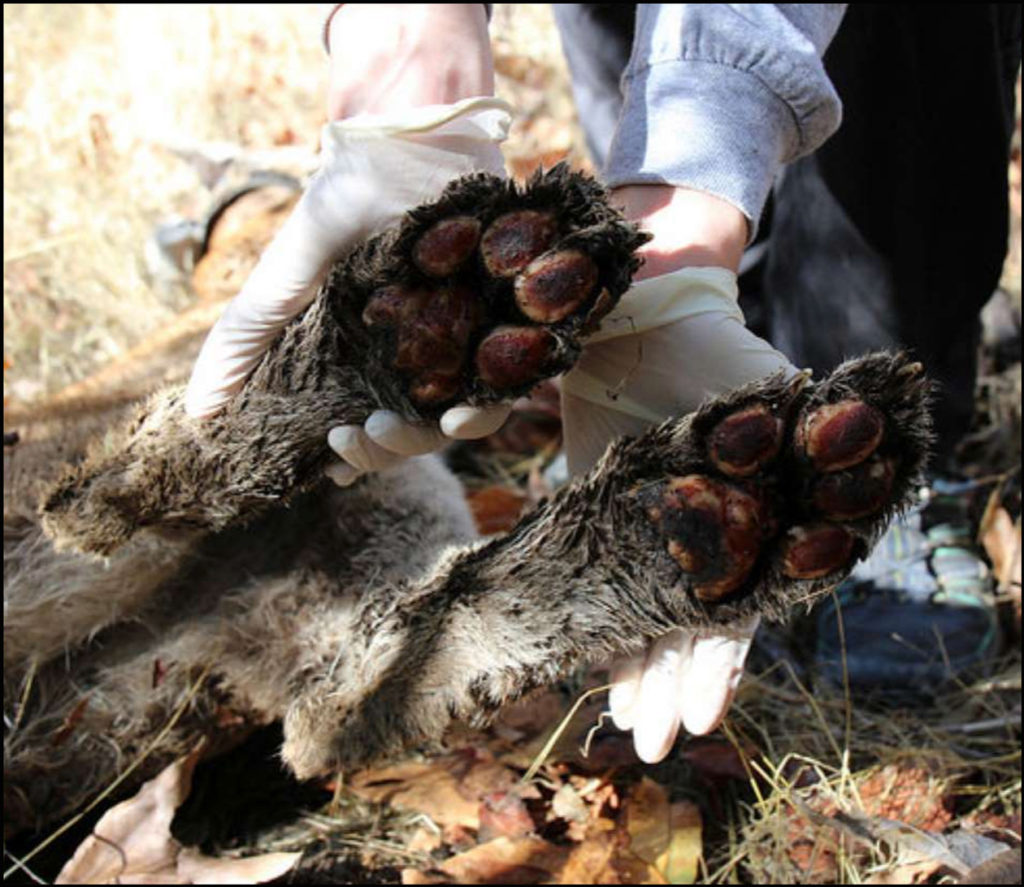
I believe that this is Jeff Sikich displaying two of P-64’s paws. Sikich located him near a streambed on December 3, 2018, about two or three days after he died. He wasn’t burned by flames but was forced to cross hot embers. The burns were severe, which would have hindered his hunting. It has been surmised that the burns might have led to infection. (photo courtesy: National Park Service)
The pumas have adapted to the massive encroachment upon their homeland. They cross freeways and range north and east and west of the San Fernando Valley. Some are in the San Gabriel Mountains that are on the northern side of the San Gabriel Valley (the next valley to the east of the SFV, where I wrote for software companies for 12 years). Mountain lions are predators and they do live off the land. Thus one must be careful when in their territory.
Our mountain lions are famous and often the Los Angeles Times prints articles of births, status, activity, and accomplishments of those we have come to know (and in my case, and friend Julie McHam) care about. Unfortunately the Times also shares their end of life.
Another piece of Hollywood lost to flames
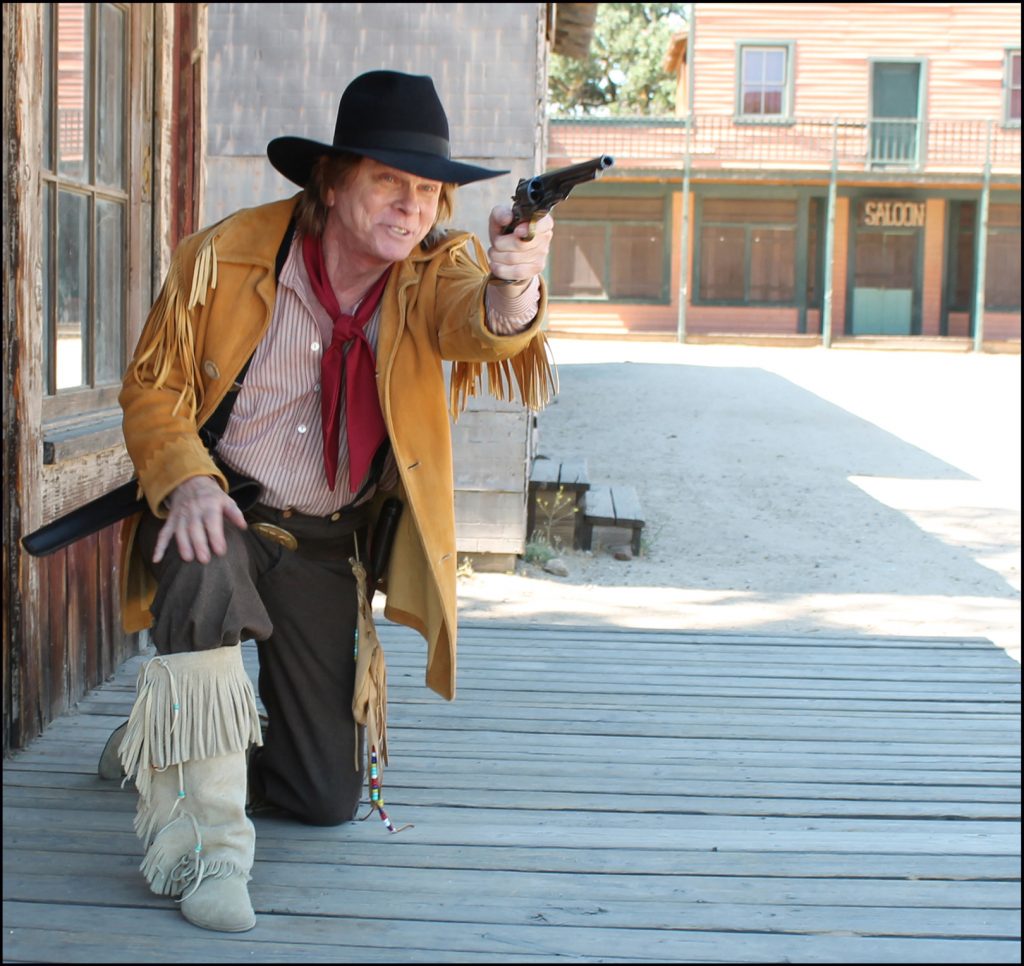
This is one of the photos that Glen Williams shot at the Paramount Ranch on 25may2012. (photo © Louis Kraft & Glen Williams 2012)
To the north of Kanan Dume Road as it moves west from the Ca. 101 freeway and toward the Santa Monica Mountains is/was the Paramount Ranch (Paramount Pictures was a major film studio in Hollywood during the glory days long gone; so many mergers and purchases have happened I don’t know who owns it now). I worked at the studio in the ’70s and early ’80s; Nice place to work. My bro Glen Williams and I did a photo shoot at the western town on the Paramount Ranch (just building fronts for all interiors would be shot on sound stages) in May 2012. A good day for LK. In the dark ages I earned money as a model. Hated it! But the money paid bills. This modeling with Glen (as was other great excursions with him) was for companionship, as well as photos that might be used for publicity or for artwork. … Sadly the Paramount Ranch no longer exists. It had provided locations for films and now it is a piece of California history.* Just thinking about this brings tears to my eyes.
* Friend Dennis Clark saw in his local newspaper that the western town would be rebuilt within the next 24 months. My fingers are crossed that the article he read is accurate. If yes, Glen, ol’ bro, we need to do a Paramount Ranch photo shoot 2. If yes, I want our ladies to join us and make it a foursome.
Wynkoop and the Sand Creek manuscript
Errol Flynn’s portrayal of George Armstrong Custer (They Died with Their Boots On, Warner Bros., 1941) brought me to Custer, a lot of articles, talks, and Custer and the Cheyenne: George Armstrong Custer’s Winter Campaign on the Southern Plains (see Custer and the Cheyenne wins the Jay D. Smith award for its contribution to the study of Custeriana), Upton and Sons, Publishers, 1995).
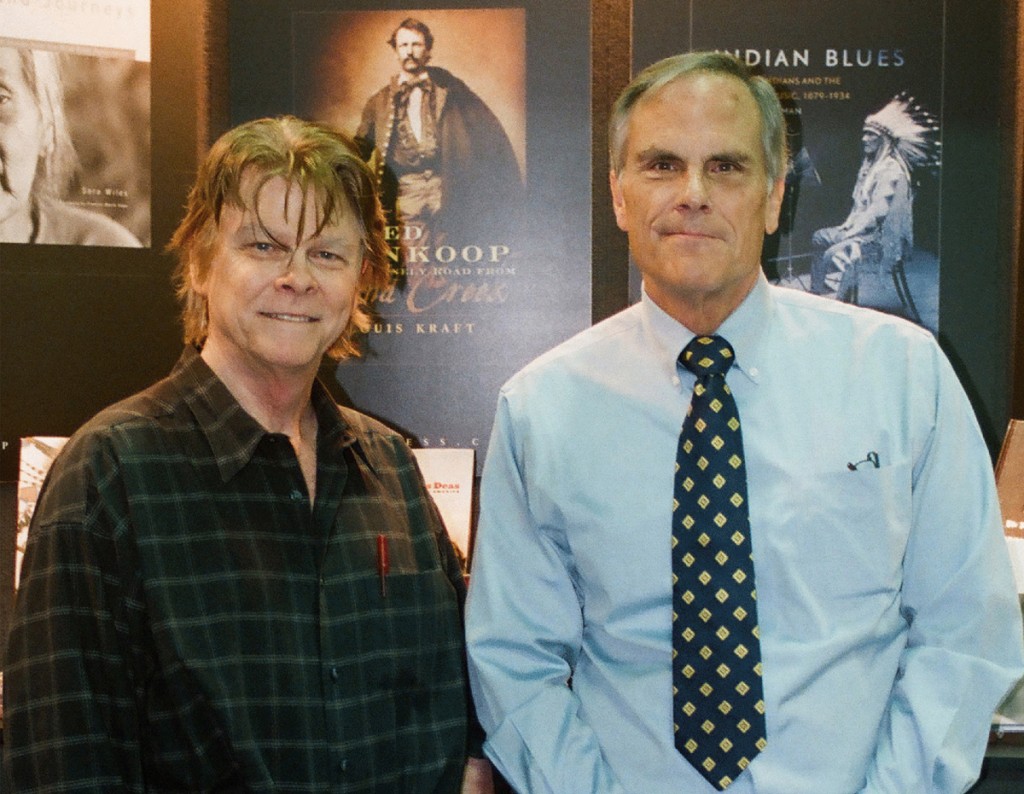
LK with Chuck Rankin at the Western History Association convention in Oakland, Calif., on 15oct211. Ned Wynkoop and the Lonely Road from Sand Creek premiered at this event. The poster in the background is now displayed at Tujunga House. (photo © Louis Kraft and Chuck Rankin, 2011)
Mr. Custer brought me to the Cheyennes and a fellow named Ned Wynkoop. When I started writing and talking about Wynkoop in the 1980s (and he had a lot to do with Colorado Territory history in the 1860s) I never dreamed that he would lead me to a major player in my writing life that I didn’t meet until the beginning of this century—Charles (Chuck) Rankin, the former editor-in-Chief of University of Oklahoma Press (OU Press). Chuck played a big part in the development of Lt. Charles Gatewood & His Apache Wars Memoir (University of Nebraska Press, 2005). We spent many years talking about Wynkoop as we developed a proposal that would work for both of us. When we got together in Oklahoma City in 2006 he said to me that the beginning of a manuscript draft I sent him was a little light in content. “… And I’m 15,000 words over my contracted limit,” I replied. “Why don’t we spilt the manuscript into two books?” “Let’s think about this,” he said. During the next month or two he agreed to increase the manuscript from the contracted 90,000 words to 125,000 words.
Shortly before Ned Wynkoop and the Lonely Road from Sand Creek (OU Press, 2011) went into production Chuck asked me if I’d like to write a book about the Sand Creek Massacre. I told him, “No. I write about people and not war.” Chuck refused to walk away and over the next year or so we talked in person, on the phone, and via email. We worked on a proposal that was suitable to both of us. The contracted word count was 125,000-135,000, and I needed the higher number (and more) as the scope was huge to show and not tell what happened.
That was then … this is now
In April of this year I was informed that for the Sand Creek manuscript to be published in 2019 I needed to submit a completed draft for peer review, deal with the peer reviews, and deliver a polished manuscript no later than 15sept2018. As I didn’t have a completed rough first draft … on May 31 I delivered an incomplete but huge draft for review. I don’t gamble with cards or money but I do gamble with my projects. This was a big-time LK gamble for one and certainly two thumbs-down reviews would end my relationship with OU Press.
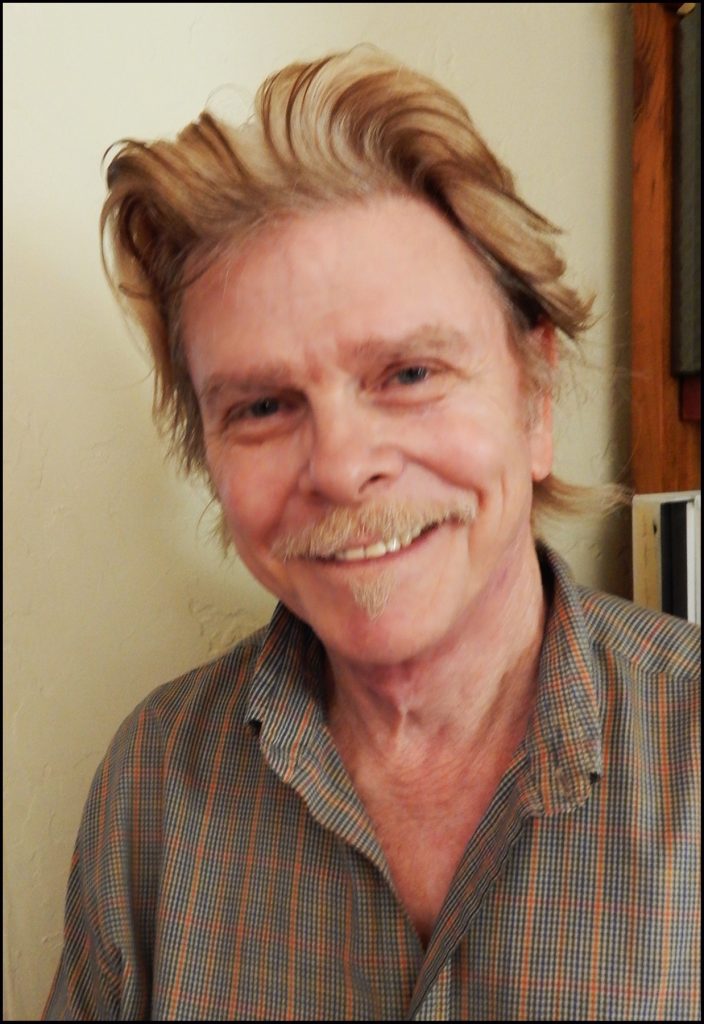
LK image shot by Pailin on 4aug2018 by request of the OU Press Publicity Department. There were exteriors with a hat and interiors w/o a hat. This photo I like (as I’m happy) but it is slightly out of focus (photo © Louis Kraft & Pailin Subanna-Kraft 2018)
It was an impossible task, and one I knew would never happen. … Still I dug in and pressed forward. In early August I received the two peer reviews. Both were positive and provided first-class comments (which required additional words), and more important neither mentioned that my incomplete manuscript was huge or that I should trim the word count (which was then 204,000+).
Hey Kraft, this mess is your creation.
I know. … and as I said above the more words, events, and character development I have the better it is to cut, add, edit, rewrite, and polish. In other words I am now in LK heaven (or perhaps LK hell). My days and nights merged—became one. Sleep was a delicacy that I no longer had. Days passed and September 15 loomed. Delivering a polished manuscript that was close to the required contracted word limit vanished. Current OU Press Editor-in-Chief Adam Kane upped the word count to 150,000. This was impossible and I told him I needed 160,000 words or more.
On September 14 I emailed Adam and told him that I would not make the 15th deadline (meaning there would be no publication of the book in 2019). A big loss as I don’t want to be like Errol Flynn and have my last book published after my death, a scenario that walks with me more often than desired. Back to the positive, missing that deadline was a godsend.
September 15 came and went, and I pounded the keyboard. A hundred words gone, a thousand words gone, five thousand words gone, and more and more. As I knew it would, the manuscript tightened and flowed.
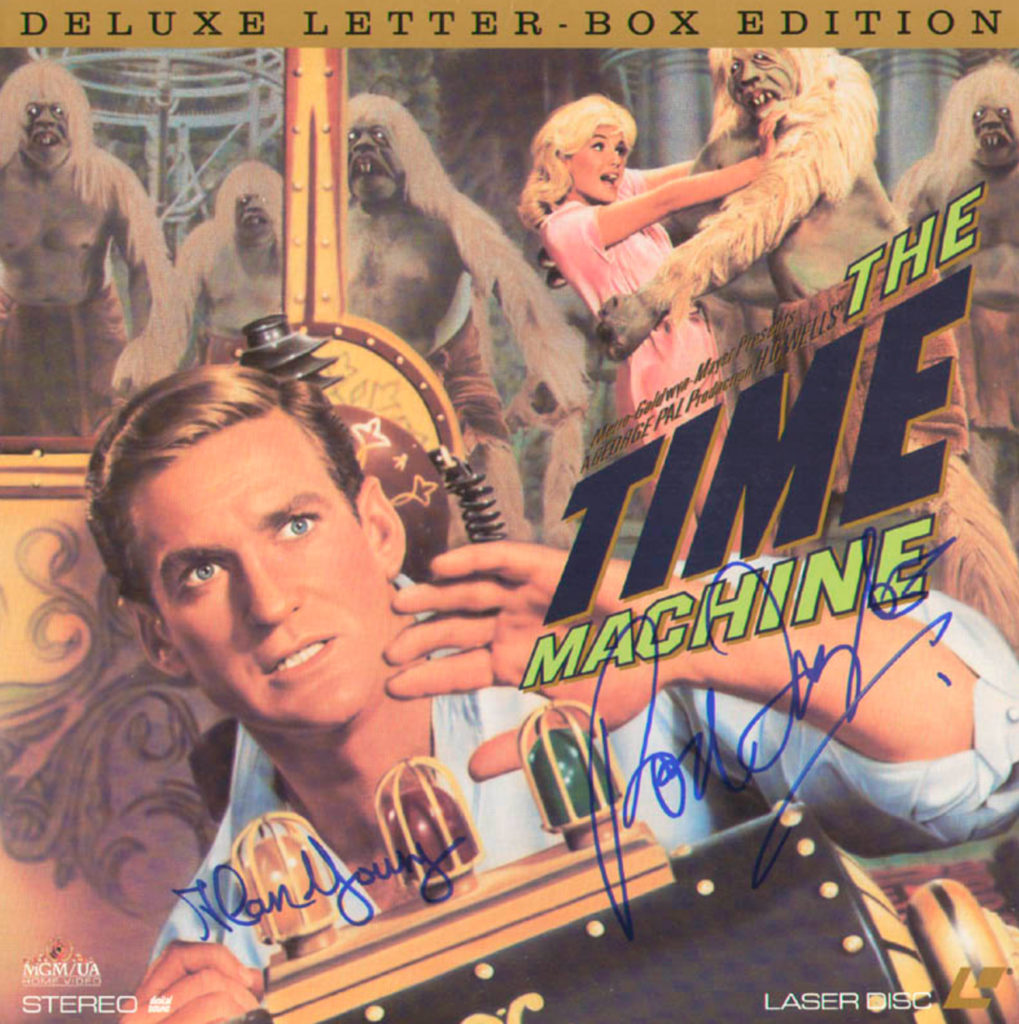
An example of a long-gone Laser Disc cover of The Time Machine (MGM, 1960) signed by Rod Taylor and supporting player Alan Young. The film was extraordinary in 1960 but it hasn’t survived time well, mainly because special effects have seen lightyears of improvement since the ’60s. Taylor’s performance was decent, but this film is not close to being in my upcoming top 50 LK films blog (tentatively scheduled for late March 2019), which will also feature Valley CORF (Tarzana, Calif.), a breathing, balance, and strength clinic that has done wonders for LK. … There is a good chance that Taylor will have three films on the list.
It was almost as if I was Rod Taylor in his star-making film The Time Machine (MGM, 1960) as I sat in front of my computer for the days flashed forward at lightening speed and words changed, sometimes to grow while often many disappeared in an ongoing merge of days, weeks, months.
This was my now while it was also my then. A vast desert of sweltering heat that I’ve walked time and again. Familiarity beckons confidence. Been there! Done that! … and I know the outcome. We’re talking about my freelance writing, but we’re also talking about my twenty-plus years writing for the software world. ZOOOOOMMMMMM!!!! I’m Rod Taylor riding his time machine … NO! I’m LK sitting tall in my chair as my fingers dance over the keyboard and my monitor flashes the changes in real time. I’m alive in my world. …
My world! …
Two hundred four thousand plus words fade into history for it has become 197,000, 191,000, 185,000, 179,000, 173,000, 168,000, 165,000 … and counting.
Today’s Sand Creek and the Tragic End of a Lifeway
The “was” brought me into the “now.” On 15nov18 I delivered my “last” rough Sand Creek draft to Adam Kane. Actually by an email mistake, but that didn’t matter as I had anticipated making the delivery on November 16, which would have been the same draft minus a few files that were meant LK’s eyes only.
I will deliver the maps to cartographer Bill Nelson and Adam on January 7, 2019, and my polished Sand Creek draft to Adam on the fourteenth.
I have been collecting possible events and locations for the maps as I have worked my way through my manuscript polish. At the moment there are a fair amount of choices but most will be eliminated as space is limited. I don’t want to tell you what the selections are but those chosen will be based upon what I consider primary locations and actions during the flow of the text.
As stated elsewhere in this blog I do everything possible to show and not tell in my books. I can’t begin to tell you how important this is—at least to me. When Chuck and I created the 37-page proposal for the Sand Creek manuscript “show and don’t tell” was forever front and center. This takes more words but the extra words are worth their weight in gold a thousand times over when the book is published. This is as it should always be. Words are mandatory but it is the showing that must grab the readers and never let go. If done correctly the reader will turn pages, and more than they anticipate. From my POV this is how all books should be written. … Honestly, any book that puts you or me to sleep after two or three pages is a piece of crap and I don’t give a bleep about its reviews or awards or how many books have sold. In some cases all are valid and well earned. However, sometimes they are not. If you live in LA you would know that we suffer through a film/TV awards season that begins in the early fall and doesn’t end until the last Oscar is presented the following year (next year’s presentation is on 24feb2019). The amount of money spent stuffing “created” contenders down our throats on a daily basis is obscene. You don’t want to hear my views on this for they aren’t printable. It’s a part of the world, … just not my part. Pardon my English, but ass-licking or paying big bucks to win an award is something I refuse to do.
Maps
Until the Ned Wynkoop and the Lonely Road from Sand Creek I had created the maps for my previous books. Believe it or not over the years I improved my skill at creating them.
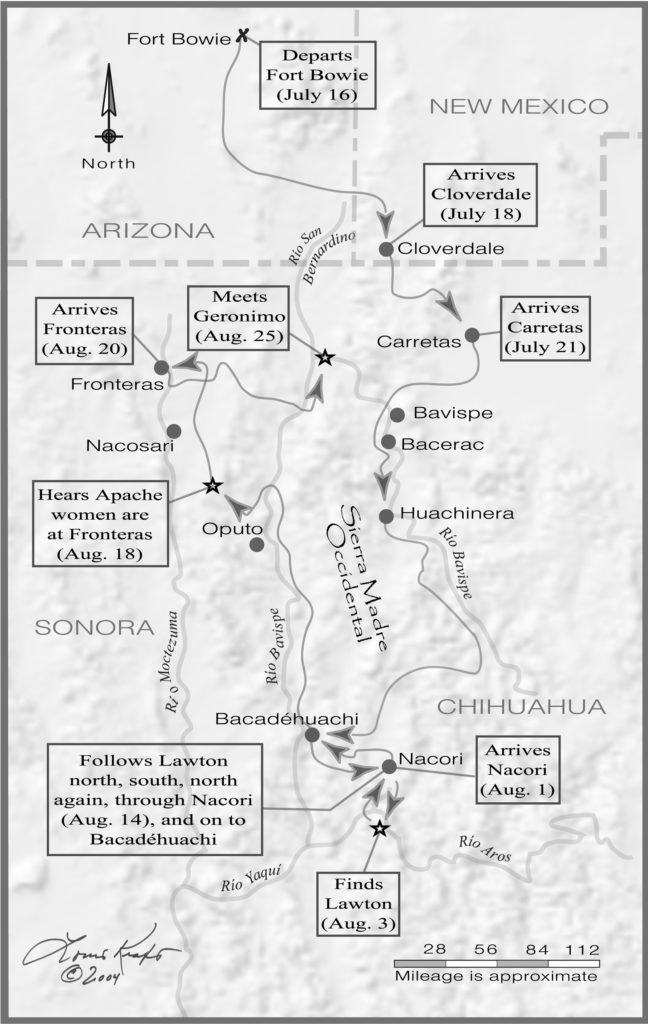
This map from Lt. Charles Gatewood & His Apache Wars Memoir (University of Nebraska Press, 2005) was reprinted in Lt. Col. Paul Fardink’s (USA-Ret.) article, “Lieutenant Charles B. Gatewood: Premier Cavalry Soldier of the American West,” in On Point: The Journal of Army History, winter 2014. Paul had interviewed me for the article and had wanted it at the end of his prose. The editor disagreed and moved it into the flow of the text and it worked out fine for Paul and myself. Paul’s article is terrific and I’m proud to be part of it. (map © Louis Kraft 2004)
Two of my maps have been reprinted. The Custer and the Cheyenne (1995) map that illustrated Custer’s attack on Black Kettle’s village on 27nov1868 appeared in Sandy Barnard’s A Hoosier Quaker Goes to War: The Life & Death of Major Joel H. Elliott, 7th Cavalry, 2010). The lone map from Lt. Charles Gatewood & His Apace Wars Memoir (University of Nebraska Press, 2005) illustrated Gatewood’s search for Chiricahua Apaches Geronimo (war leader and mystic) and Naiche (the last hereditary chief of the tribe) and the remnants of their people in Sonora, Mexico, in July-August 1886, and then talked them into returning to the United States and surrendering for the last time.
Chuck Rankin wanted me to use a cartographer for the Wynkoop book and this request began my association with Bill Nelson, whom I hired to create the maps from my rough drafts. The entire creation and review process was a total pleasure, and his maps are first class.
Adam had requested rough drafts of the Sand Creek maps, and all was a go with me supplying them to him and Bill Nelson (who I again contracted) by the end of December, which I have since moved out to January 7, 2019. … On 10dec2018 Adam told me, “We are fans of Bill’s work here so look forward to seeing the new ones for this latest book.”
I’m not going to tell you how I’m prepping the new maps, or what’s going to be in them but if all goes well they will include some locations/actions usually not seen on maps.
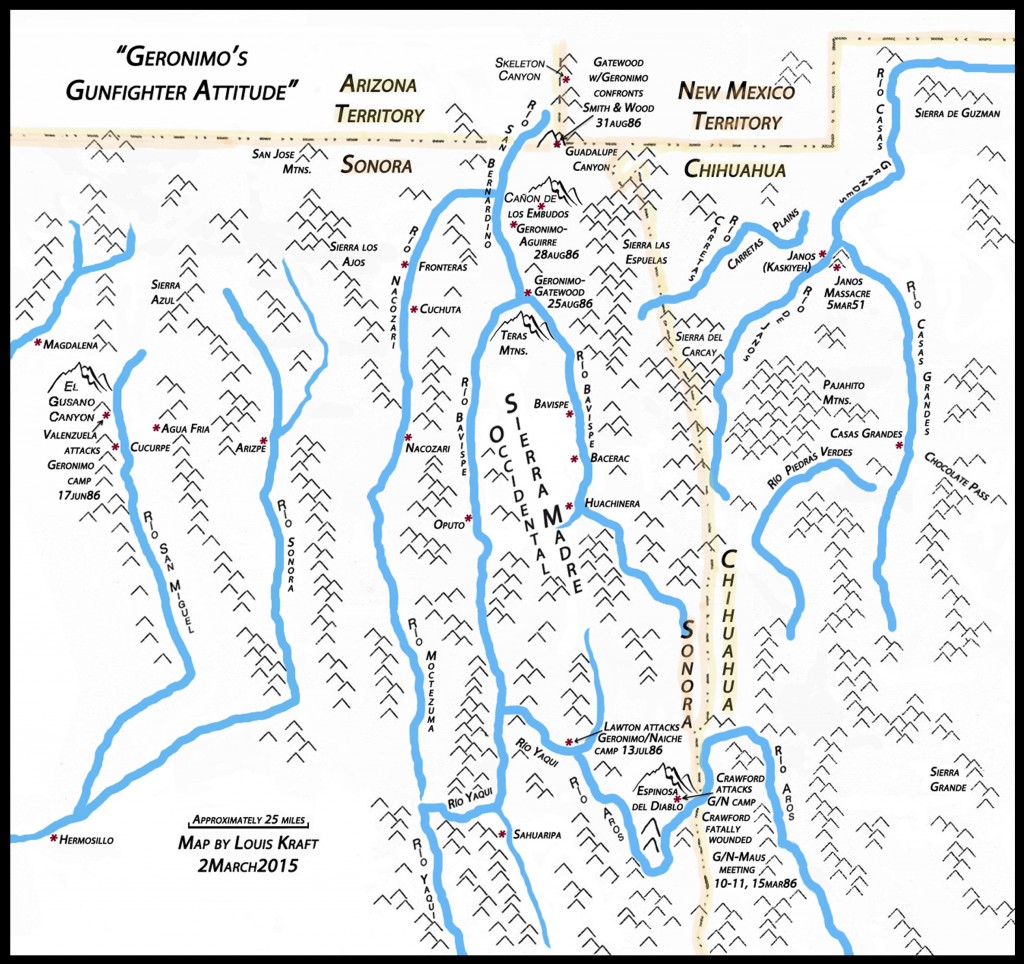
This was the rough draft that I submitted to Wild West for my feature on the Chiricahua Apache war leader Geronimo (“Geronimo’s Gunfighter Attitude,” October 2015). Not to brag but some of the locations had never before been placed on a map. A lot of work, and although the magazine’s cartographer created the final map from my draft Editor Greg Lalire and WW, both of whom have always been kind to me, paid me for this draft. (map © Louis Kraft 2015)
I have been selecting possible locations and actions for the map drafts as I work my way through what will be my polished draft of the Sand Creek manuscript. I had pitched a third map to deal with the Sand Creek village at the time of the massacre. All of the printed maps that deal with the massacre are incomplete at best and misleading at worse. I’m not going to reprint any of them or create a new map based upon them. There is current information that I am not privy to, and if I cannot learn the details that are available but not shared there will be no Sand Creek village map in Sand Creek and the Tragic End of a Lifeway. … Not my choice, but I’m not going to print a map based information that I don’t consider valid. If this becomes reality—and I pray not—there will be no third map unless I have a replacement map that I’m not yet completely sold on (but on the plus side it might dip into Old Mexico).
How can this be Louis? Simple; about 8,000 words deal with the massacre, making it a small piece of my Sand Creek story. Not to worry for the SC massacre section is explosive and graphic. The goal here has always been to grab the readers and not let go (we’ll see if I succeeded when the book is published). Still, I want a map with the most up-to-date information about the Sand Creek village circles if indeed they are known, and I don’t think that they are. If so, they are a well-hidden secret. For the record I know the names of 15 Cheyenne chiefs who were present on that tragic day. I have been told that there were 20 Cheyenne chiefs present with no names or documentary proof that I’ve seen. I would love to have this information and the order of the chiefs’ village circles (if it exists).
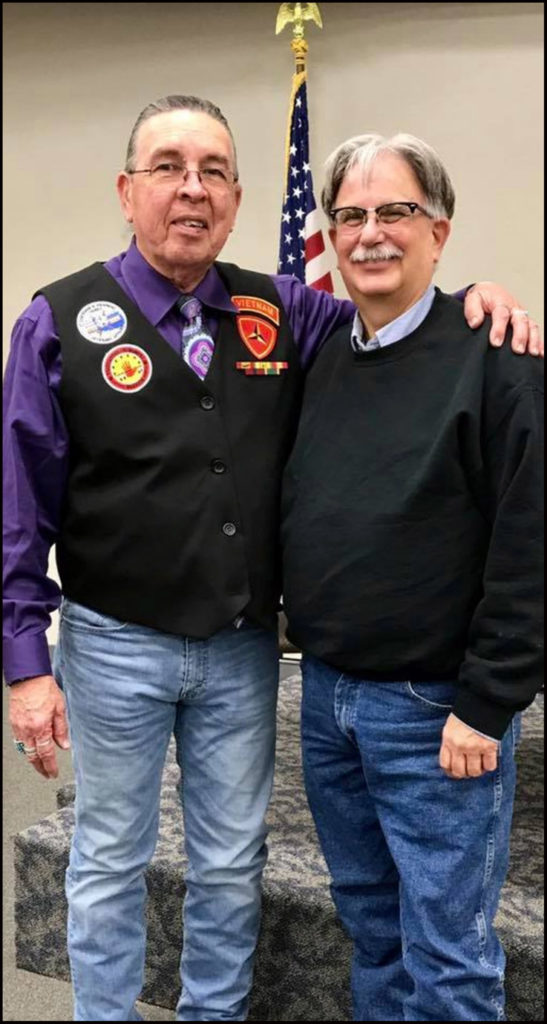
Photo at right shows Southern Cheyenne Chief Harvey Pratt (left) on 30mar2017 near El Reno, Oklahoma, when he was honored by the Cheyenne and Arapaho tribes for his service to the tribal community. He is with his friend Dee Cordry, an historian and former police officer, on the day of the ceremony. Eleven chiefs of the Cheyenne Tribal Council of Forty-four were present, as were the tribal governor and lieutenant governor. (Good friend Dee Cordry shared this image with me.)
Major information that is currently denied LK that must be in the Sand Creek book
I have information from Dee Cordry, who is writing a book that deals with a lot of people I deal with in my manuscript. I’m sorry, but I must remain vague here to protect Dee’s manuscript as well my mine, but what he shared is absolutely mandatory to see print, and Adam Kane totally agrees.Phot
This information when published by Dee and myself will destroy ongoing errors that have been propagated for decades and often reprinted without citations or ones that are error-riddled at best or created simply to disguise what doesn’t exist/never existed or worse create a lie based upon a writer’s premise (which some writers refuse to change regardless of where their research leads).
An example of lies in the real world
Many years back, but soon after Custer and the Cheyenne was published, a preeminent Little Bighorn/Custer historian called me and said he was writing a review of my Custer/Cheyenne book. He read about a quarter of his review (which, when published was over a page and a half in an 8″ x 11″ publication). Great stuff and I loved his words. He got me to talk about the young Cheyenne woman Mo-nahs-e-tah (phonetic spelling of her name); a major mistake by LK, and for all of you who write books when someone calls and states that he/she is writing a review about your work think carefully about who they are and what their motivation is for calling you. If there is just hint of a scam slam your phone down on the receiver. Do it! If you don’t you may regret what follows. … I did.
A year or so later this historian/cum-reviewer and I both spoke at a symposium in SoCal. I called the host and told him that if the historian attacked me verbally that I would retaliate. The historian kept his mouth shut and we actually enjoyed spending time together and talking.
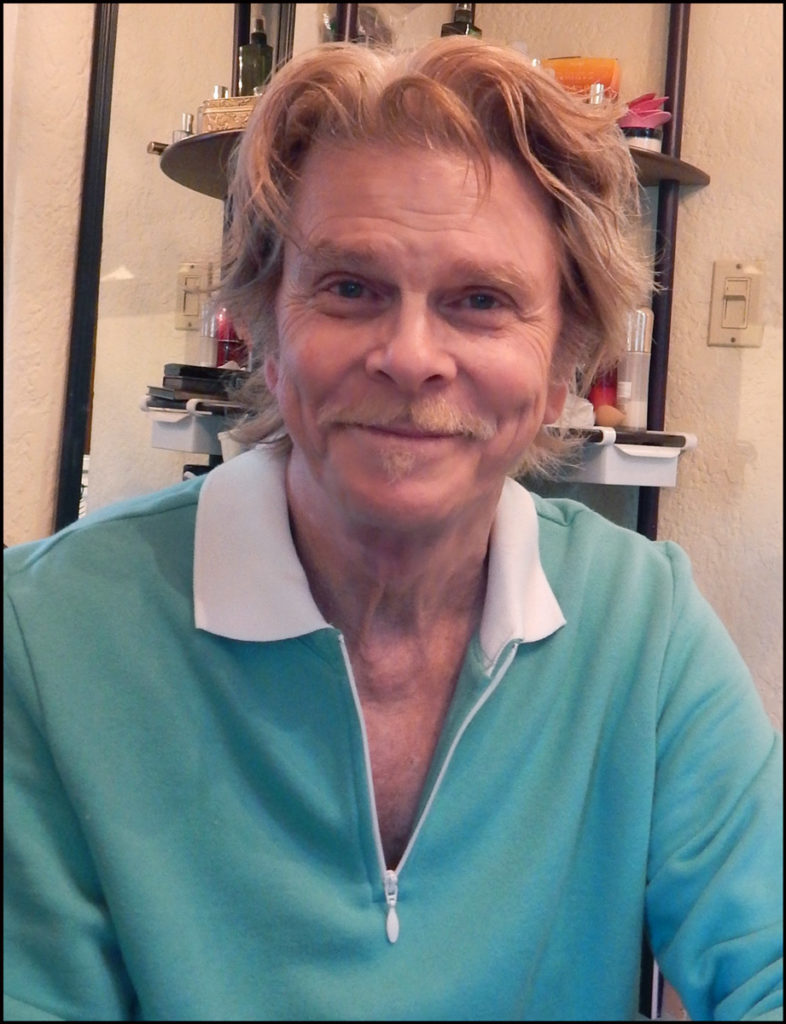
This photo was taken on Christmas day, 2018. Do I look “snarky”? Perhaps, … or maybe I’m simply “cocky.” (photo © Louis Kraft 2018)
Two things that need to be said
Ladies and gents, I want to make something absolutely clear right now—people and archives play major roles in all of my published work. I am forever grateful for their contributions.
I have pointed out errors in books published over the last 50 years. Some of them are heinous but have been reprinted time and again (and often without any documentation). One of my peer reviewers tore into me big time for pointing out published errors; he even stated that I was “snarky.” Snarky? Maybe he’s correct. I don’t care for I’m sick and tired of seeing old errors repeated ad nauseam. This reviewer rightfully stated that I needed to temper my comments (hopefully I’ve been able to follow his suggestion). At this point in time much of my proof of erroneous documentation has been purged from the manuscript. In its place I have inserted notes that mention the errors without pointing the finger at published works, and simply warning readers to be wary of documents that use the previously published errors.* Hopefully historians and readers who read these words heed them.
* Of course a few instances existed where this was impossible to do. I guess I’m still “snarky.” Sorry.
LK writing and life in his world
I don’t view myself as a liar, for sometimes I need a break from almost continuous seven-day weeks for what seems like forever. The blogs are fun for me, while being time intensive. More important they are research for my nonfiction or that memoir I usually ignore when I talk about my writing projects. If ever I finish the memoir, and it is doable as I have a ton of research in house, I will never see it published. Errol Flynn never saw his final book published (My Wicked, Wicked Ways, Putnam and Sons, 1959), and no one was able to sue him for telling what I believe were truthful words about some of the people he knew well. … Let’s carry the LK memoir one step forward. It is completed and placed with a publisher. At that time I will make certain that we are in sync when it can be published, and that time will be right after I’m dancing with angels. Am I joking or am I serious? Be patient for time will give you an answer.
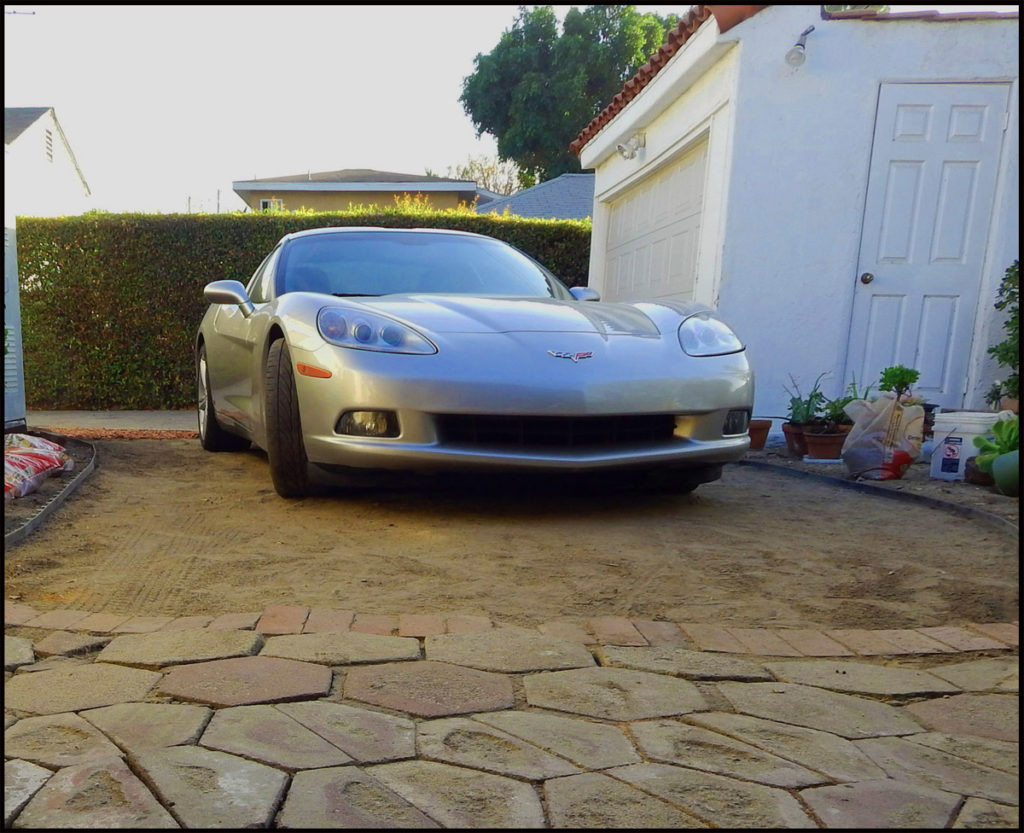
Throughout our early life together I moved Pailin’s car out of our long driveway so that I could use my car; that is moving her car onto the street, moving my car onto the street, moving her car back onto the driveway, and then walking to my car on the street. She suggested parking her car under a carport that we didn’t use as it had been blocked by a fence I installed about 2009 and a huge orange tree that had died about 2013. A great idea! In December 2015 I removed the steel fence, chopped down the tree, removed its root system, filled in the hole, pounded the earth, before the Vette pressed down the earth. This photo was taken in the late afternoon on December 9 after quitting work. (photo © Louis Kraft 2015)
On 24jun2018 my life took another detour. That Sunday the sole of one of my yard-work moccasins came loose and caught on the small red stones I installed in 2015 for the drive to Pailin’s carport (the Vette lives in the garage), and I took a flying dive forward. There was a pole in front of me—I had to protect the pacemaker—and twisted to my left to avoid a head-on collision or worse, nailing the pacemaker. While knowing that the impact wouldn’t be pretty I had to make a perfect landing. Acting and swashbuckling training provided what I needed to know—that is, how to fall. Still, my flying body was like a biplane crash-landing during WWI. Add deep-deep gashes, huge bruises, and burns along the left side of my body. But it was a good day for my noggin’ didn’t slide along the stones and neither did the pacemaker. Nevertheless I saw my heart specialist pronto. The moccasins were exiled to the black trashcan.
This has been my life for years now, and yet I’m alive. They say that the good die young. If so, what am I? … Evil? Maybe, but I don’t think so. Still, there are some people that will agree with this. For the record there’re not my friends.
I’ve discussed cracked skulls and trips to the emergency room, I’ve detailed the perfect storm that resulted in me continuing walk our earth, and I’m not repeating this here. (If interested see: Louis Kraft perfect storm and the Sand Creek Massacre).
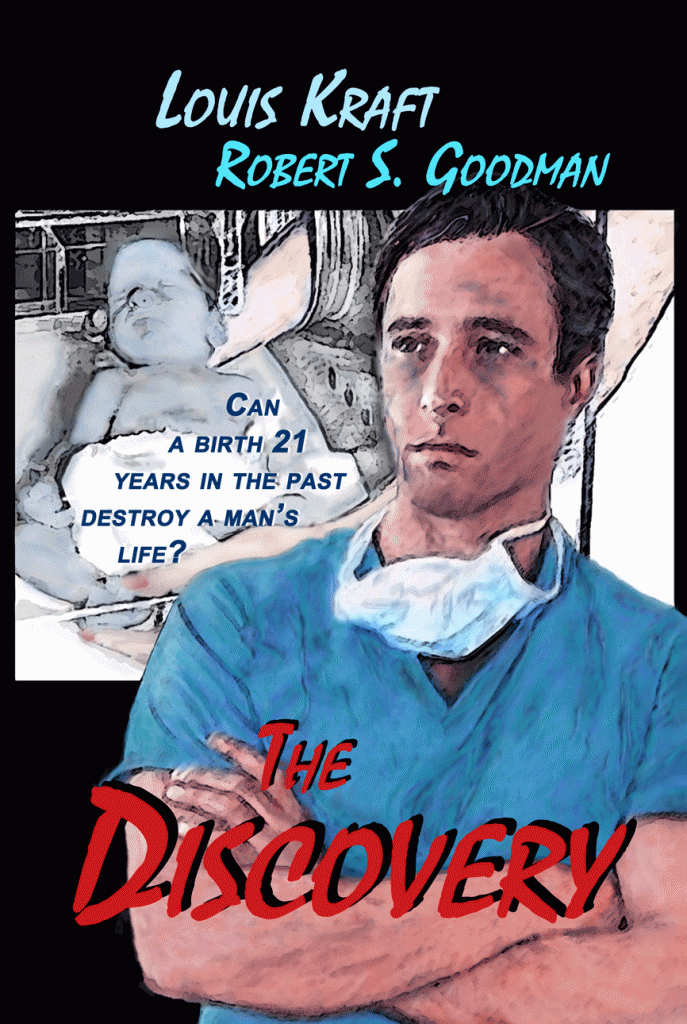
I’m not going to tell about this book, except to say that it is one of the best books I’ve ever written. The reviews have been kind. If you want to see some background on the book, along with a few of the reviews, see: Books 2/The Discovery tab. Believe it or not, a number of the reviews state that it would make a good film or mini-series. This said, beware if you decide to read it for there is extreme violence, as well as sexual intimacy, and a darkness that at times is overwhelming, and would give the story an extreme “R” rating if ever produced as a film (perhaps stronger depending upon the script and director). A good friend, Tom Eubanks, read about 30 pages and stopped. He told me he knew where book was going. All I can say is that he was clueless, for the two leading players are on the book cover and he never met the newborn as an adult, and that is where the medical, judicial, intense character-study thriller begins. Begins. … BTW, the title is misleading while being dead on target. (art and book cover design © Louis Kraft 2016)
This said, my time has been questionable ever since I made a habit of cracking the back of my skull open. Other than a partnership on The Discovery with Robert S. Goodman that began at the time I needed to pay for a surgery that I didn’t know about until after the fact (oh yeah LK has gone from someone with wads of cash in his pockets to someone who picks up bottles on the street). This began in 2012 by my choice. At that time I endured a practice that was totally illegal, totally unethical, and yet a manager I saw only three times in my life not only backed the policy he salivated while supporting it. I doubt that I will ever write about it (although it is well documented; perhaps I should add it to my archive in Santa Fe). Alas, today truth in the USA is a dangerous thing to share. Money almost always wins out.
Regardless, I decided to never again write for the software world, and at that time I was pulling in six figures.
For the record, I believe that writers must move between different genres and push themselves to the limit as they explore and improve their craft.
The Discovery was a detour and at the same time the most important one in my writing life
Bob Goodman has been my physician for almost 30 years, and he along with another five specialists keep me living a good physical life. In 2002 Bob saw something that if not fixed would have led to my death in 2003 or perhaps early 2004. I owe him a lot. Add that I like him a lot, and when he approached me to partner with him to write his terrific story idea (folks, his premise was magnificent). More, as it was an historical piece that spanned over 20 years between the early 1950s and the early 1970s with a huge cast of players (read the Sand Creek story for scope and cast list), and I knew that it could give me what I needed for my nonfiction manuscript—learning how to make a story with many people whose actions are all over the place work in a linear progression. At this time the Sand Creek manuscript didn’t flow forward smoothly. Read that it was hackneyed at best; I’m sorry but that wasn’t acceptable.
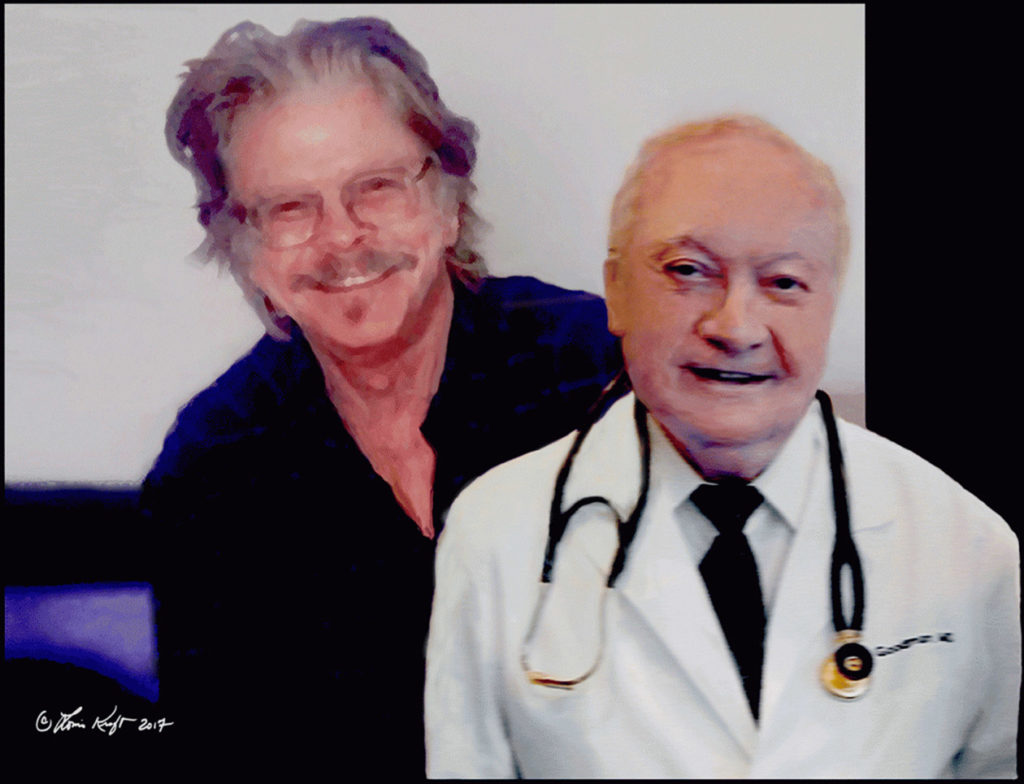
A work in progress of LK and Bob Goodman (even though it carries a 2017 copyright). He hasn’t seen it yet. I had hoped to complete it this year and give it to him. Nope! Story of my life: A day late and a dollar short. … I will finish this painting hopefully in 2019 for I will be seeing him then. (art © Louis Kraft 2017)
The Discovery gave me what I needed to pull Sand Creek and the Tragic End of a LIfeway together and become reality. Hell, I’ve been a professional writer for decades and I was having trouble. I still had a massive amount of word crafting of facts and time in front of me to make the tragic end of the Cheyenne and Arapahos’ lifeway move forward in an acceptable manner. But now I was in the driver’s seat. God love you, Bob! I cherish our relationship and our partnership.
The other influences on my writing life
Technical writing had been a terrific experience. It is fast, demanding, and the deadlines are deadly. DEADLY. … When I worked in the film world you worked eight hours. After that it was time and a half and then after 10 hours more dollar bills flowed out of a fountain. On feature films I didn’t experience that much overtime but in TV it was a different story. On the last day of a medical TV pilot (read an hour and a half and shot in 15 or 17 days; can’t remember) the limited shoot (my guess at this late date as I didn’t keep the “call sheets,” which gave you a start time each day and what was being filmed that day) was get what was absolutely necessary and discard the un-shot script pages. That last day and night we worked 23 hours. My eyes turned into dollar signs. Often there were previews; I never saw one for this pilot, never saw the pilot on TV, and it never became a TV show. Not the first time or the last time.
Since we’re dealing with film and TV and that other money-maker I hated but did when I needed money—modeling, let’s touch base with the entertainment world in the 1970s and 1980s.
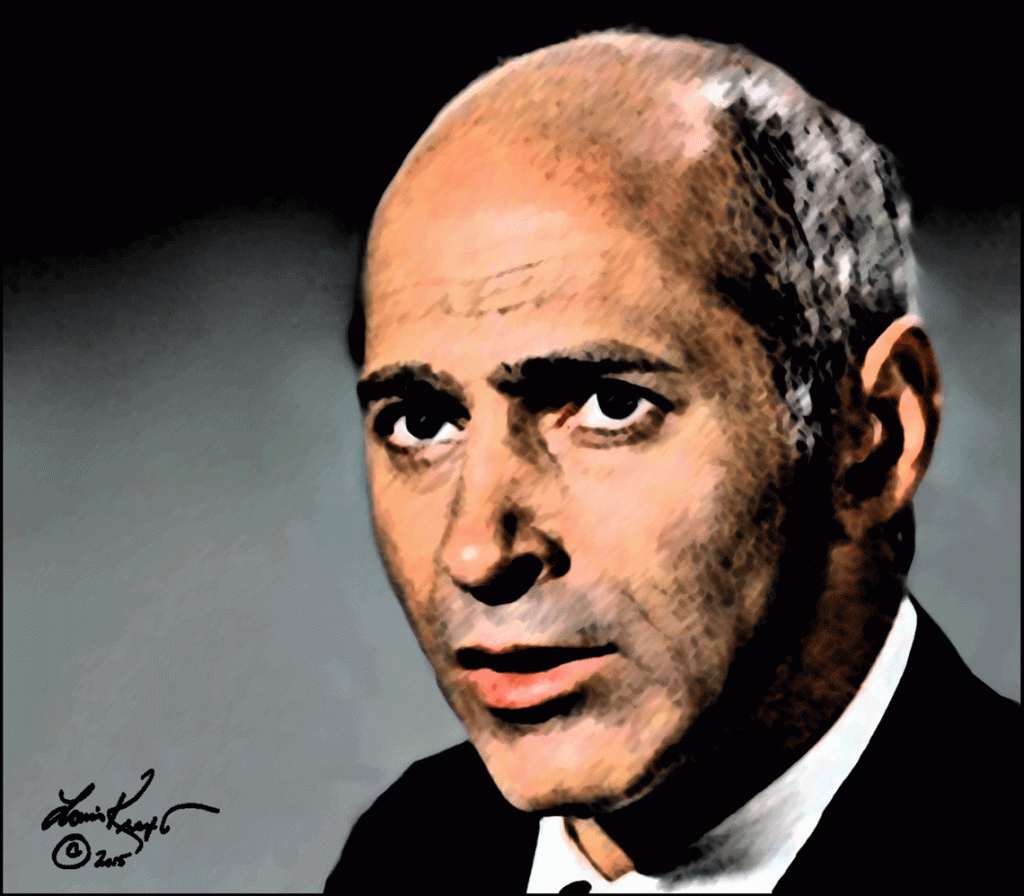
LK art of Bob Ellenstein. His son, David, also an actor and director, saw it in a blog years back, contacted me, and asked if he could have a copy. Of course; I sent him copies set to print as an 8×10″ and various versions for the internet. It was good catching up with him (he was a little boy when I spent a lot of time with Bob and his mother Lois at their home on the Westside of LA). Bob and Lois also had an in-house bookstore, and they were able to get me all of the classic works published on the pirate Francis Drake in the early 1970s including many that were simply primary-source documents. You can bet that both nonfiction and fictional works dealing with Mr. Drake are a comin’. (art © Louis Kraft 2015)
Actually more important is me clarifying what I learned from Bob (Robert) Ellenstein, an actor/director I met in college when he was the professional guest directing professor during my senior year at CSUN. Actually I learned it after graduation when I studied acting with him. This time, beginning in summer 1969 and continuing for a number of years led to a friendship between us that extended long after I stopped studying acting under his guidance. … At one point Bob told the small acting class that I took with him in the early ’70s (between eight and ten people), “Whatever you do, make sure you can live with it.” This was the absolute best advice I have ever received in my life. The absolute best! … And I have lived by it ever since.
This doesn’t mean that I’m a good person; it means that I have never done anything that I could not live with. Put another way, I have never sold my soul or body for money or advancement.
The year 2020 is front and center as long as LK doesn’t mess it up
Although I’ve spent a fair amount of time dealing with writing extra words above I’m totally aware of my contracted word counts. This guarantees that I’ll never place myself in a situation wherein I’m below the word count, need more, but am clueless where to dig for more facts and events simply as a filler as this not a good way to complete a manuscript.
But this isn’t the problem. Actually, it shouldn’t be a problem for when I buy into a project it is for 100 percent. Simply, this means that I’m not just the writer. I have a vision for my print projects, and I do everything possible to insure that the final product is as close to what I originally envisioned. This means that I am present throughout the production process with my input. Sometimes this isn’t appreciated. Too bad. It is my project and my input will happen. What I say, do, or insist upon is not egotistical. Not at all—it is simply to improve what is published.
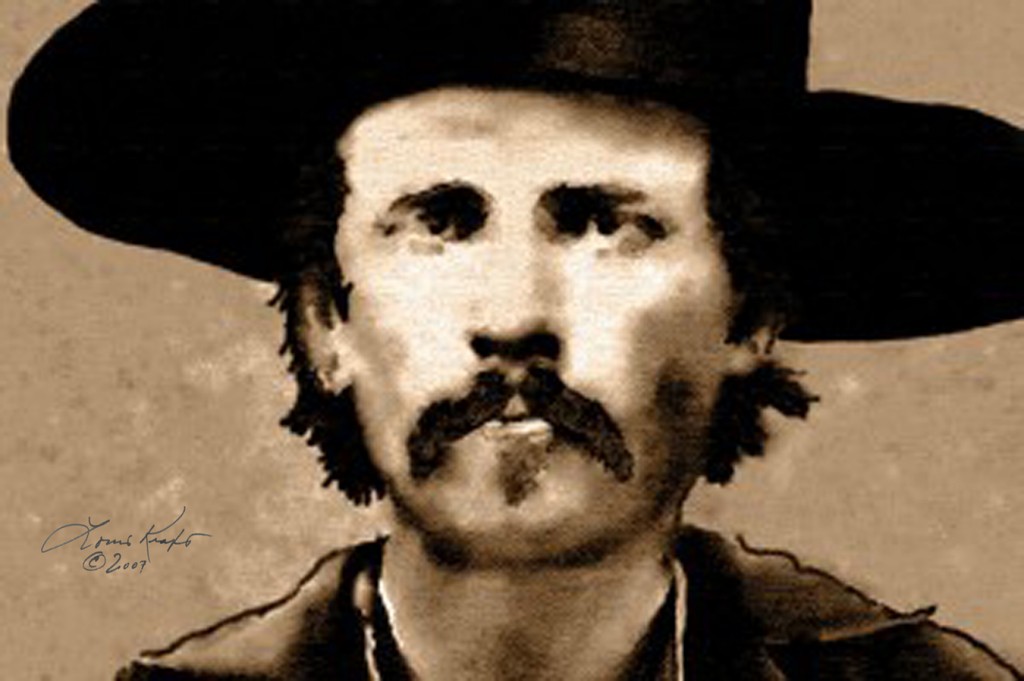
I originally created this art of Ned Wynkoop for an article of mine (“Ned Wynkoop’s Lonely Walk Between the Races”) in Custer and His Times, Book Five (2008). It has appeared in I think three (perhaps four) additional publications including two (three?) magazines. Originally it was an oval portrait but has also been landscape. This image was last printed in Symphony in the Flint Hills: Field Journal, Volume V (2013), and it provided me with my best payday with this portrait. (art © Louis Kraft 2007)
Often I submit my photos/art for publication. It brings in money (sometimes four or five times when I get lucky and an image is resold). This is good for it helps pay bills. Sometimes my art is used to reduce the cost of the image in university press books wherein I am responsible for assembling all the photos and art for the publication. I negotiate with artists and owners of historical images (often offering a book in exchange for using their art/images). I think that this is fair for I save money, they get a copy of the first edition of the book as well as the publicity.
Regarding using my images in publications, at times I’ve been pinged as some people don’t like writers creating art for their words. Honestly, I don’t understand the reasoning behind this and have refused to respond to these comments.
In the past I have publicized photos and art in consideration for Sand Creek and the Tragic End of a Lifeway. The process has been ongoing for years, and I have been negotiating for a good part of this time with artists, private collections, as well as National Historic Sites.
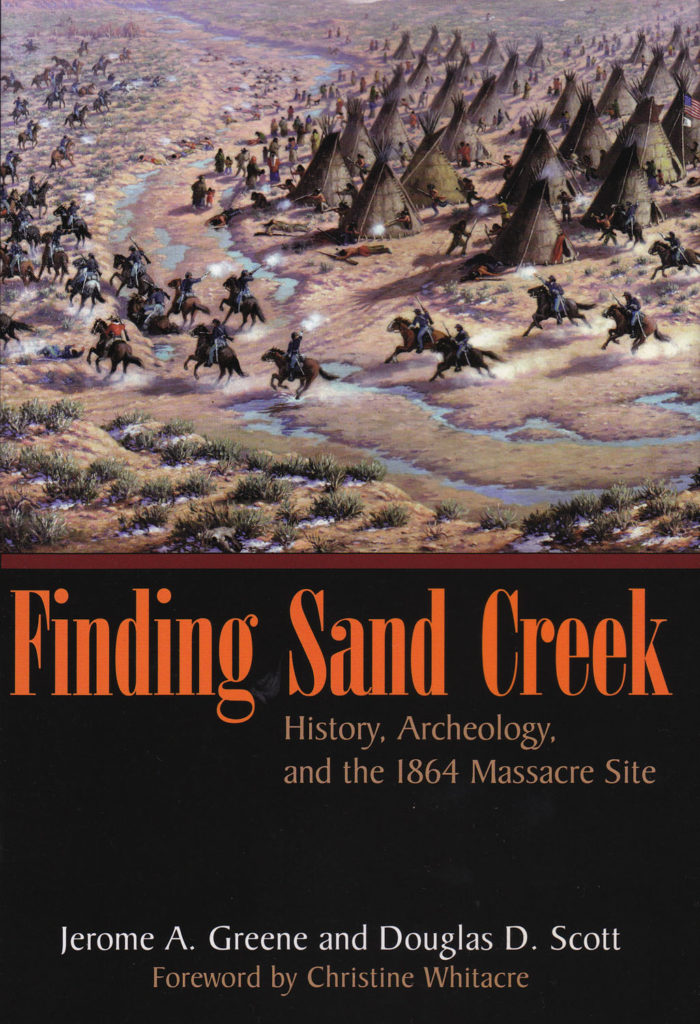
Jerry Greene and Mr. Scott’s book (OU Press, 2004) is one of the better books published dealing with the massacre. The cover is a cropped version of Robert Lindneux’s Sand Creek Massacre art. The painting is landscape, so almost every book cover that features it has been cropped on one or both sides. This isn’t a problem when it is used in magazine articles. Jerry is a good friend whom I enjoy hanging out with whenever opportunity presents itself.
At the moment I am considering pushing two pieces of art for the cover, but I know as 2019 races toward summer that this number will increase. One thing is certain, the cliché art that has appeared on way-too-many Sand Creek books (some of which have nothing to do with the massacre) will not appear on my dust jacket—including Robert Lindneux’s painting (left), which is housed at History Colorado.
Want to read a terrific book dealing with the Cheyenne wars, read Jerry Greene’s Washita: The U.S. Army and the Southern Cheyennes, 1867-1869 (OU Press, 2004). While the book and dust jacket design were in production (I saw a proof of the cover art). Anita Donofrio, who kindly volunteered to do sound and lighting for an over-sold-out Wynkoop one-man show at the former Colorado Historical Society that year invited me to stay with her and her son (a totally delightful young man) the following week while I did research. She was/is a good friend of Jerry’s. I told her that if she invited him to dinner one night I’d cook. My reason: I wanted to meet him, and that evening, which went deep into the night, created a friendship.
Regarding LK’s cooking—don’t snicker. I’m a terrific cook, and have been for decades. … Gents, here’s a tip worth its weight in gold: The way to a woman’s heart is through her stomach (and I can prove this).
The here is now, … or is it put up or shut up?
I deliver my polished draft of Sand Creek and the Tragic End of a Lifeway to Adam in two weeks. If this draft passes review—fingers are always crossed—it is all uphill from here. Meaning: LK will have a Cheshire Cat grin on his face until 2020.*
* Lewis Carroll created this cat and its mischievous grin in his book Alice’s Adventures in Wonderland (1865).
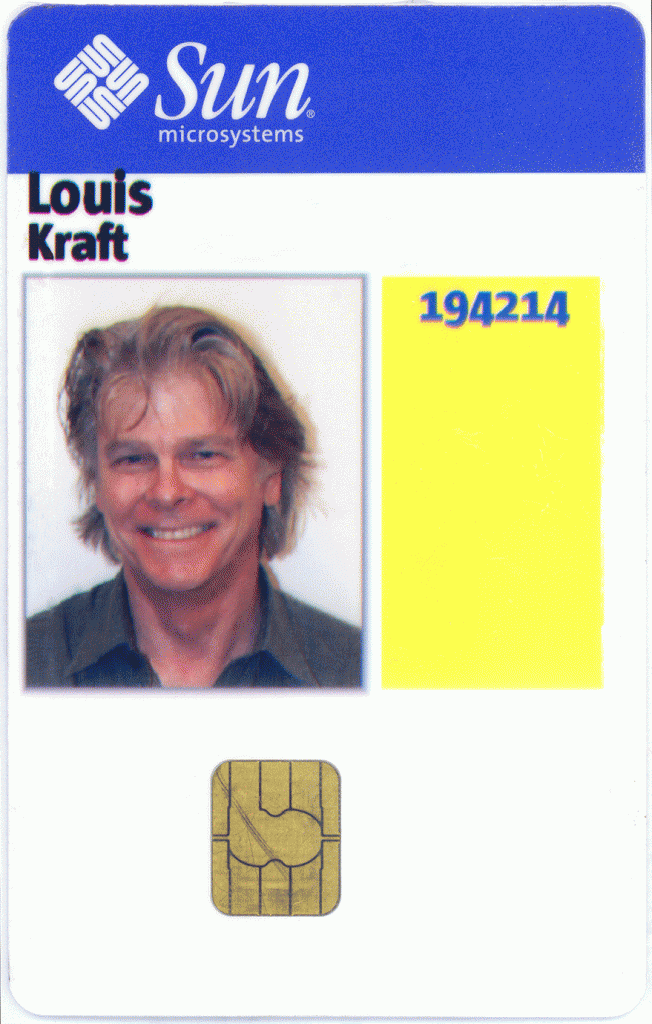
This Sun Microsystems badge was the only one I ever bothered to grab, and I had no clue at this late date why I did this. In 2005, when the company purchased Seebeyond Technology Corp., they had over 40,000 employees worldwide. by late 2008 that figure had dropped to 24,000 employees. Poor management had doomed the company, whose stock plummeted to obscene levels when in January 2009 69 percent of the former Seebeyond employees then in Monrovia, Calif., were laid off. Often they talk about loyalty in sports or the lack of. Take a quick look at the technical world and you’ll see that they make the sports world look like amateurs when it comes to eliminating personnel.I participate in all of my projects in every way possible. At times—and this is a major understatement—production teams from art directors to editors and everyone in between would love to lock me in a cell until the book is published. … And I’ve heard the comments (or read them) to know that this is a true statement. They’re professionals, and most of them are very good at what they do.
I participate in all of my projects in every way possible. At times—and this is a major understatement—production teams from art directors to editors and everyone in between would love to lock me in a cell until the book is published. … And I’ve heard the comments (or read them) to know that this is a true statement. They’re professionals, and most of them are very good at what they do.
Alas, so am I, and I have done what they do. I’ve designed books, dust jackets, newsletters (wherein I was the editor and designer), created art, maps, and know that I must pay close attention to what is happening during every step of the production process or things can and might happen that are bad (or worse), and this isn’t on the production team. It’s on me. My name is on the book or article, and that means one thing: If there are errors (anything from a note that is no longer accurate or apropos, inaccurate captions, quoted text blind-edited, whatever) there is only one person to blame—LK. I’ve missed changed captions, notes that no longer deal with what they supposedly confirm, and I cringe when I realize that a quote has been altered. This list is ongoing, including index entries that vanish, even though I thought they were important.
My manuscripts receive two copyedits and they usually take about a month each (but that was back when I wrote for software companies and often had two-plus hours of drive time and overtime almost every day). This is no longer the case. Although the Sand Creek manuscript has a larger word count I think that the copyedits will take only a month each to complete.
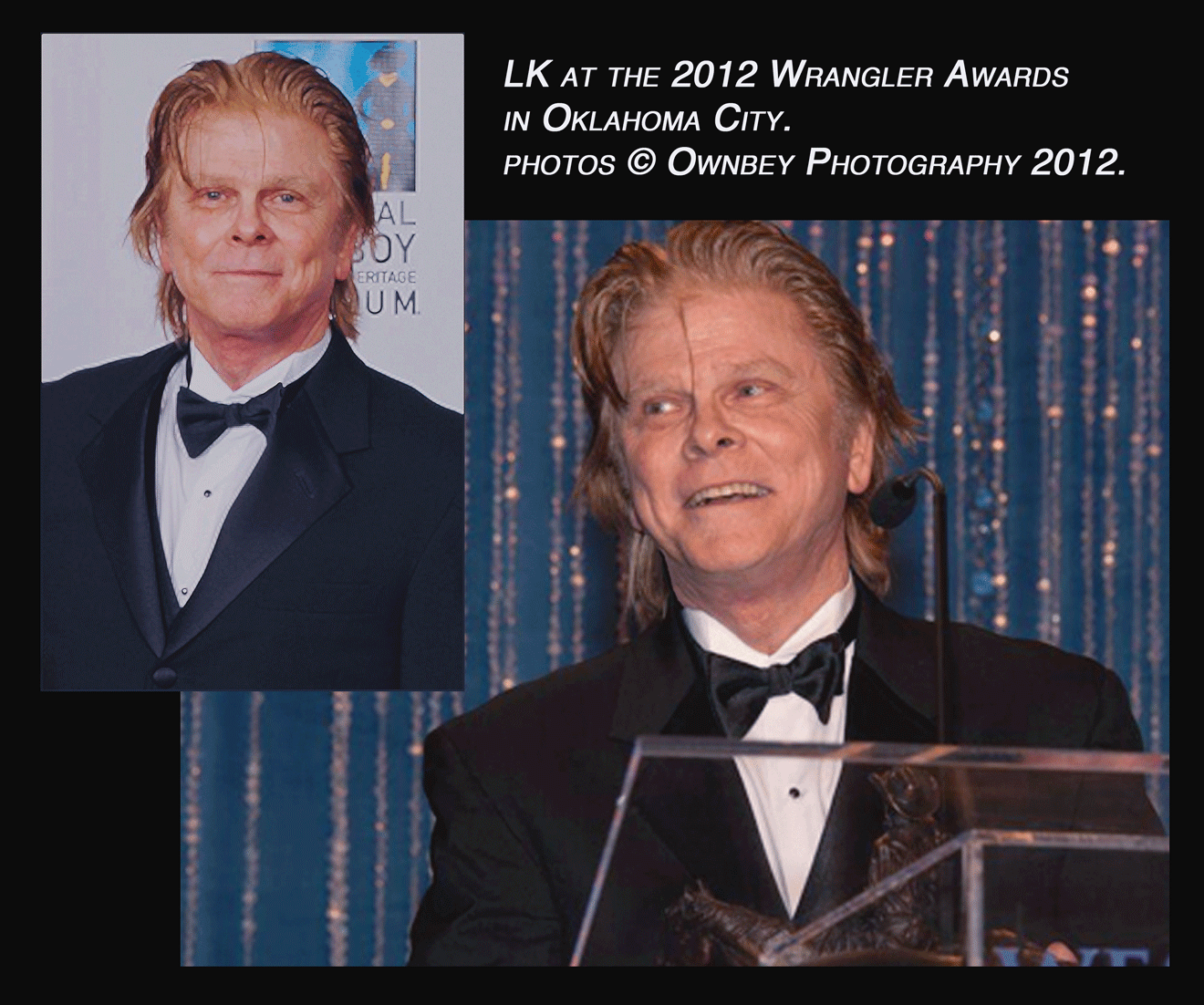
LK acceptance of the Wrangler Award for “When Wynkoop was Sheriff” (Wild West, April 2011) at the Western Heritage Awards banquet in Oklahoma City in April 2012. Yeah, Kraft does dress up sometimes. On this evening I was wearing Cheyenne beaded moccasins. For the record, Cheyennes wore low moccasins (unlike the Apaches and the high moccasins shown above). To cover and protect their legs the Cheyennes wore leggings, which are described in detail in Sand Creek and the Tragic End of a Lifeway.
I want to say something here and it is of major importance. … I love my editors and copyeditors. Actually I consider myself one lucky SOB as I have been associated with OU Press and the University of Nebraska Press for they create first-class publications and are the two best Indian wars publishers in the world. In the world!
Unfortunately I think they and their production teams cringe when an LK manuscript arrives on their desks. Folks, I’m a historian, but I’ve also a teller of stories. This means I want character development. This isn’t easy in nonfiction. In the past I’ve had to fight to keep my character development. For example in Ned Wynkoop and the Lonely Road from Sand Creek (OU Press, 2011), his wife Louise is alone in their hotel room at La Fonda in Santa Fe, New Mexico Territory, when rats enter the room. She steps onto a chair and is still standing on it when Ned enters the room. Of course the rats scattered when he opened the door and he didn’t see them. He chides her, she gets angry and tells him to sit down. He does, and the rats return. Wynkoop leaps onto his chair, yanks out his Colt and begins shooting at the rats. This brings the hotel manager, who quickly moves them to another room. … The scene shows character, but the copyeditor cut it. I reinserted the scene and told her that it stays.
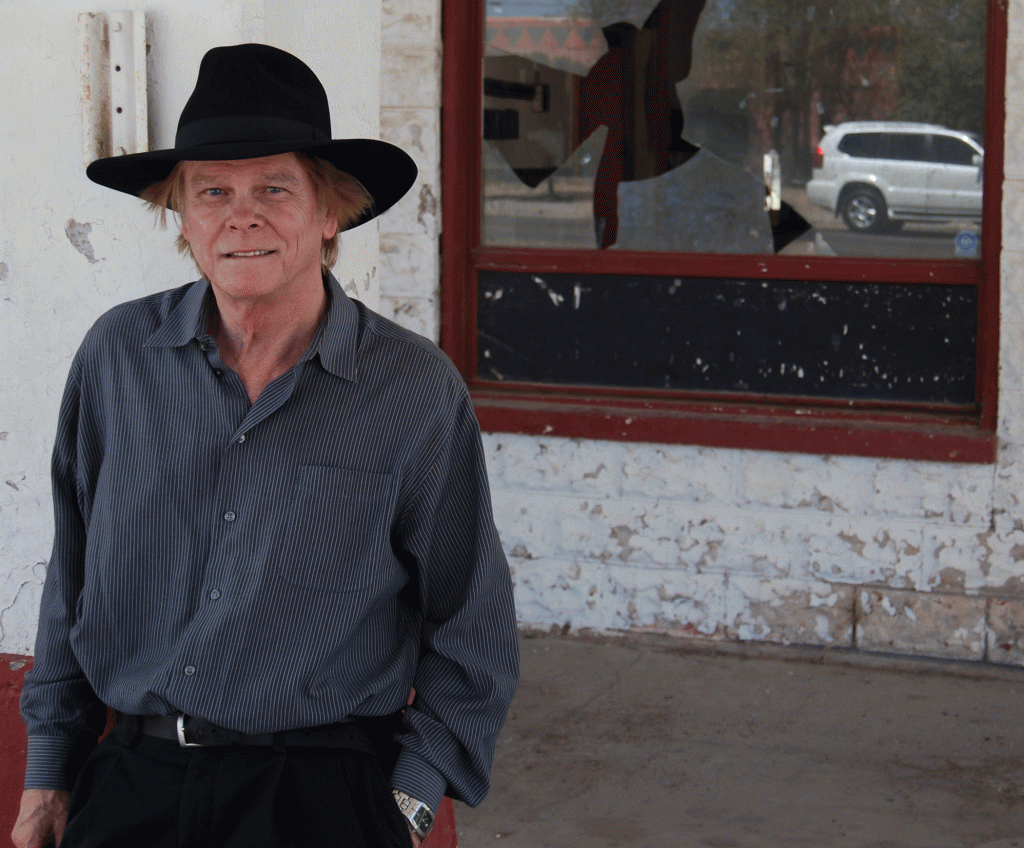
This image of LK was taken on the old Route 66 that sliced through a good portion of the USA back in days long gone. Alas, so are the towns, and some are little more than skeletons of what once was. My bro Glen Williams took this photo in front of a long-abandoned gas station in fall 2011 on the day after he and I delivered an LK archival package to Tomas Jahen (then of the Chávez History Library) and his family in Williams, Az. I really like Glen’s photo as it captured the destruction of a past that will soon vanish if not recorded. Ladies and gents, history will quickly fade into nothing if not recorded—Lost to time. Our grandparents, parents, and children (and that is all the personal history I have) will vanish without a trace if I don’t write about their lives. This is personal, and so is a memoir. (photo © Louis Kraft & Glen Williams 2011)
Many nonfiction books are stuffed with fact upon fact upon fact stringed together in—please forgive me good nonfiction writers for I’m not talking about you—long sterile sentences and paragraphs that can put me to sleep in two pages. I often must suffer through these, … these, … these, … what are they—Oh yeah, pages! Often they offer nothing that I need but I don’t know that until I read the last page. Wasted time? No, for I must know the answer. To borrow from the long departed TV show (which should have been left in peace) The X Files, “The Truth is Out There,” and I need to know it.
Long answer short. Good times are on the horizon for Sand Creek and the Tragic End of a Lifeway is about to move into production (if accepted), a process I love for it is a collaboration of many people working together to make the published book as good as possible. There are many steps, many reviews, many changes, and many suggestions to make the final product of value to those who read it. For me it is a thrilling time.
In closing Global Warming is here to stay
… and it will only get worse if action is not taken during our lifetimes.
It is unbelievable how many nay-sayers there are to this statement. Conspiracy stories abound. I know people who insist that the fires in California and elsewhere in the American West, the hurricanes that assault the East Coast, the Southern Coast, the Caribbean, and Texas, as well as the typhoons in other portions of the world are nothing more that disasters created by the “government.” “The government? Who? Trump?” “No, the government. The Clintons, Obamas, and Bushes.” … Beachfront property in SoCal is losing the war with the Pacific Ocean as the waves increase in velocity and pound the cement barriers that protect these over-priced houses in LA and San Diego Counties. Eventually the sea will destroy them, and the process has already begun.
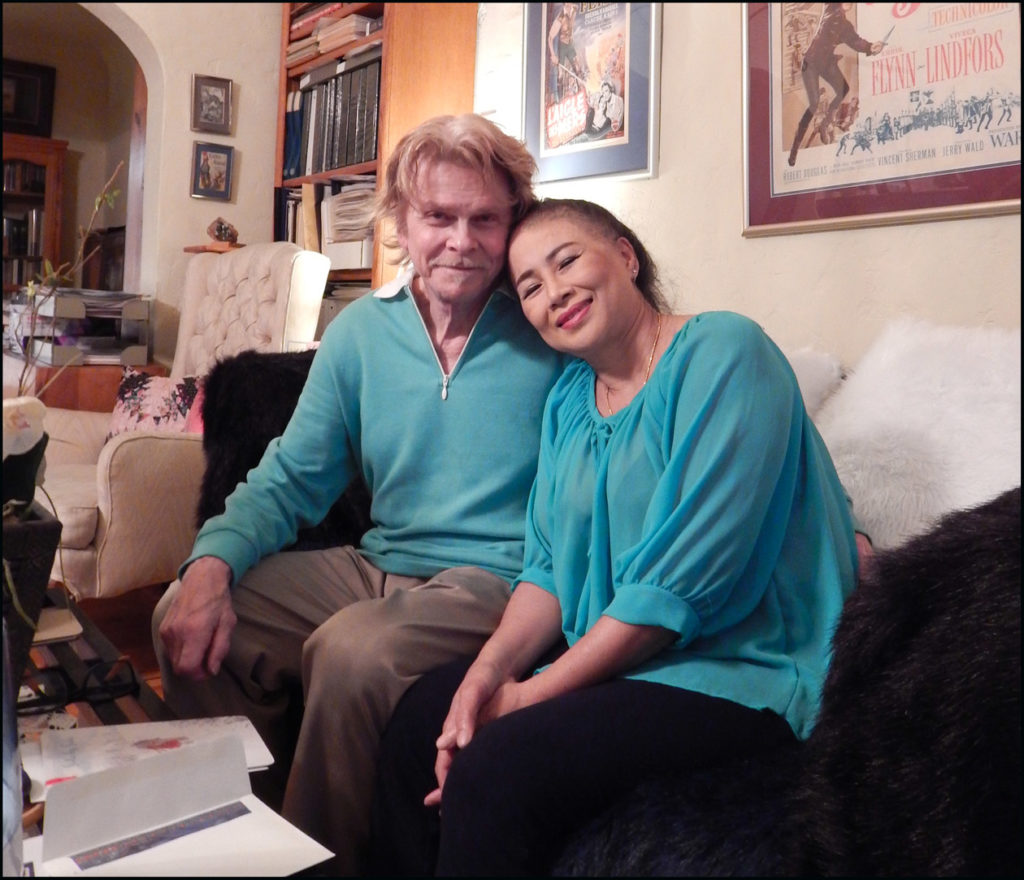
This image of Pailin and LK doesn’t belong here. This said, I have no images of Climate Control for its future is still unknown. The LK/PSK future is known, and this end of Christmas 2018 photo shows this. We are together and we are one until the end of our time of walking Mother Earth. (photo © Pailin Subanna-Kraft & Louis Kraft 2018)
Those that deny the changes of weather conditions, the melting of icepacks, spout vehemently that it is all fake news. Some have even told me that the violence and mass murders across the USA never happened. They claim that it is “government” false news to spread hatred and violence and that these “fictions” are filmed performances using actors. They claim that the reason is to reduce the population and eliminate the middle class. … I agree that the USA is becoming a world of the super rich and the poor (who will soon become homeless—at least in LA, the homeless capital of the USA).
What about the recent report on global warning by the Federal Government? “Fake news!” … Maybe I’m old fashioned, maybe I’m not in line with today’s world, but I have a lot of trouble with slogans—such as Fake News. Don’t believe me see the Los Angeles Times 24nov2018 article “Climate report warns of bleak future”.
Since May and my last blog the following seven months have been a blur.
At times I didn’t know if I was sleeping or awake. I was focused solely on the
Sand Creek manuscript and the health of the ladies in my life. That’s it; that’s all that mattered. I became Rod Taylor as he sped between centuries in H. G. Wells’ novel turned into the classic 1960 film The Time Machine (which would have blasted the 2002
adaption to kingdom come if it had the special effects capabilities available
during the first decade of the 21st century). Beginning in 2011 I have
been on a joyride without end, a joyride that at times descended
into the depths of Hell, but is not yet complete and won’t be
until 2020 when the book is printed.
There is one LK truism for the upcoming year—There will be more blogs.
The question is when?
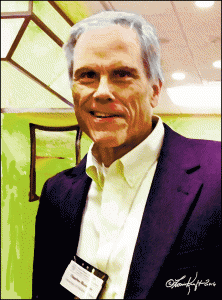
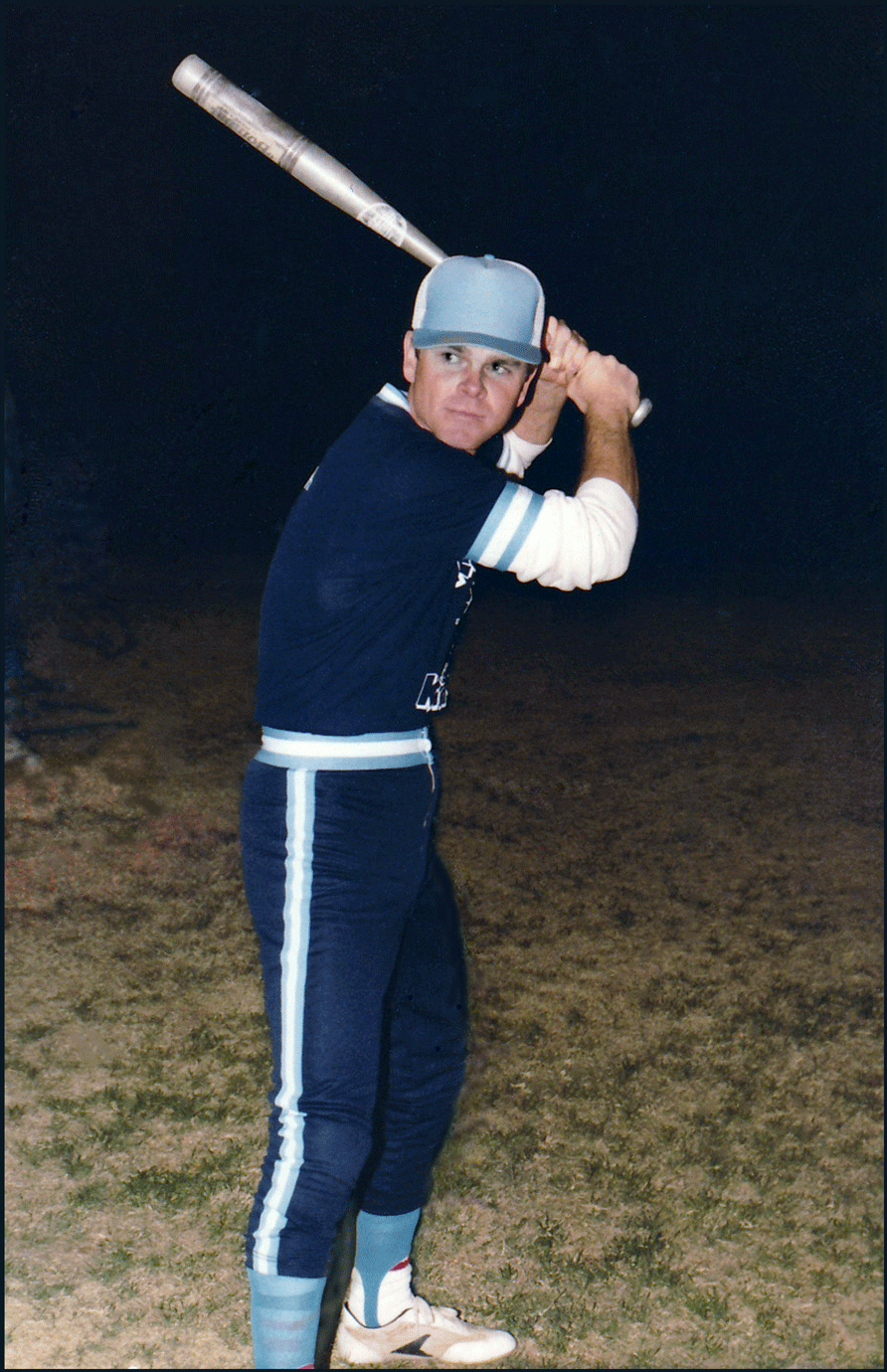
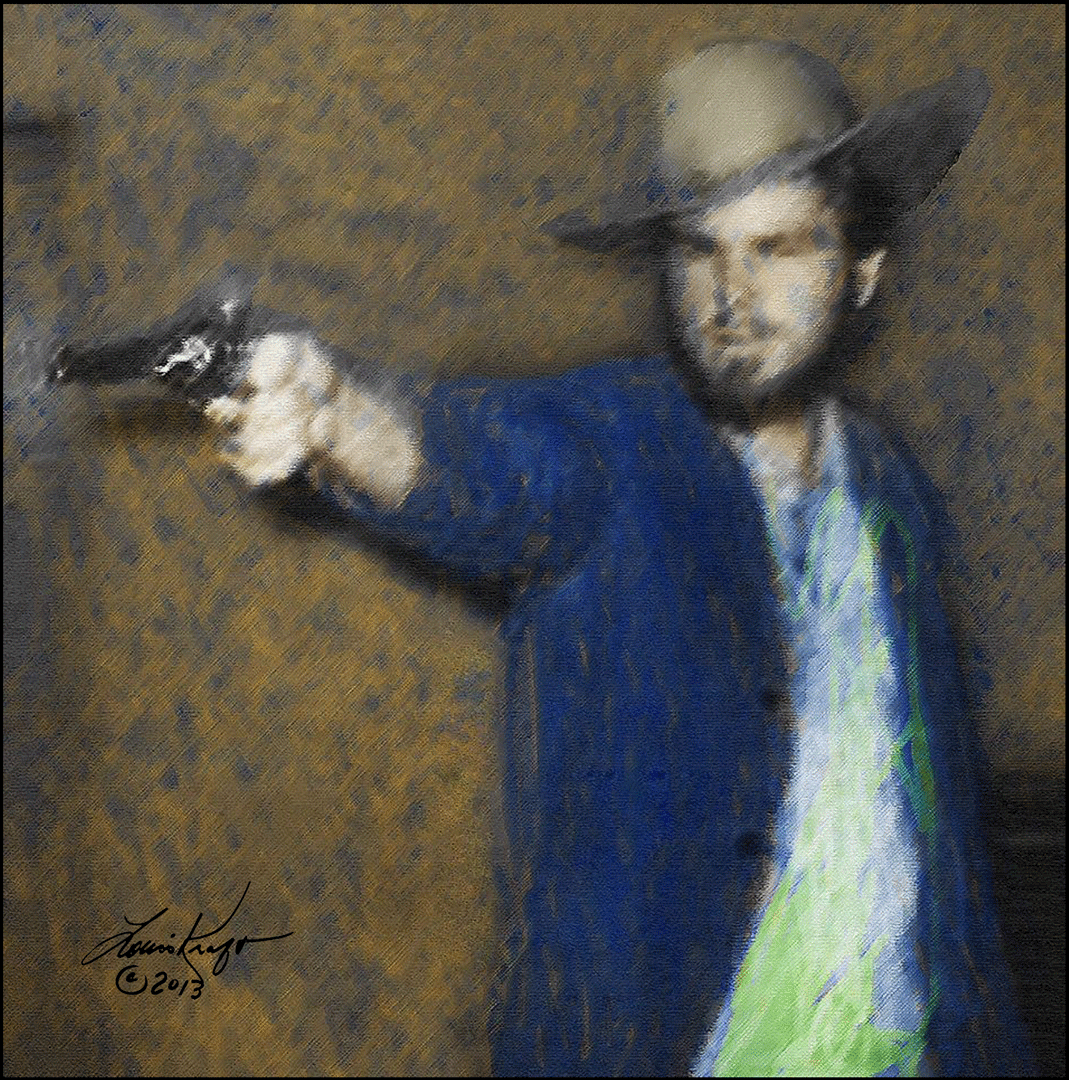
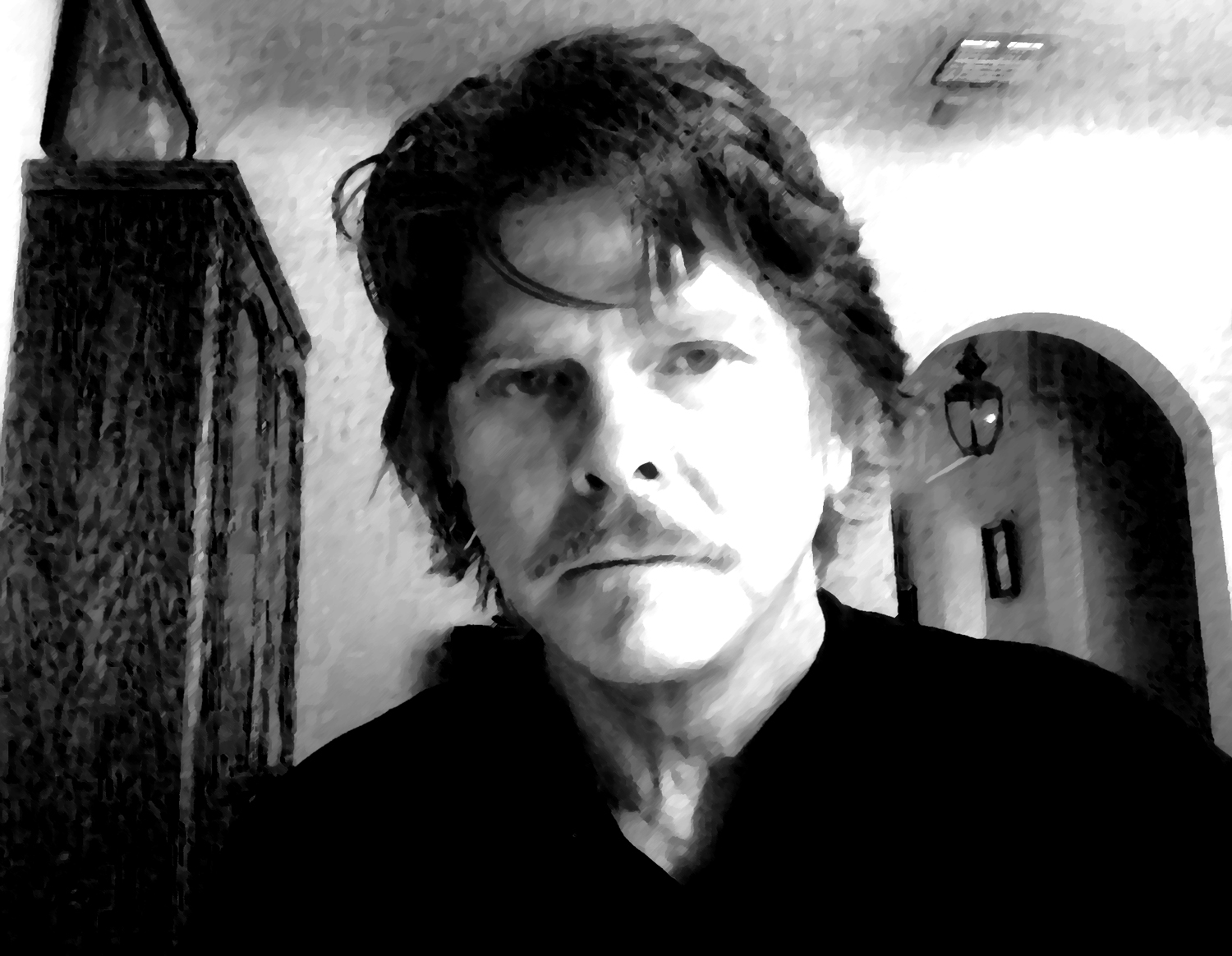
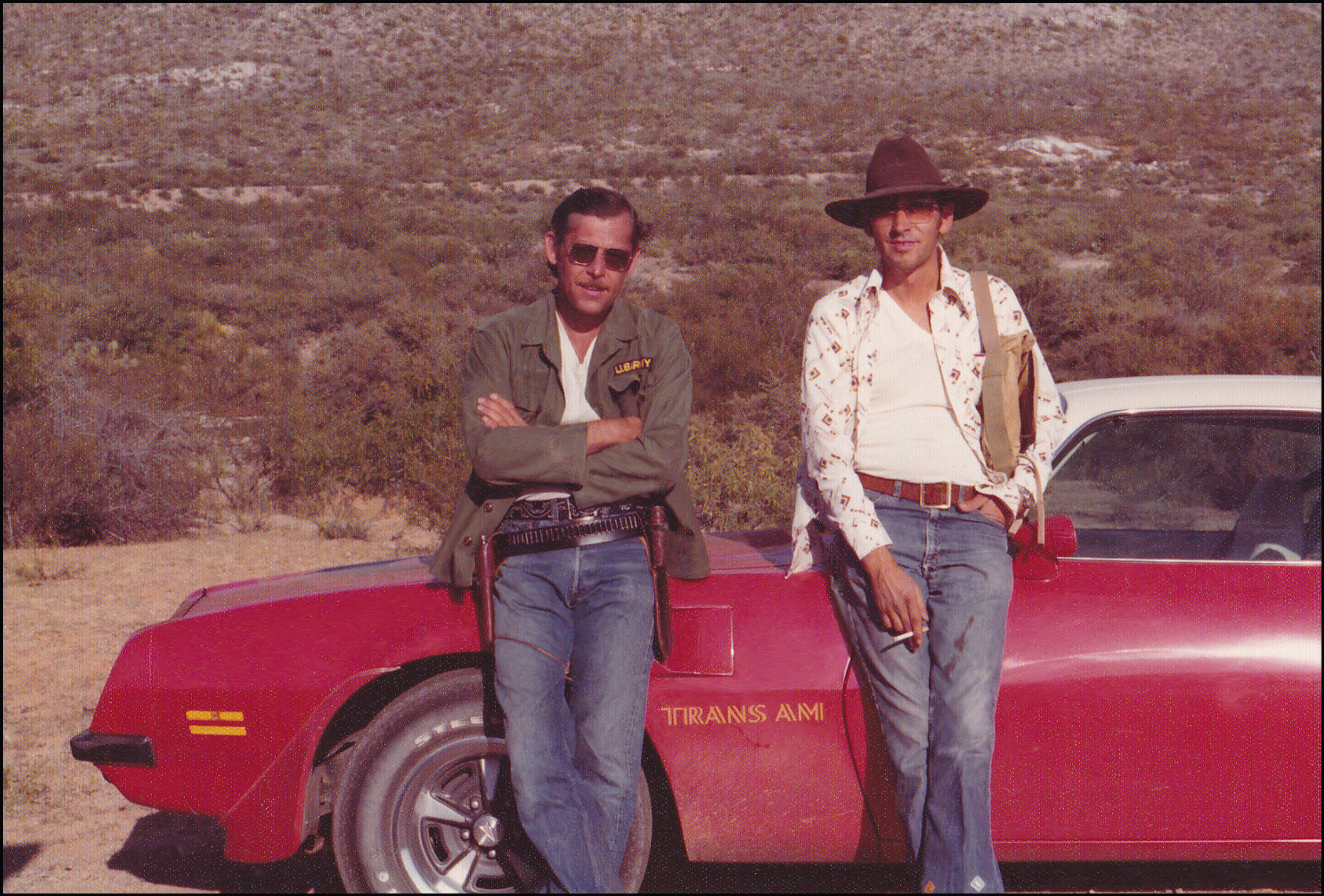
 Photo of LK (left) accepting the 2012 Western Heritage Award in Oklahoma City in 2012. I’m good at talking engagements. I’m also good when accepting awards, which are much more impromptu. This mounted cowboy bronze (you can barely see him in the lower left of the photo) weighs about 18 pounds (and I kissed him during the talk, which garnered me a nice laugh).
Photo of LK (left) accepting the 2012 Western Heritage Award in Oklahoma City in 2012. I’m good at talking engagements. I’m also good when accepting awards, which are much more impromptu. This mounted cowboy bronze (you can barely see him in the lower left of the photo) weighs about 18 pounds (and I kissed him during the talk, which garnered me a nice laugh).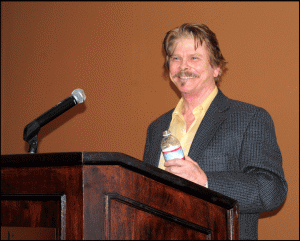
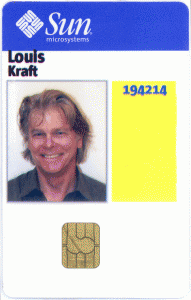
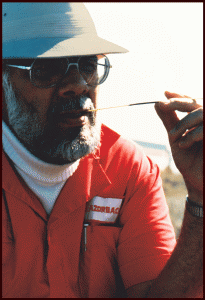
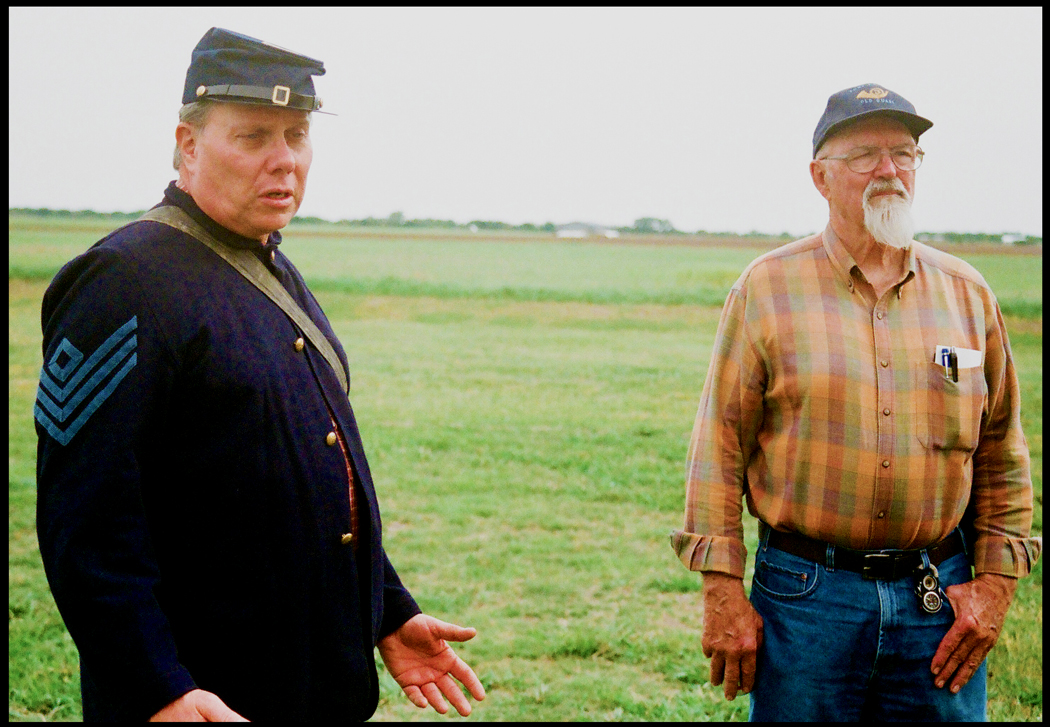
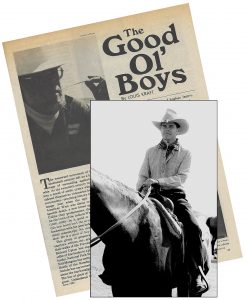
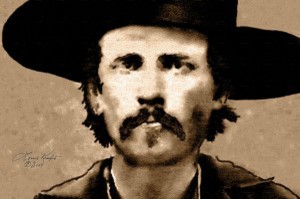
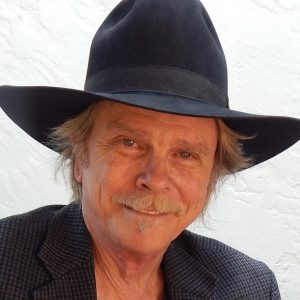
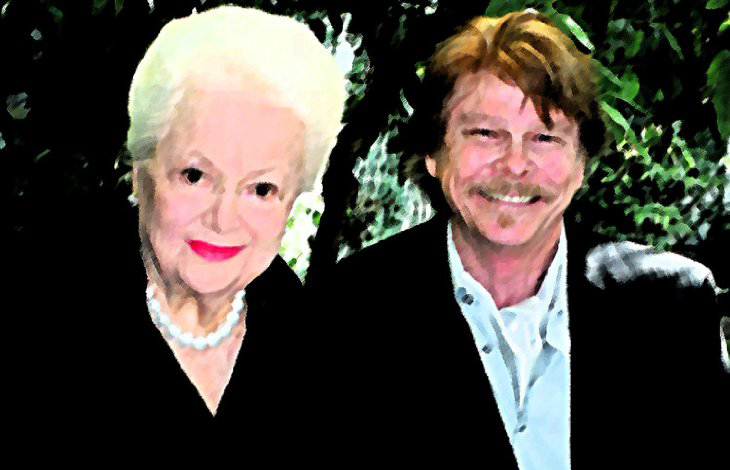

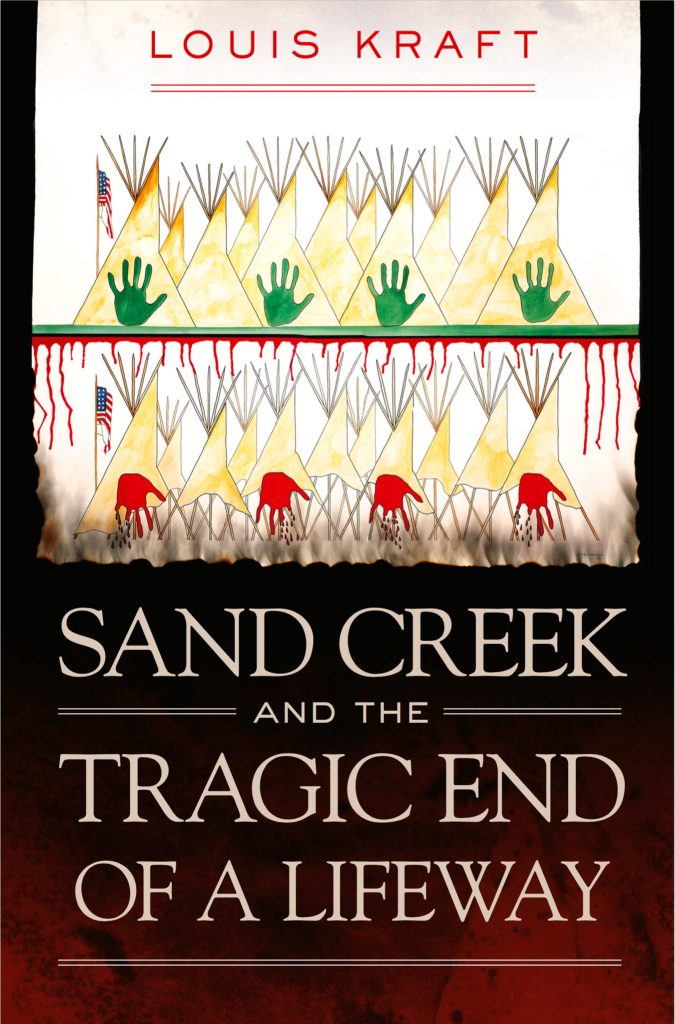


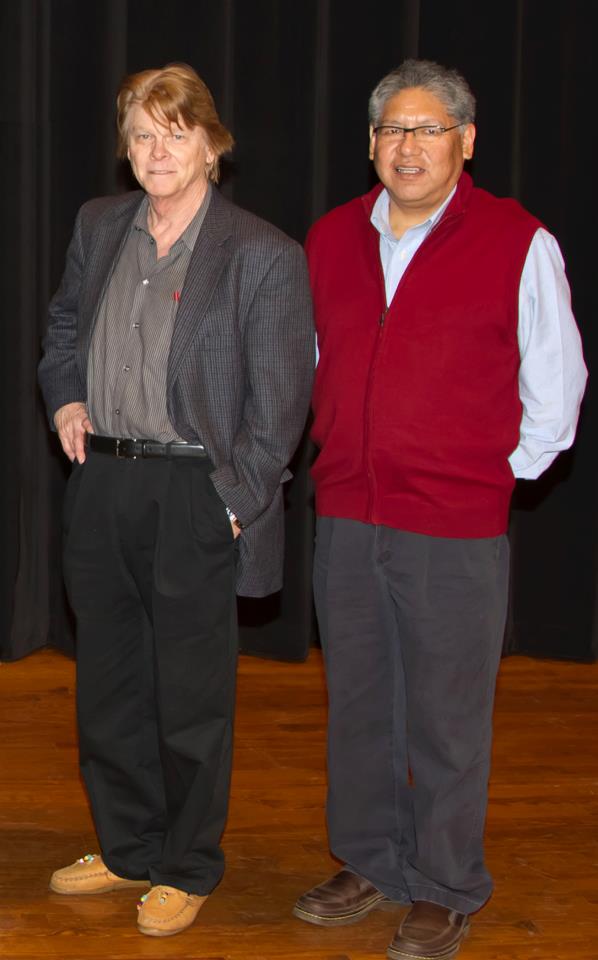






 The nightmare is ongoing. A study just released pointed out that over 1.1 million buildings are at fire risk in California, according to the Los Angeles Times (“A million buildings facing fire risk stir cries for action,” 22dec2018; see the map at left and drag it onto your desktop to expand it), that is “roughly 1 in 10 buildings.” The largest number of these buildings are in Los Angeles County: 114,000, “including tens of thousands of Westside and San Fernando Valley houses in the Santa Monica, Santa Susana and San Gabriel mountains”. … The Times went on to state: “The findings follow a fire season of unprecedented destruction—more than 20,000 homes lost, more than 100 people killed—that showed what damage can be done if Californians fail to address a widespread risk.”
The nightmare is ongoing. A study just released pointed out that over 1.1 million buildings are at fire risk in California, according to the Los Angeles Times (“A million buildings facing fire risk stir cries for action,” 22dec2018; see the map at left and drag it onto your desktop to expand it), that is “roughly 1 in 10 buildings.” The largest number of these buildings are in Los Angeles County: 114,000, “including tens of thousands of Westside and San Fernando Valley houses in the Santa Monica, Santa Susana and San Gabriel mountains”. … The Times went on to state: “The findings follow a fire season of unprecedented destruction—more than 20,000 homes lost, more than 100 people killed—that showed what damage can be done if Californians fail to address a widespread risk.”






























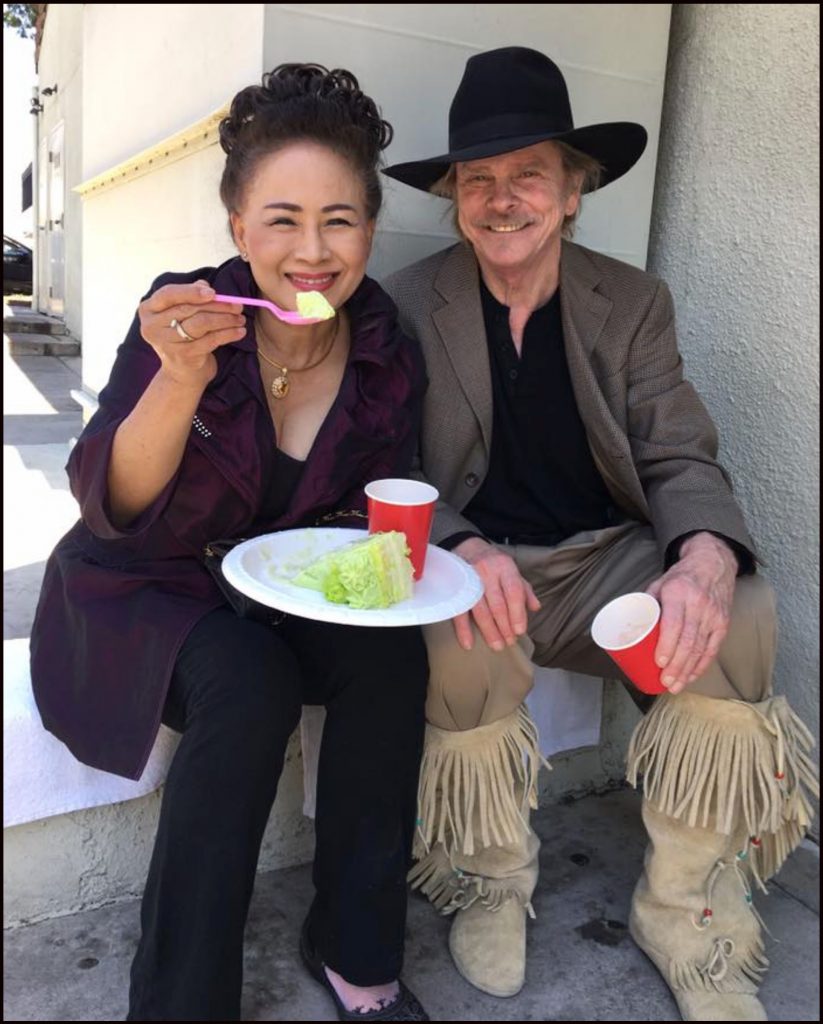
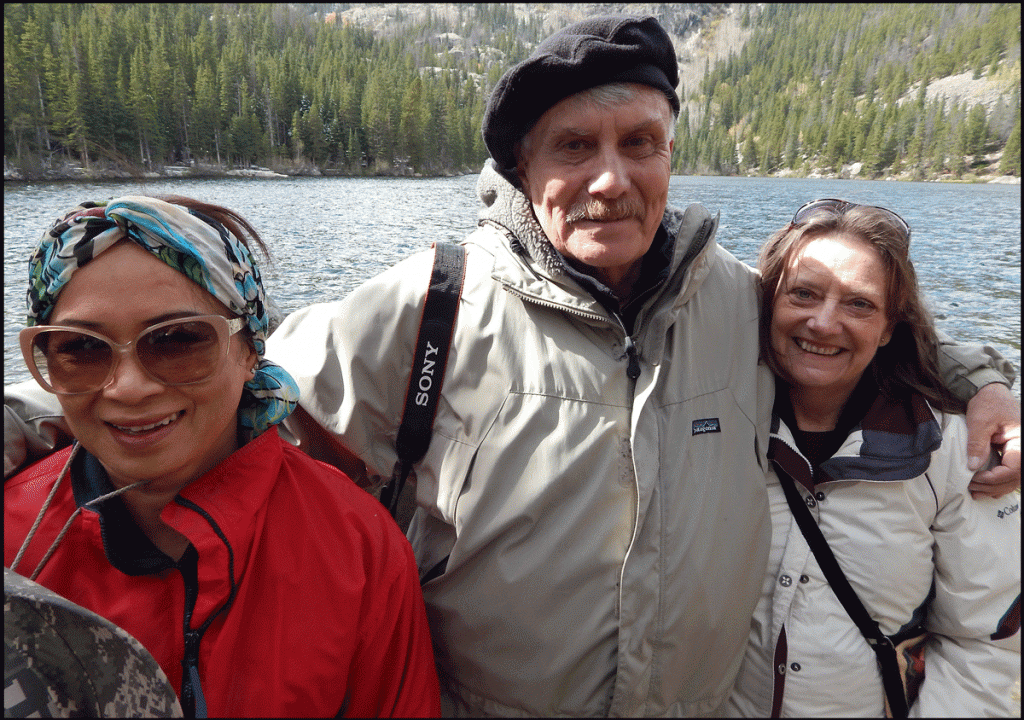

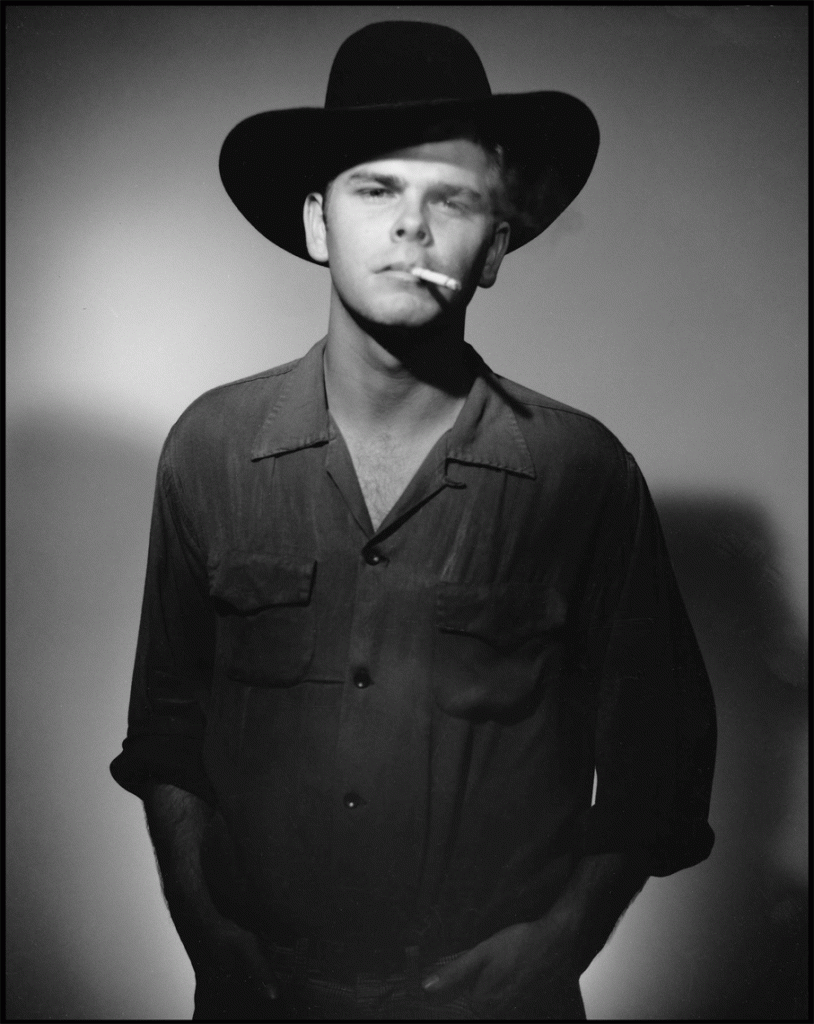

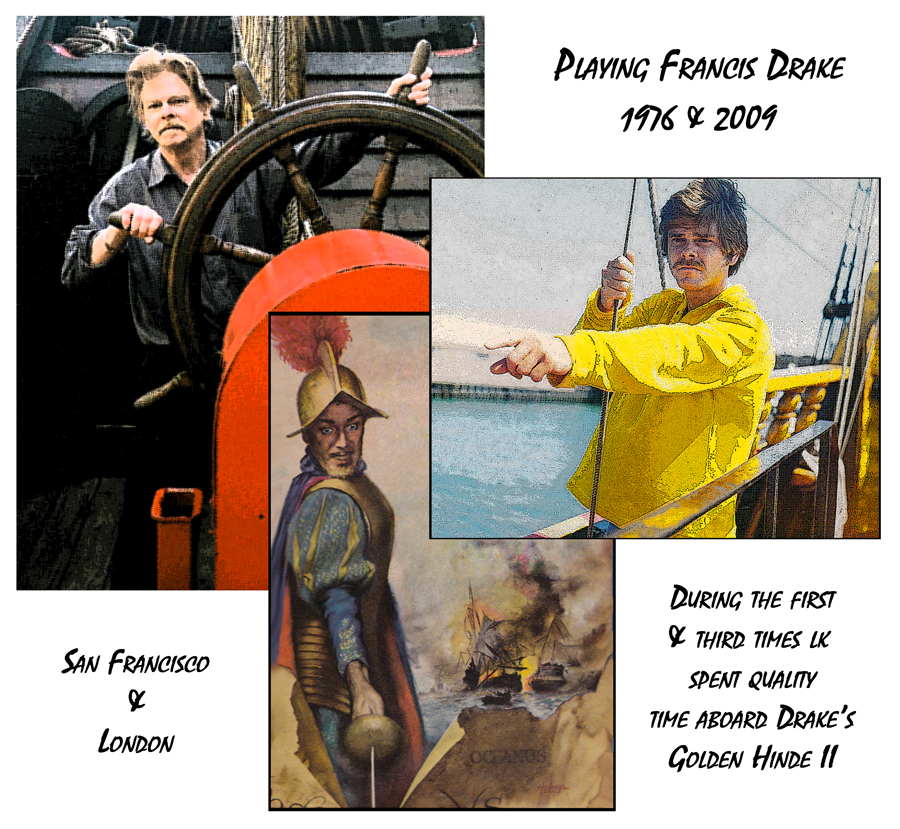
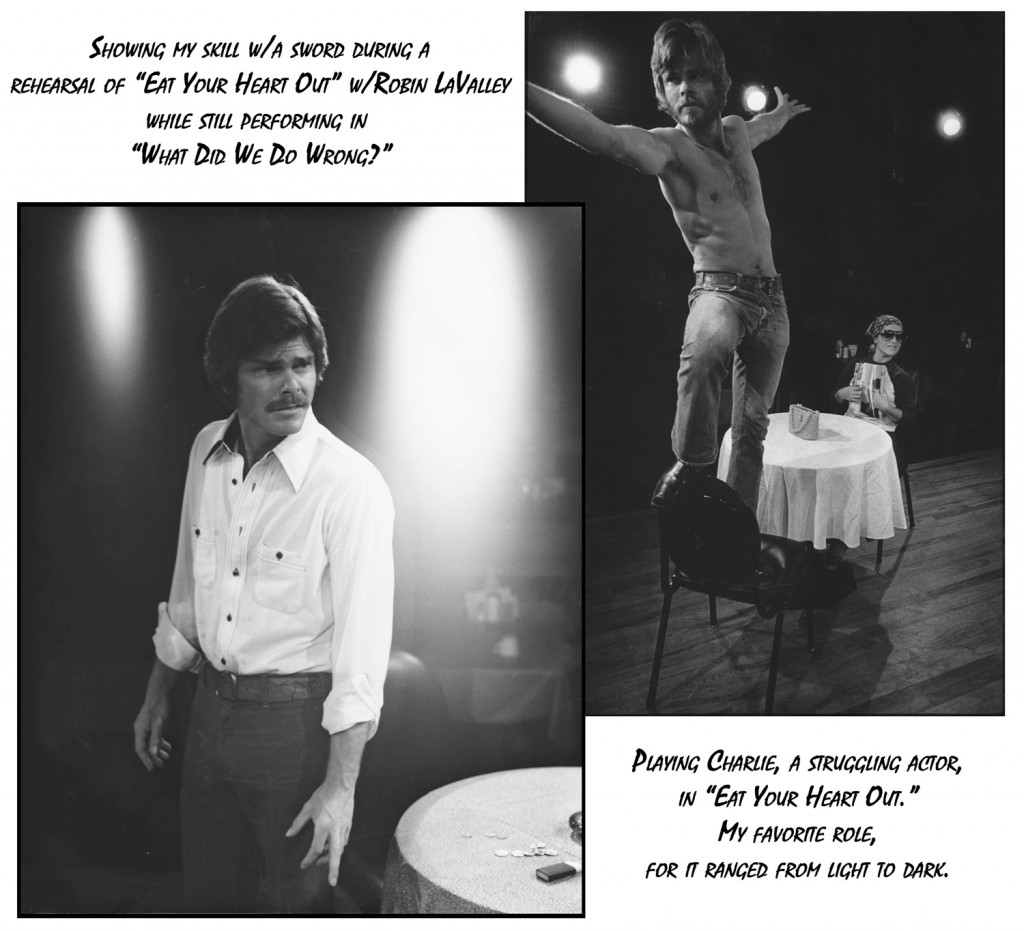

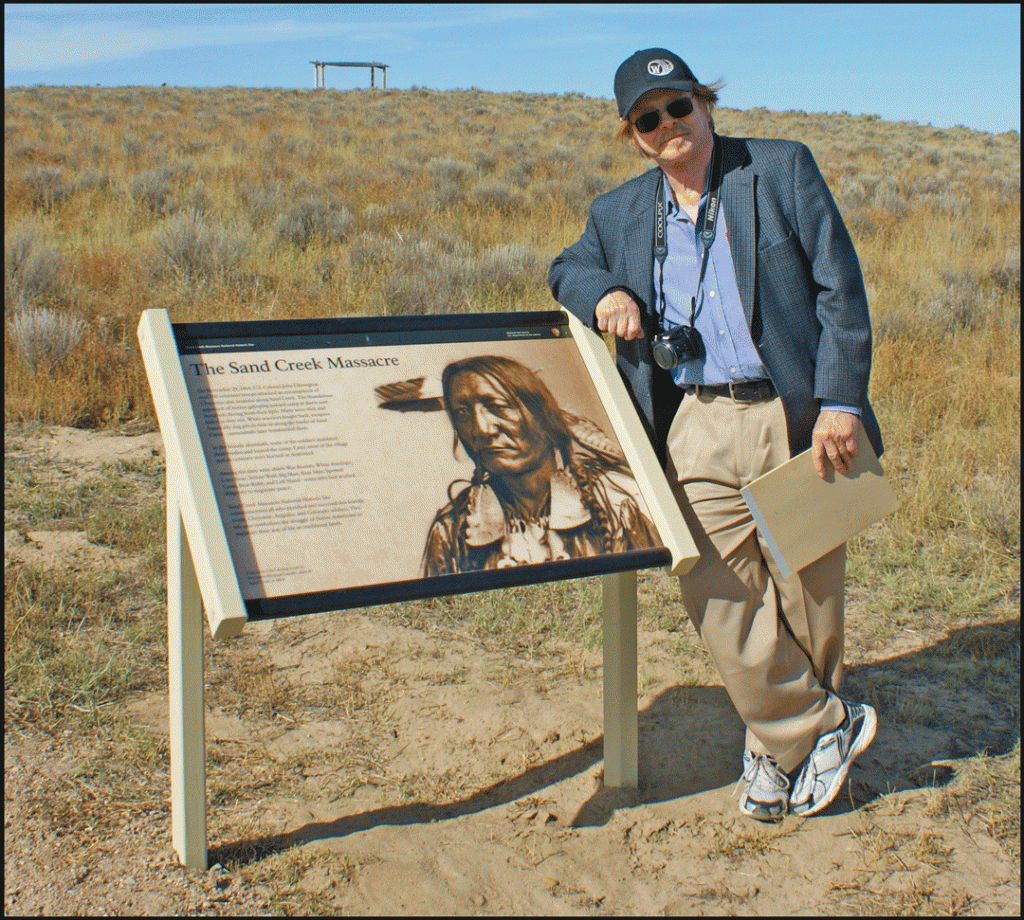


 On 16mar1968 Army photographer Sgt. Ron Haeberle had reached the hamlet of My Lai near the northern coast of South Vietnam. He came upon U.S. soldiers who pointed their weapons at mostly women and children.
On 16mar1968 Army photographer Sgt. Ron Haeberle had reached the hamlet of My Lai near the northern coast of South Vietnam. He came upon U.S. soldiers who pointed their weapons at mostly women and children. 



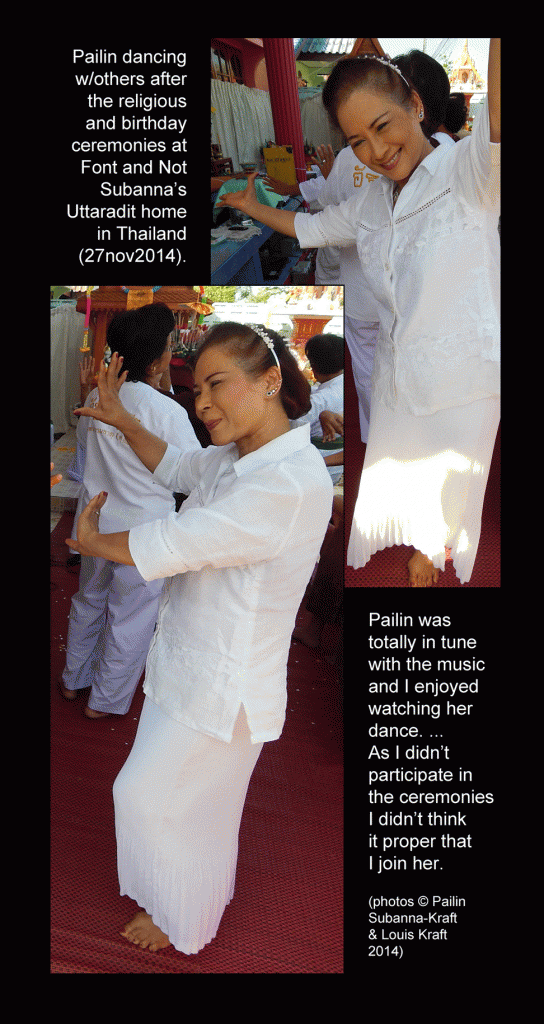
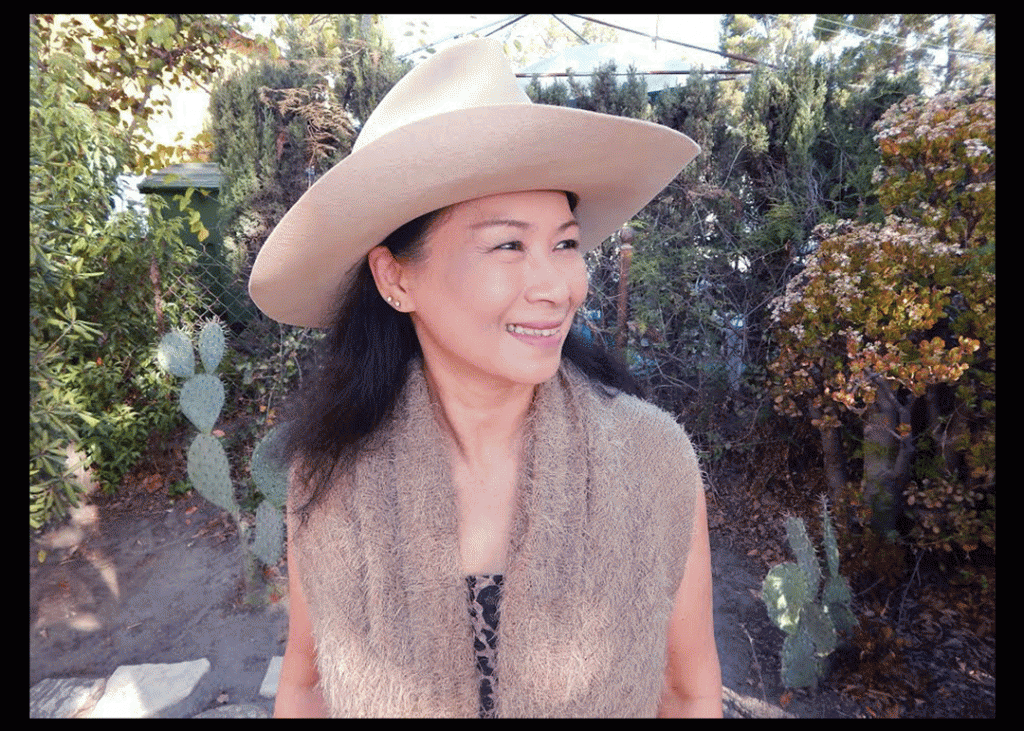

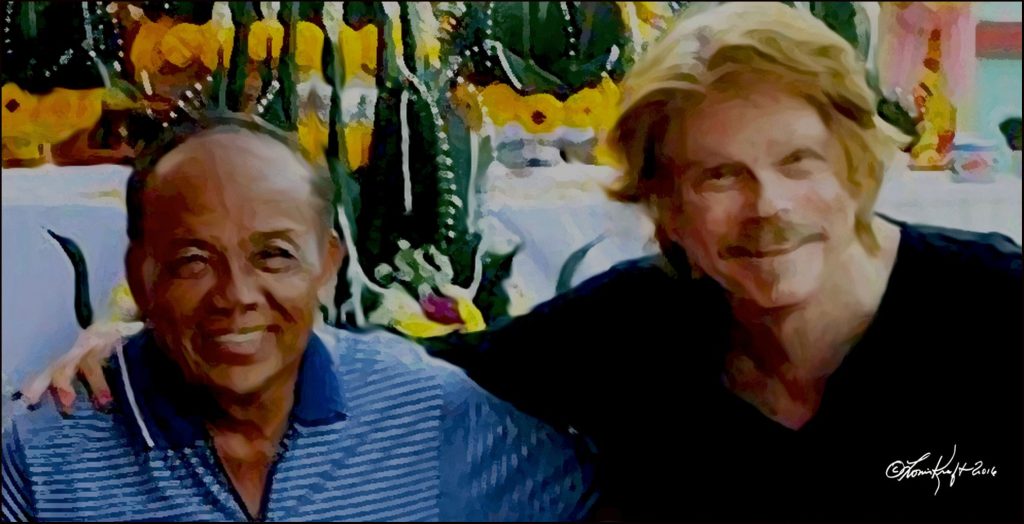


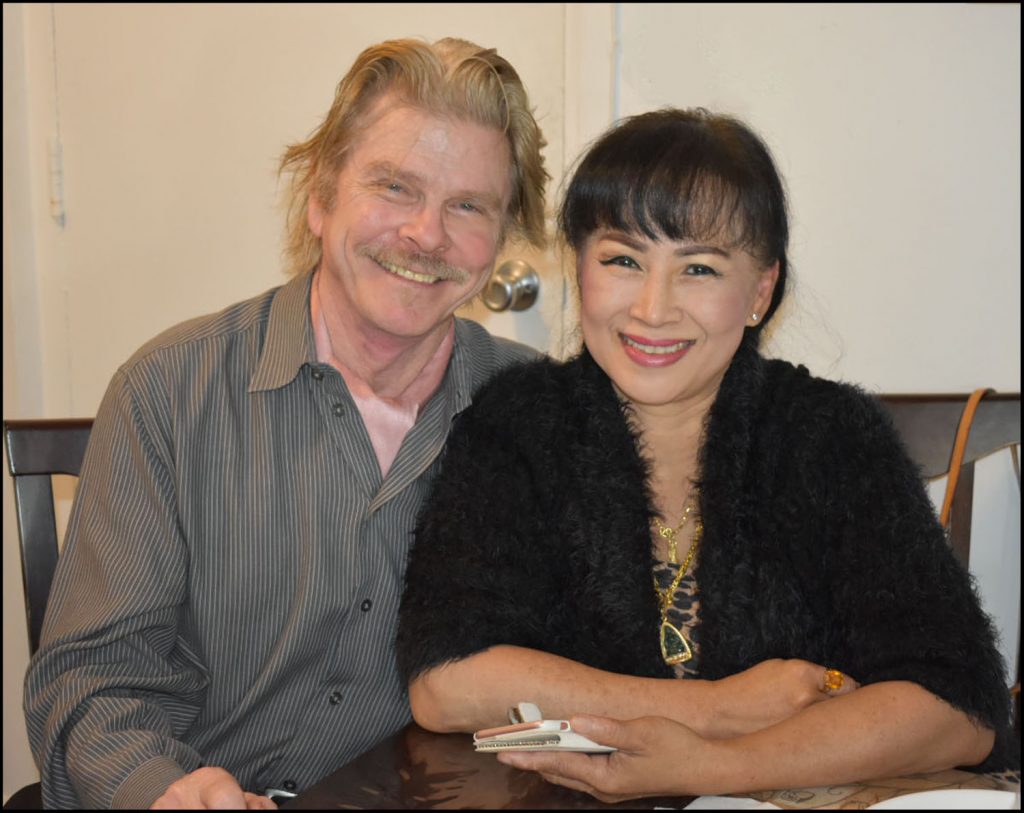

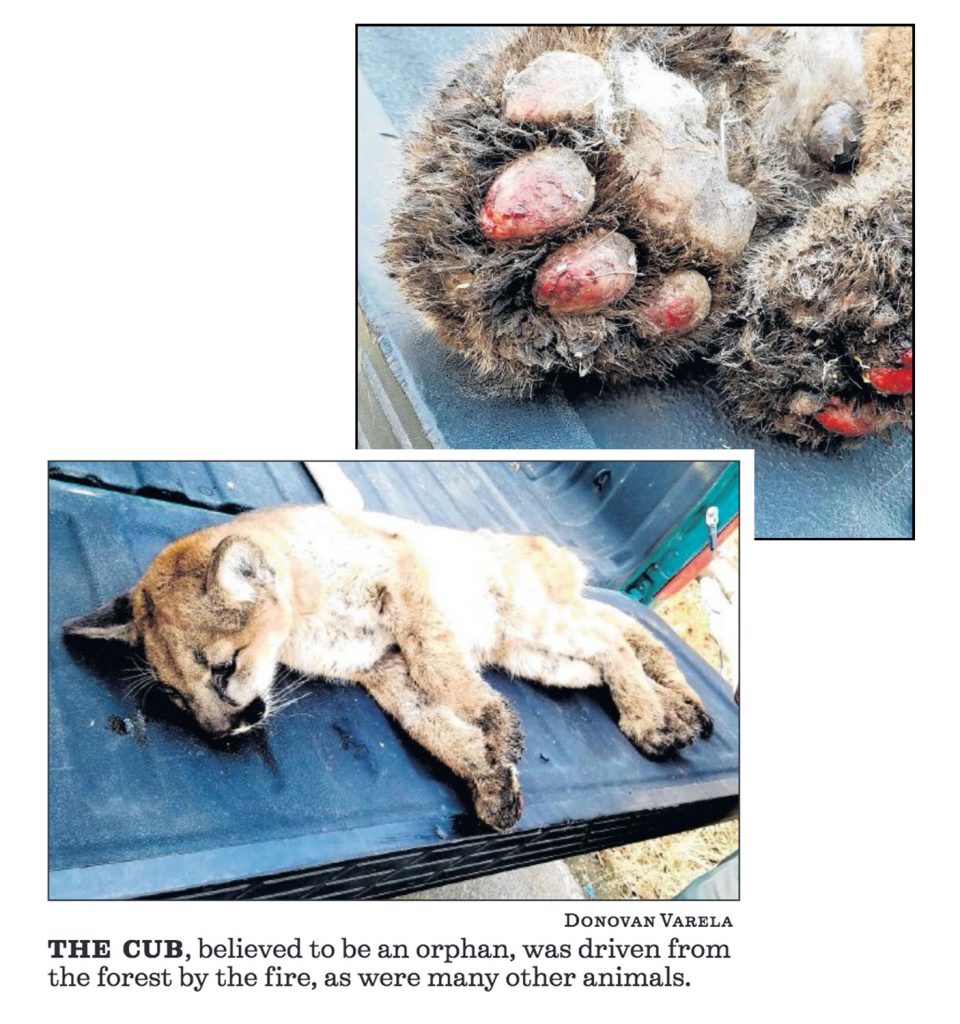
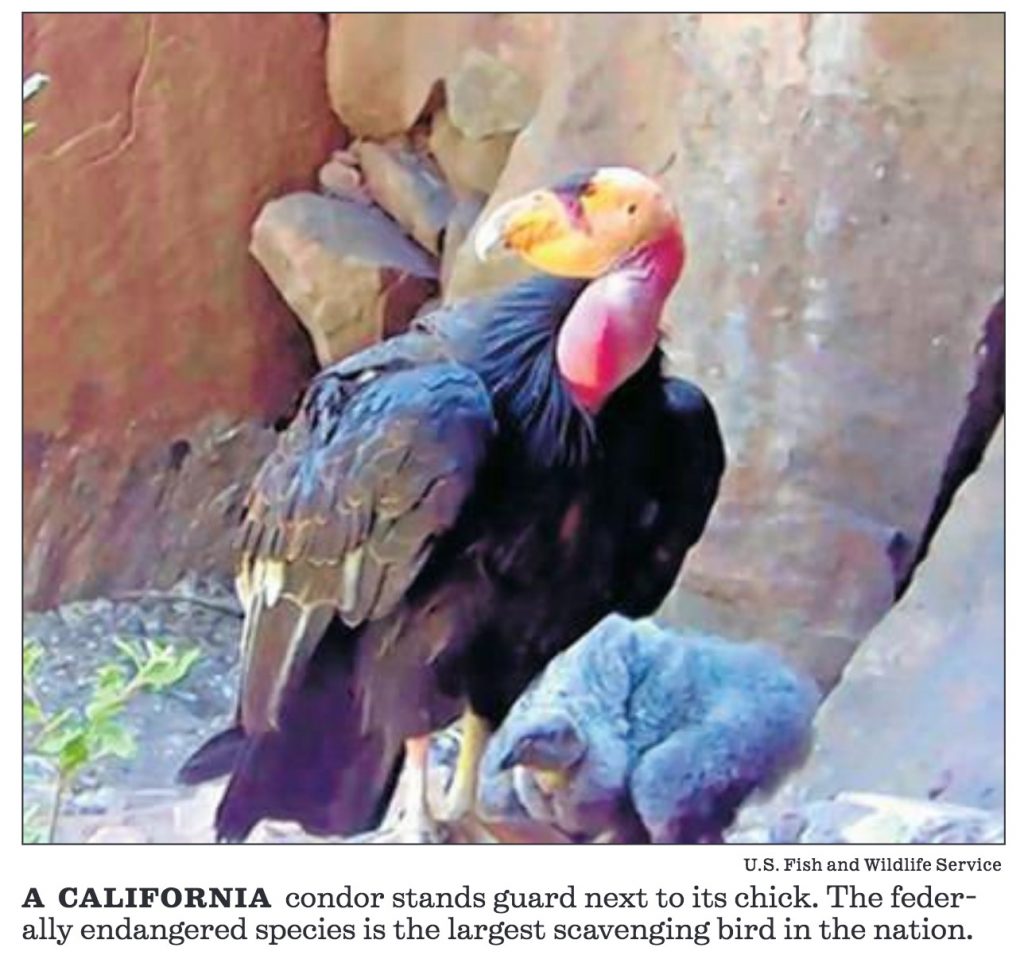
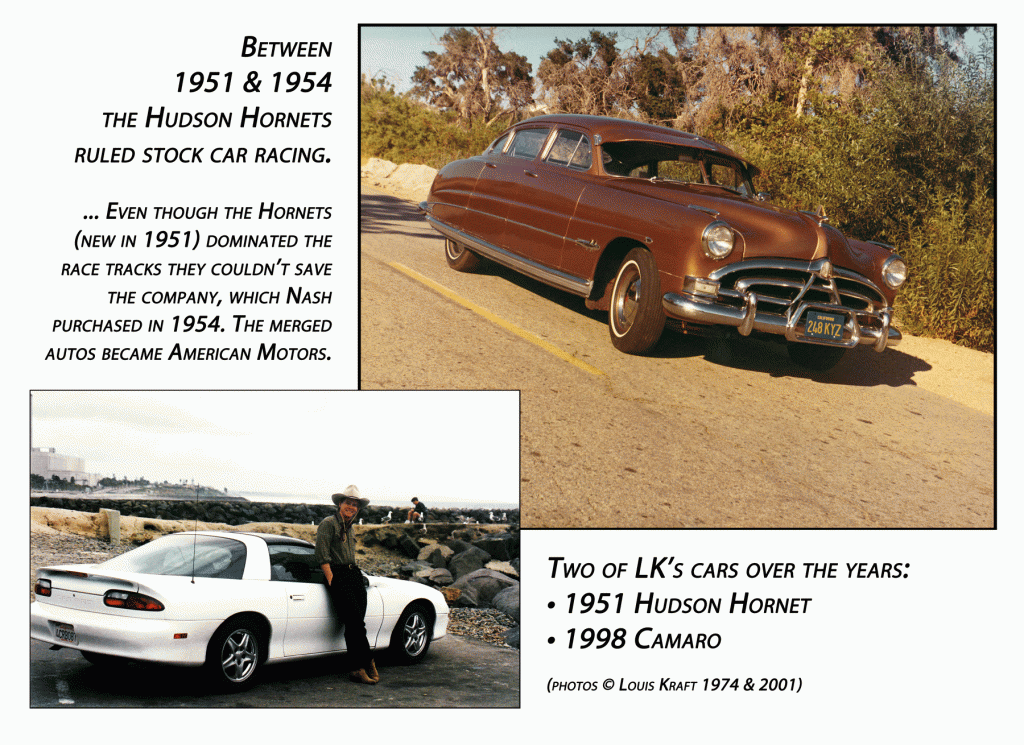
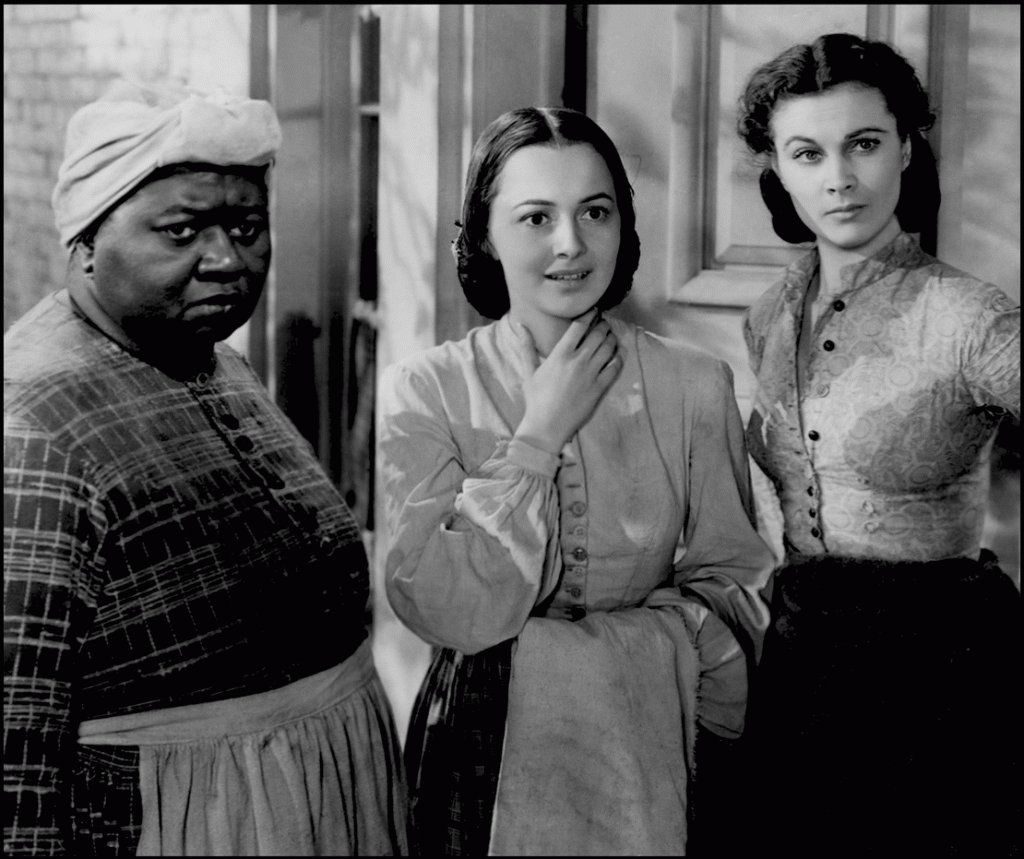
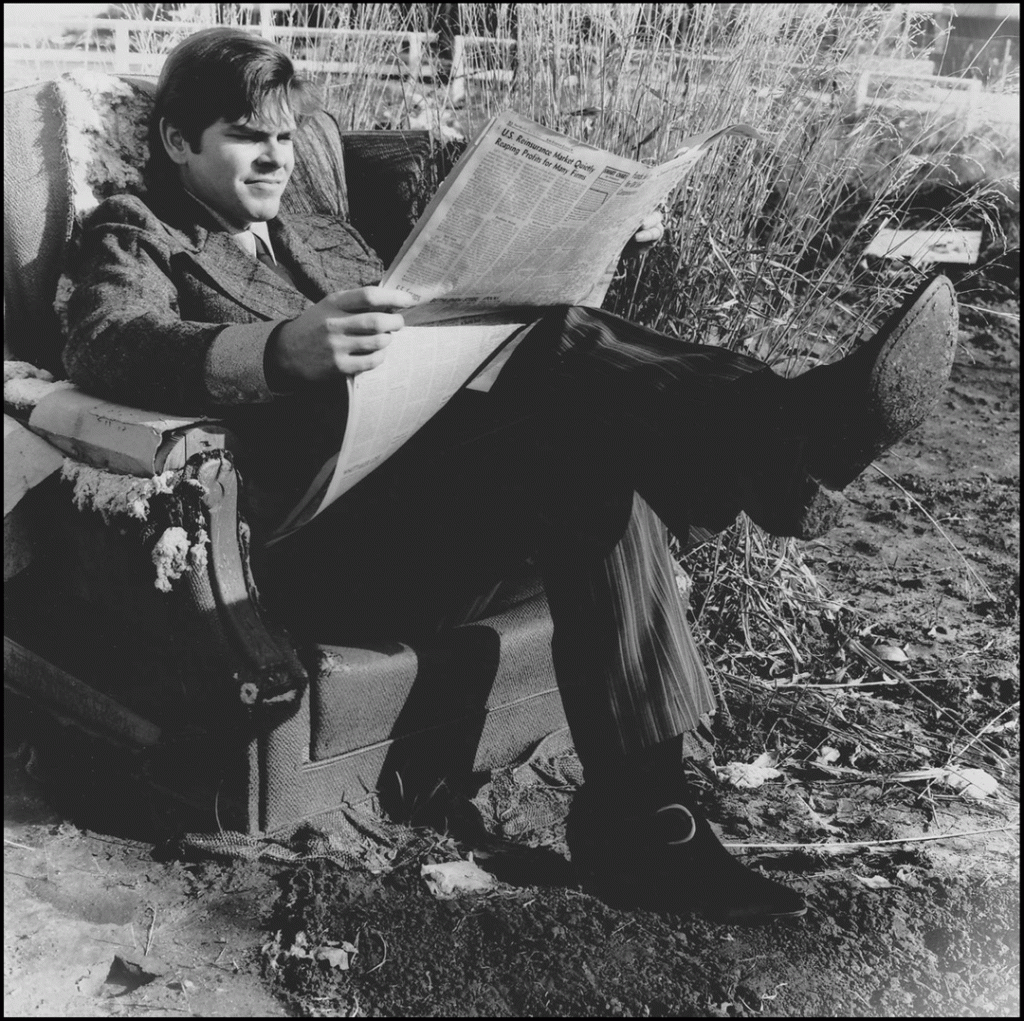




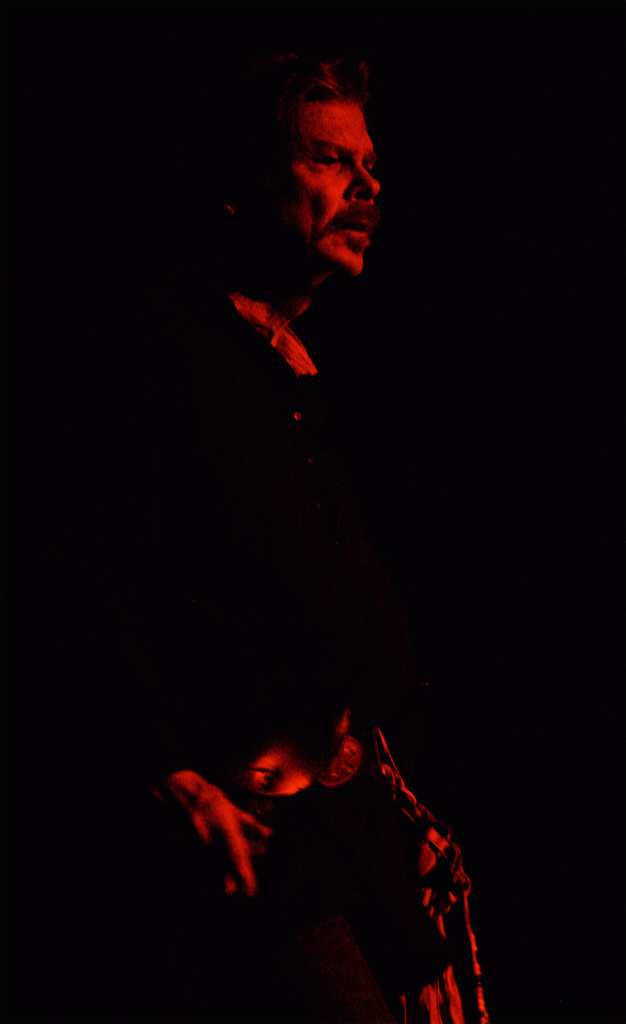
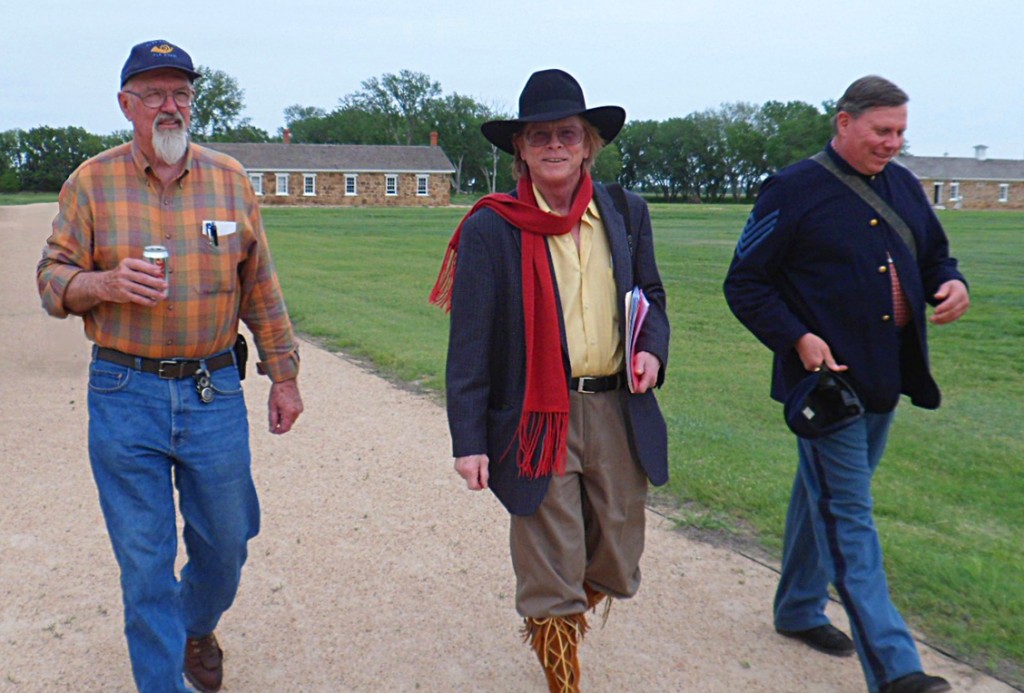
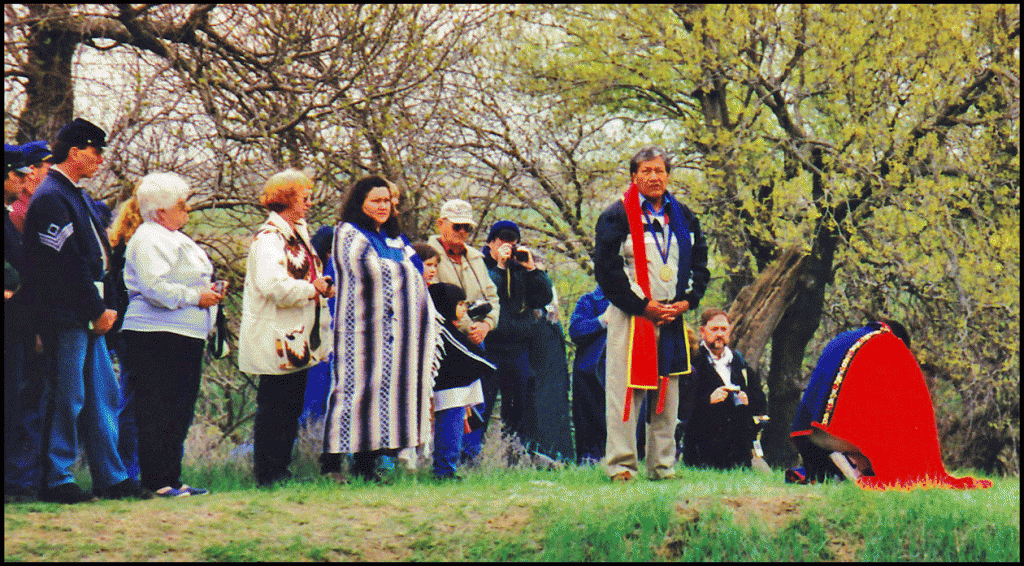
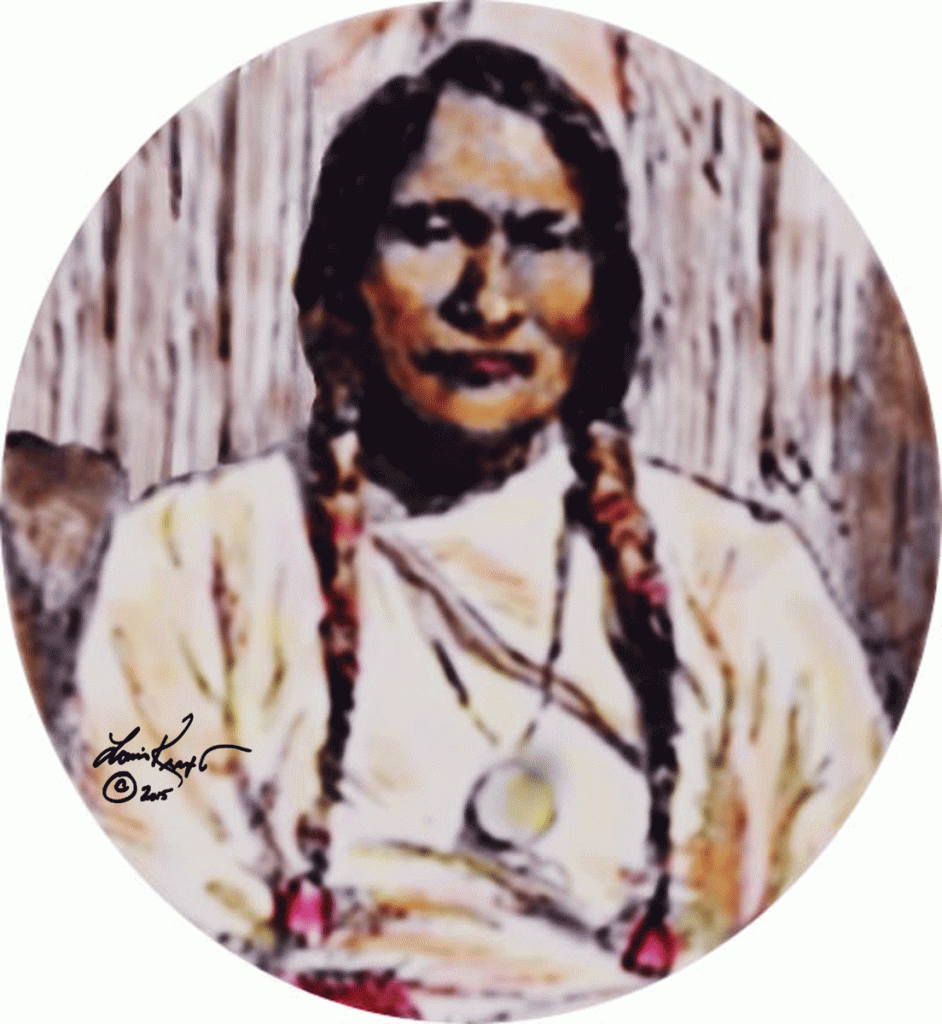

 Is it ethical to sell out truth for greater book sales? Honestly, you don’t want to know my opinion on this. Many writers have done this over the years, and it isn’t confined to the Indian wars. The most infamous—in my opinion—was Charles Higham. Higham, a film biographer, printed despicable lies about two of his subjects (see below), for the simple reason that he wanted to sell books. Other biographers and historians in modern times have mimicked Higham’s practice of creating false facts that bleed red for the same reason, to pocket as many greenbacks as possible. There’s one difference, these hacks of recent times (that is post 1980) stoop so low with their fictional creations that they are little more than cockroaches that run rampant in their readers’ minds as they spread filth that has no basis in reality.
Is it ethical to sell out truth for greater book sales? Honestly, you don’t want to know my opinion on this. Many writers have done this over the years, and it isn’t confined to the Indian wars. The most infamous—in my opinion—was Charles Higham. Higham, a film biographer, printed despicable lies about two of his subjects (see below), for the simple reason that he wanted to sell books. Other biographers and historians in modern times have mimicked Higham’s practice of creating false facts that bleed red for the same reason, to pocket as many greenbacks as possible. There’s one difference, these hacks of recent times (that is post 1980) stoop so low with their fictional creations that they are little more than cockroaches that run rampant in their readers’ minds as they spread filth that has no basis in reality.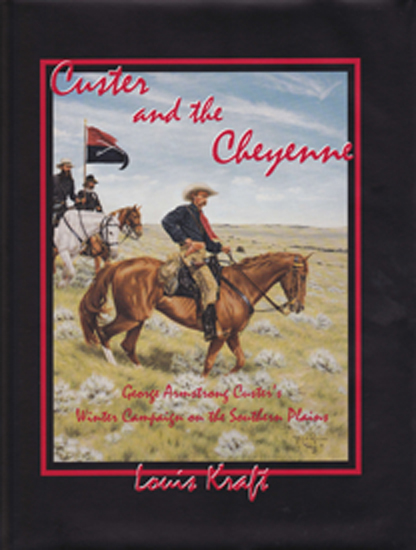 Years passed. It was now 1995 and we were at the Western Writers of America (WWA) convention in Cheyenne, Wyoming (I’m foggy on the location but think the timing was with the publication of Custer and the Cheyenne).
Years passed. It was now 1995 and we were at the Western Writers of America (WWA) convention in Cheyenne, Wyoming (I’m foggy on the location but think the timing was with the publication of Custer and the Cheyenne). Kudos to him for his honesty. At the same time his words now mimic the truth of today’s world. If the truth gets in the way of your preconceived premise, dismiss it. If someone confronts you on your lie, one-up them and call them “little Billy,” or “bullshitting Johnny,” or “sex stalker Alex,” or “lying Donald.” The new key words here are: “Fake News.” Point your finger at them, scream, and if possible see that your hateful rants explode all over social media.
Kudos to him for his honesty. At the same time his words now mimic the truth of today’s world. If the truth gets in the way of your preconceived premise, dismiss it. If someone confronts you on your lie, one-up them and call them “little Billy,” or “bullshitting Johnny,” or “sex stalker Alex,” or “lying Donald.” The new key words here are: “Fake News.” Point your finger at them, scream, and if possible see that your hateful rants explode all over social media.


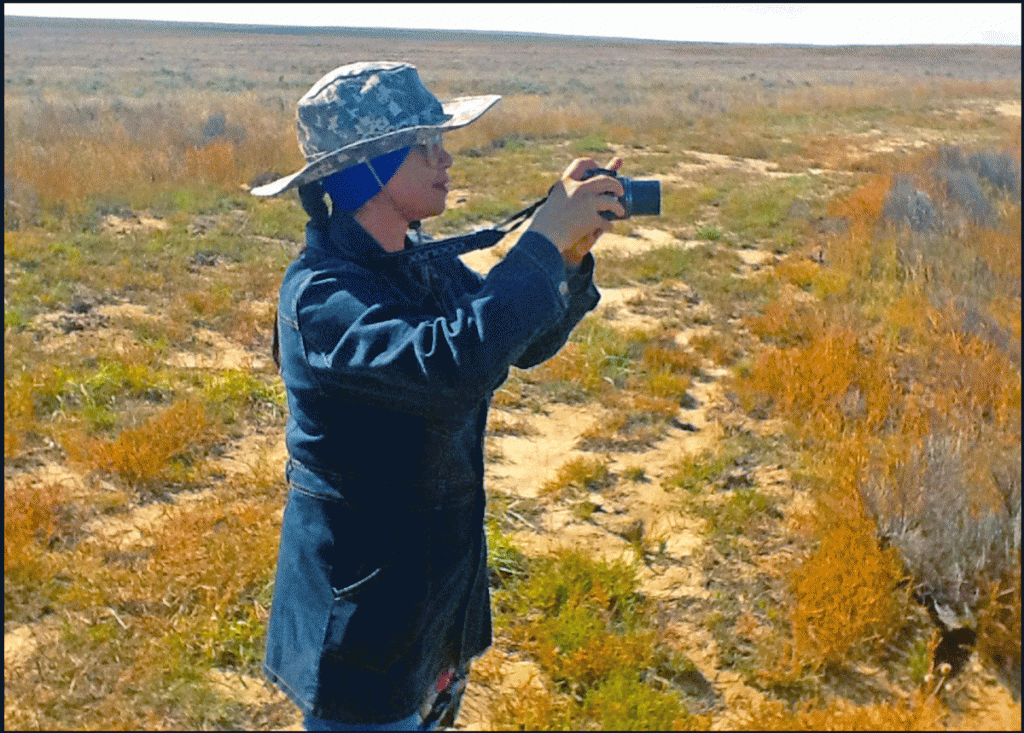
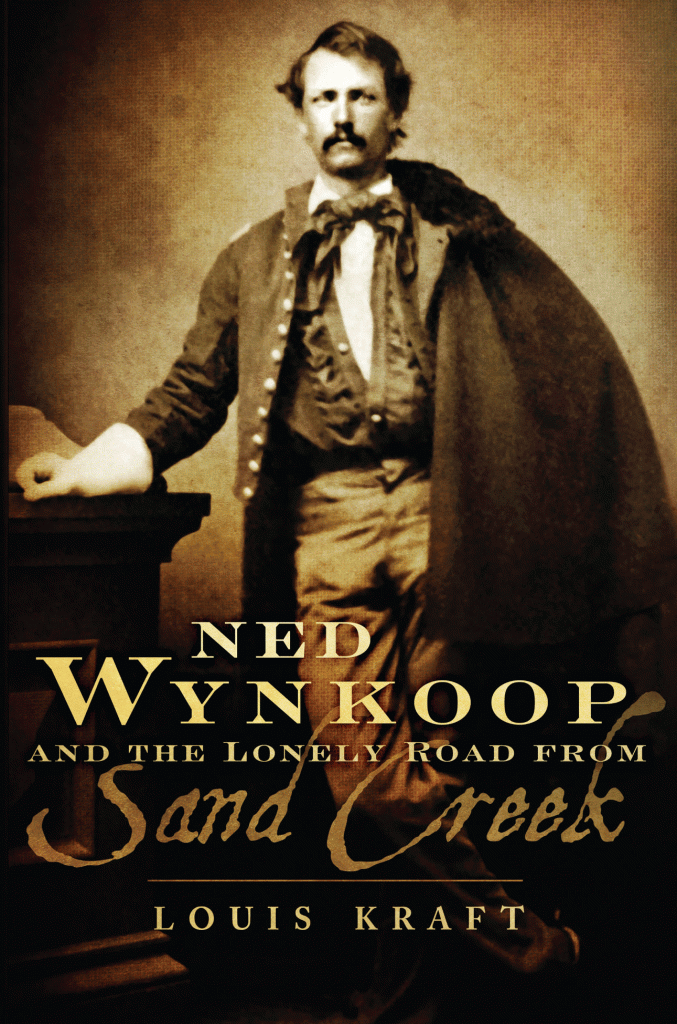
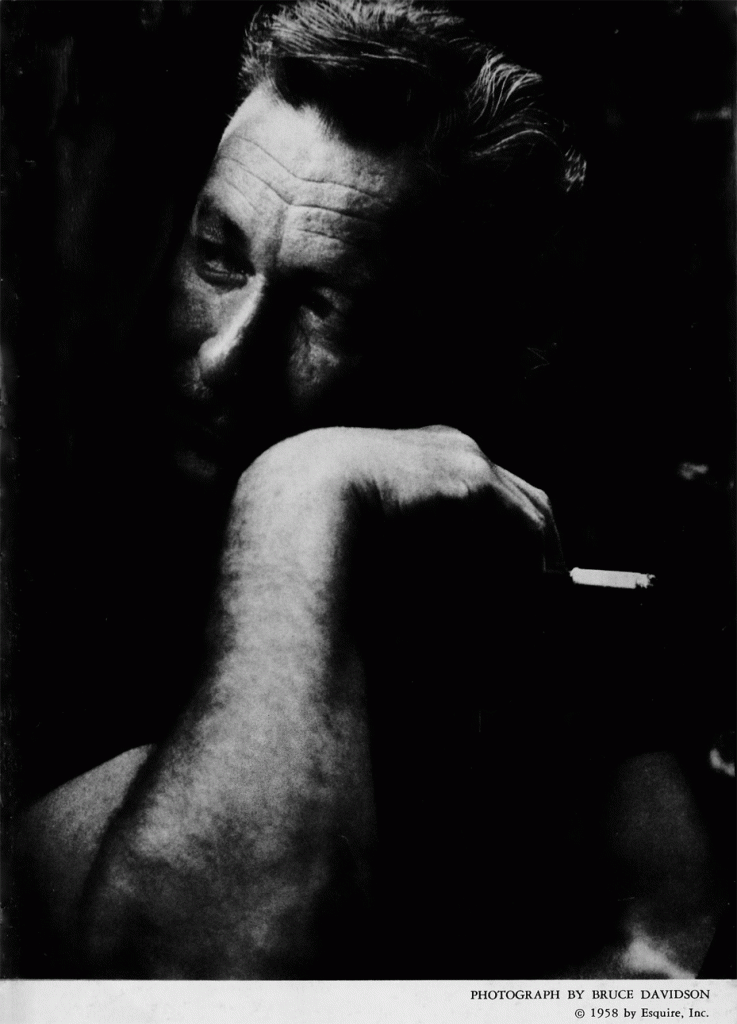
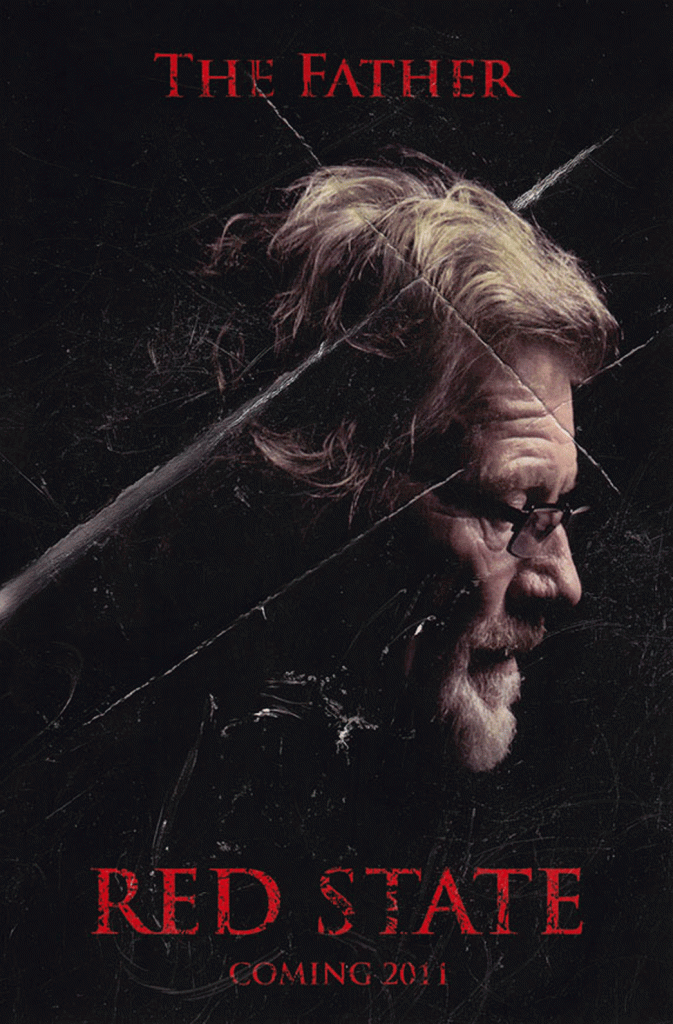
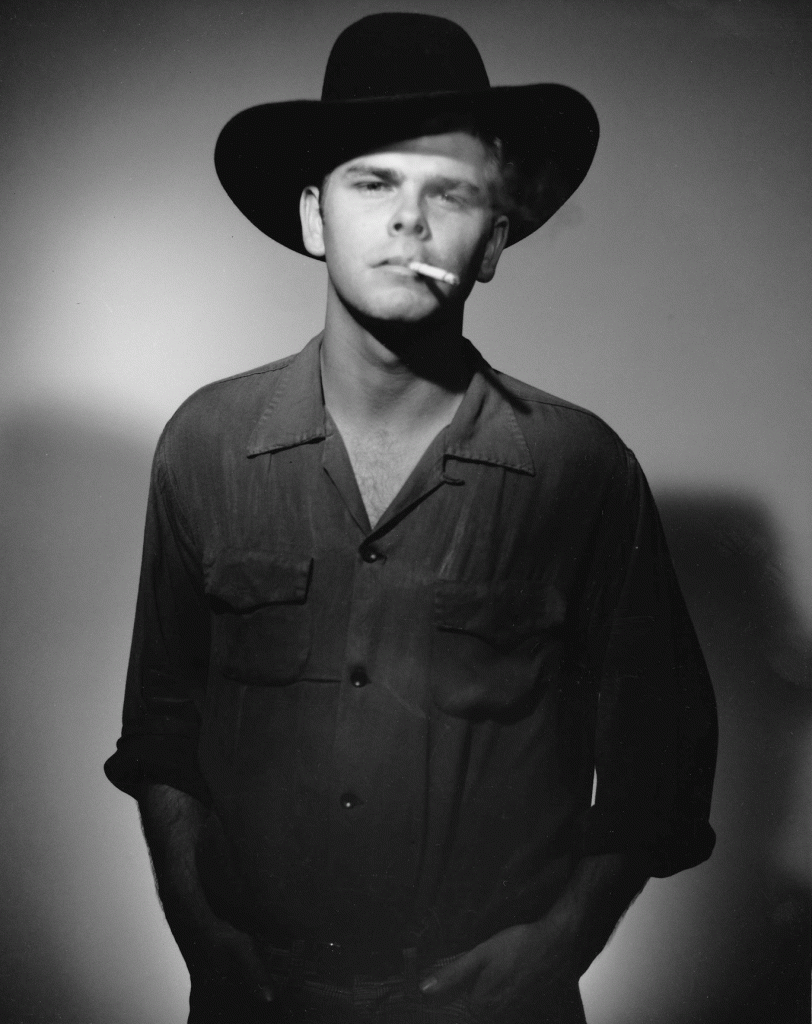

 The editor and I had a great long-distance working relationship before my nine days in Herndon. During the evenings after code-based software demos she became my tour guide, dinner companion, and more. On one day when we got off early she drove me to Leesburg where I spent time with Wild West editor Greg Lalire at Primedia’s headquarters (they then published a great grouping of about 12 history magazines). Greg and I have been friends for decades.
The editor and I had a great long-distance working relationship before my nine days in Herndon. During the evenings after code-based software demos she became my tour guide, dinner companion, and more. On one day when we got off early she drove me to Leesburg where I spent time with Wild West editor Greg Lalire at Primedia’s headquarters (they then published a great grouping of about 12 history magazines). Greg and I have been friends for decades.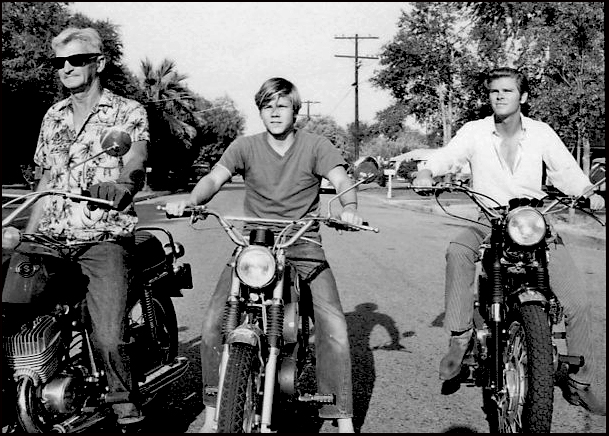
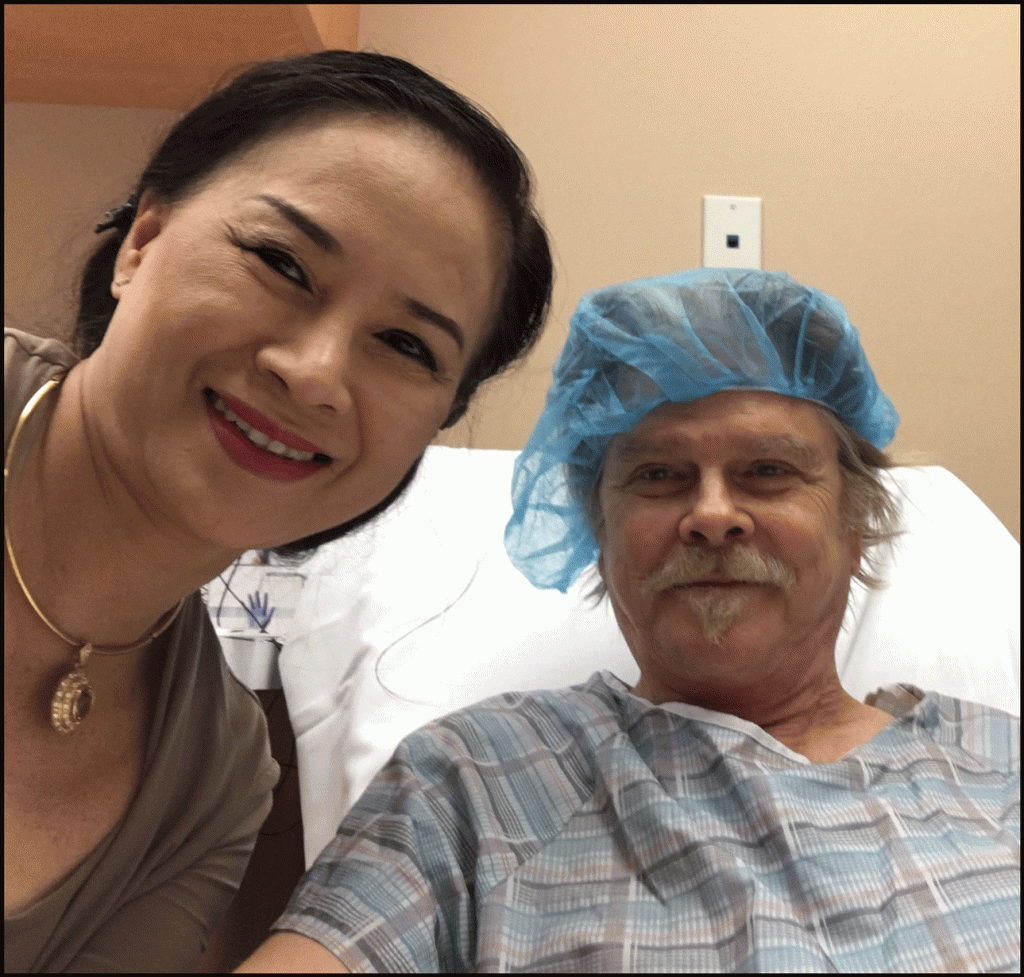




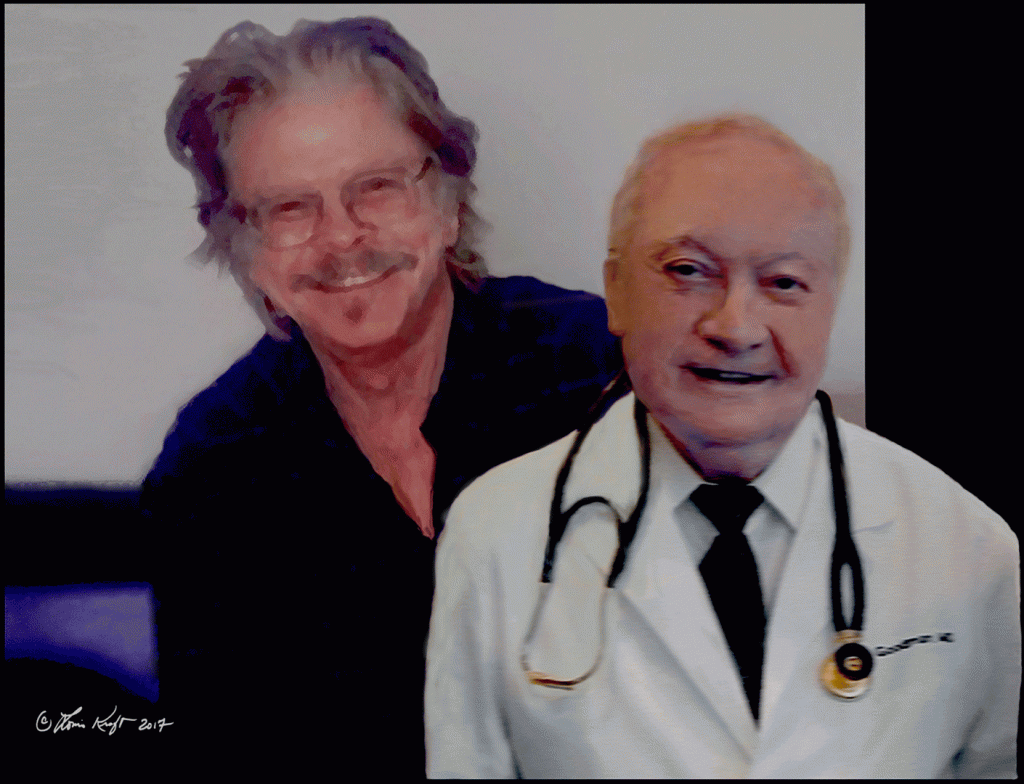
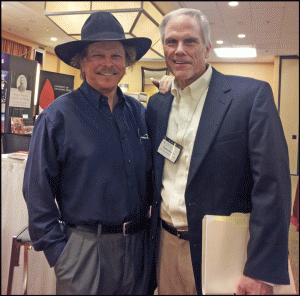
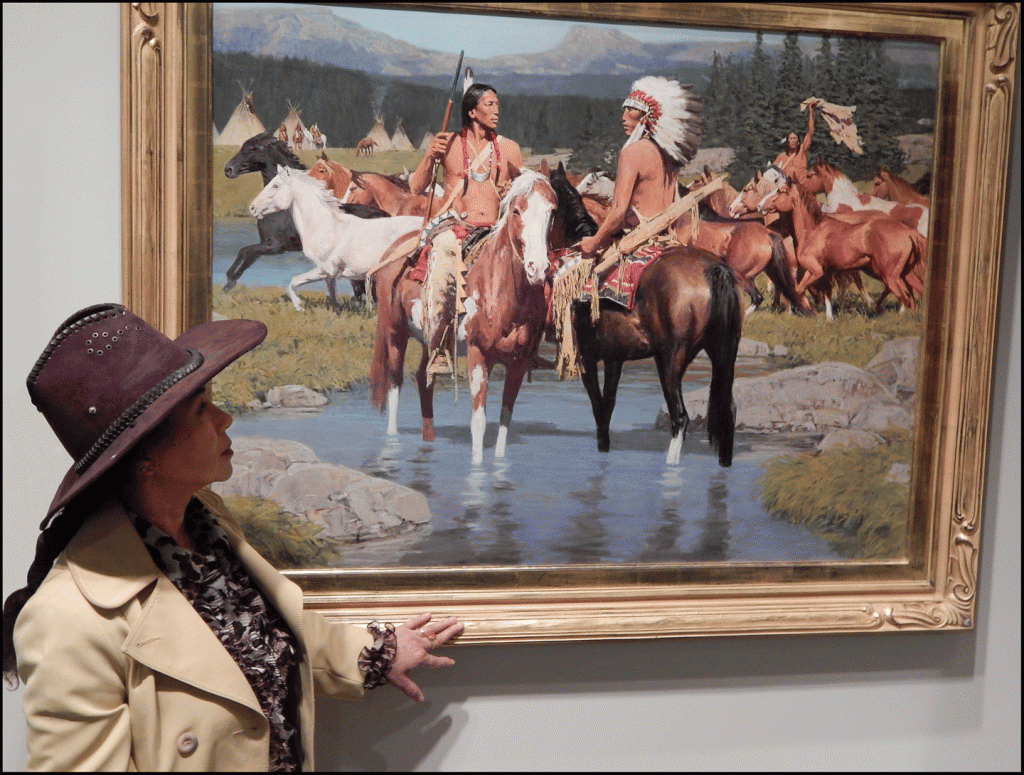

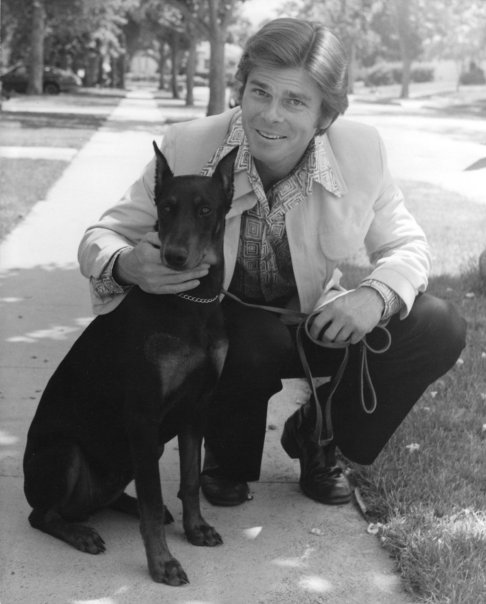







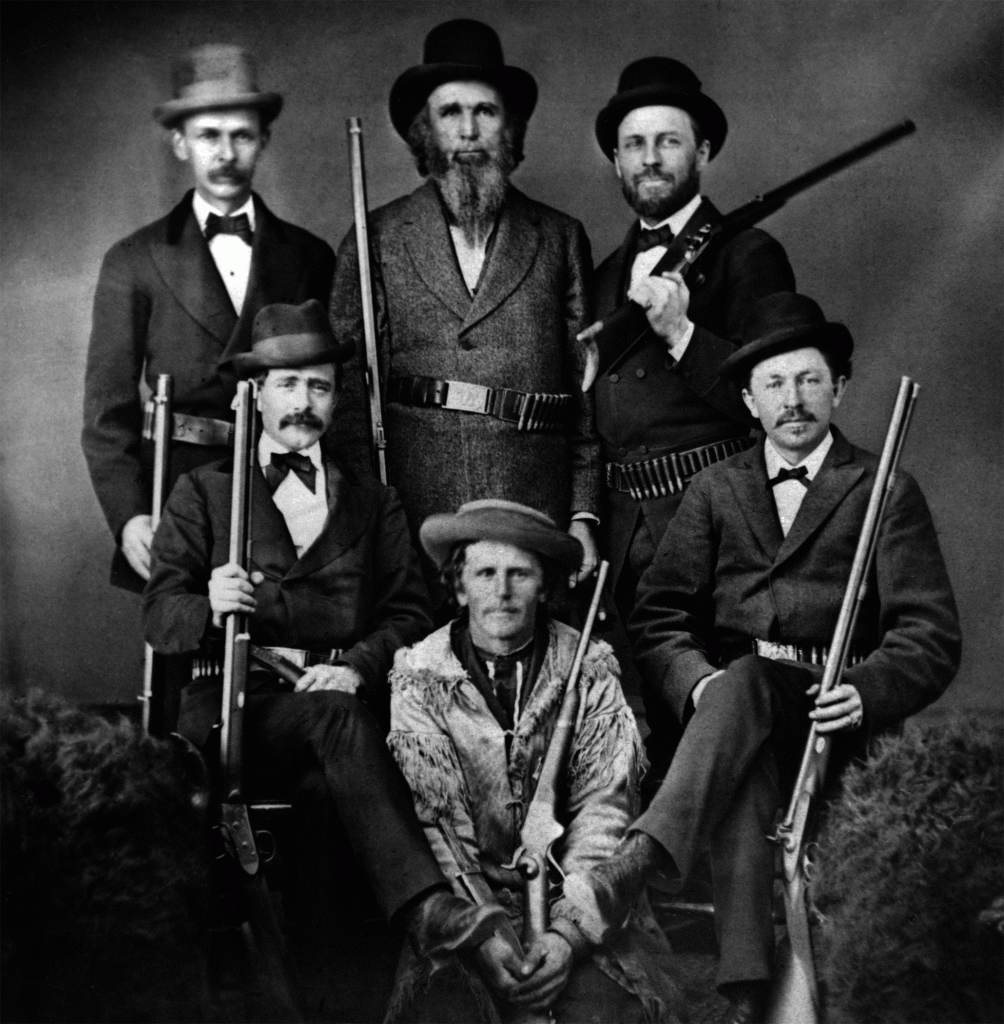



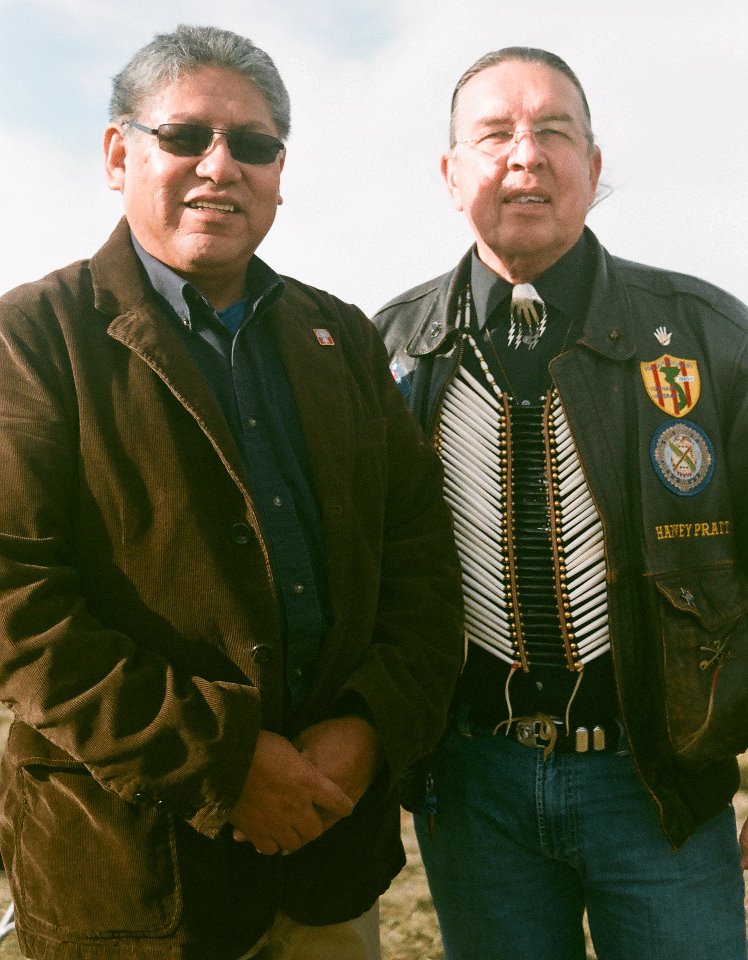
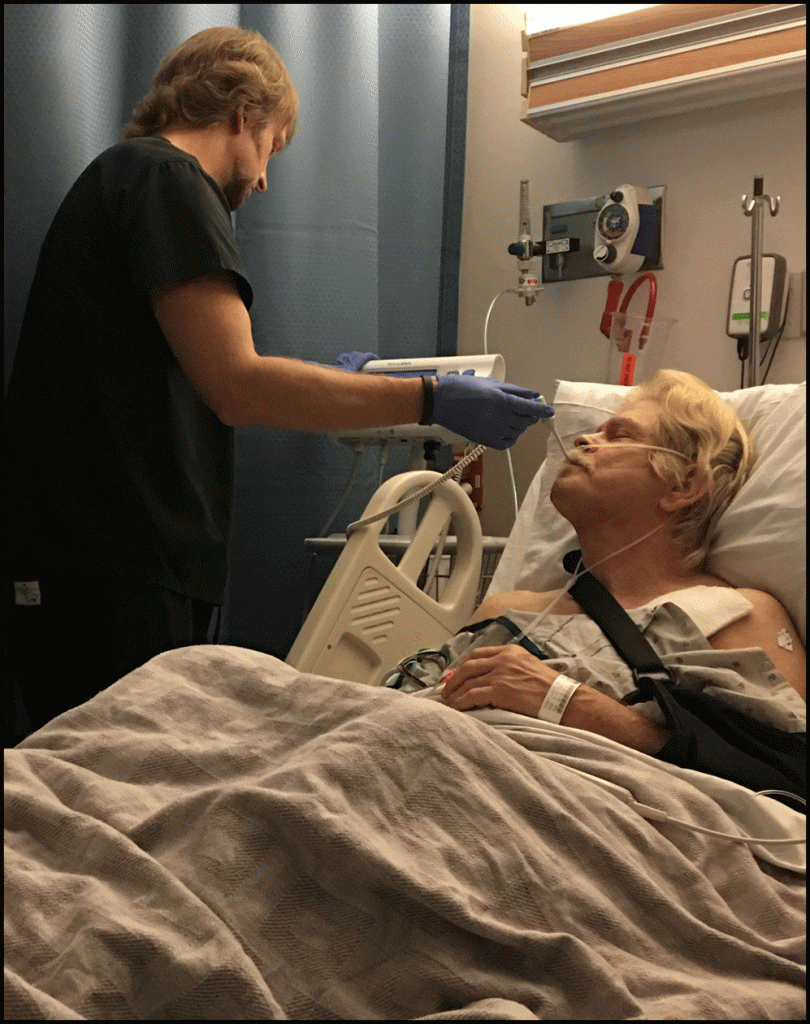
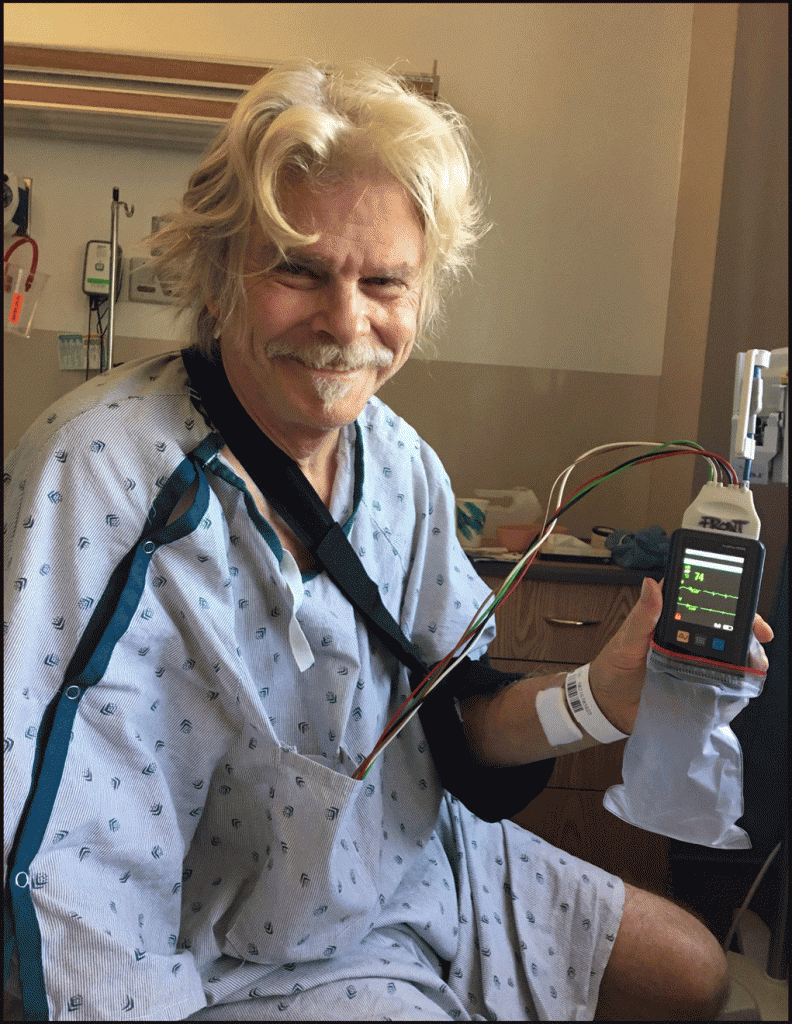
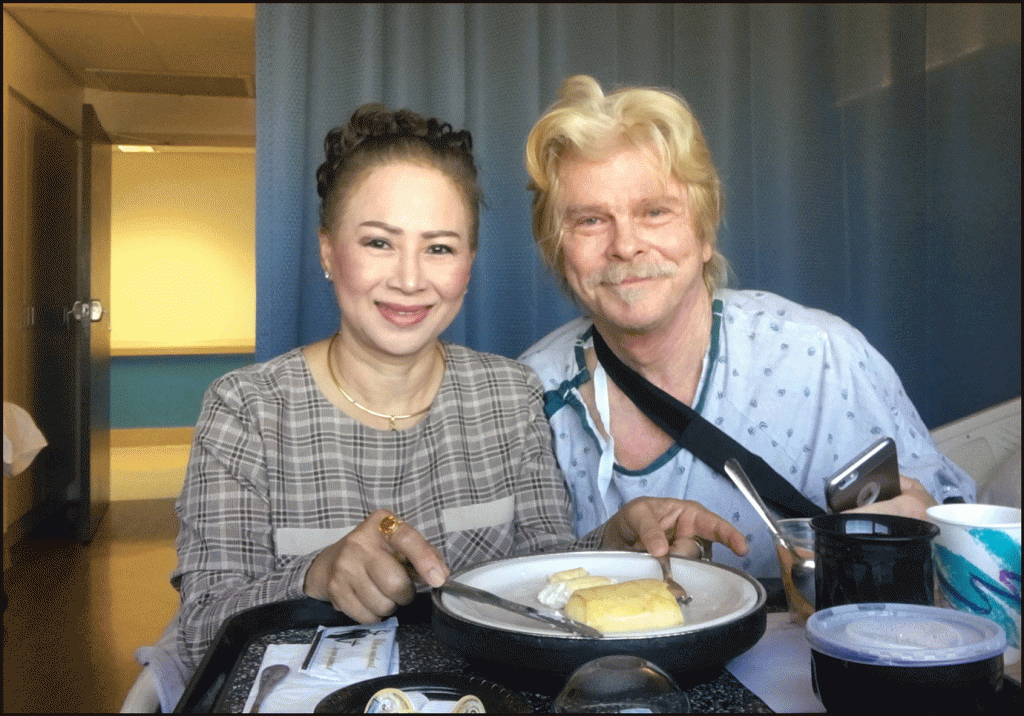

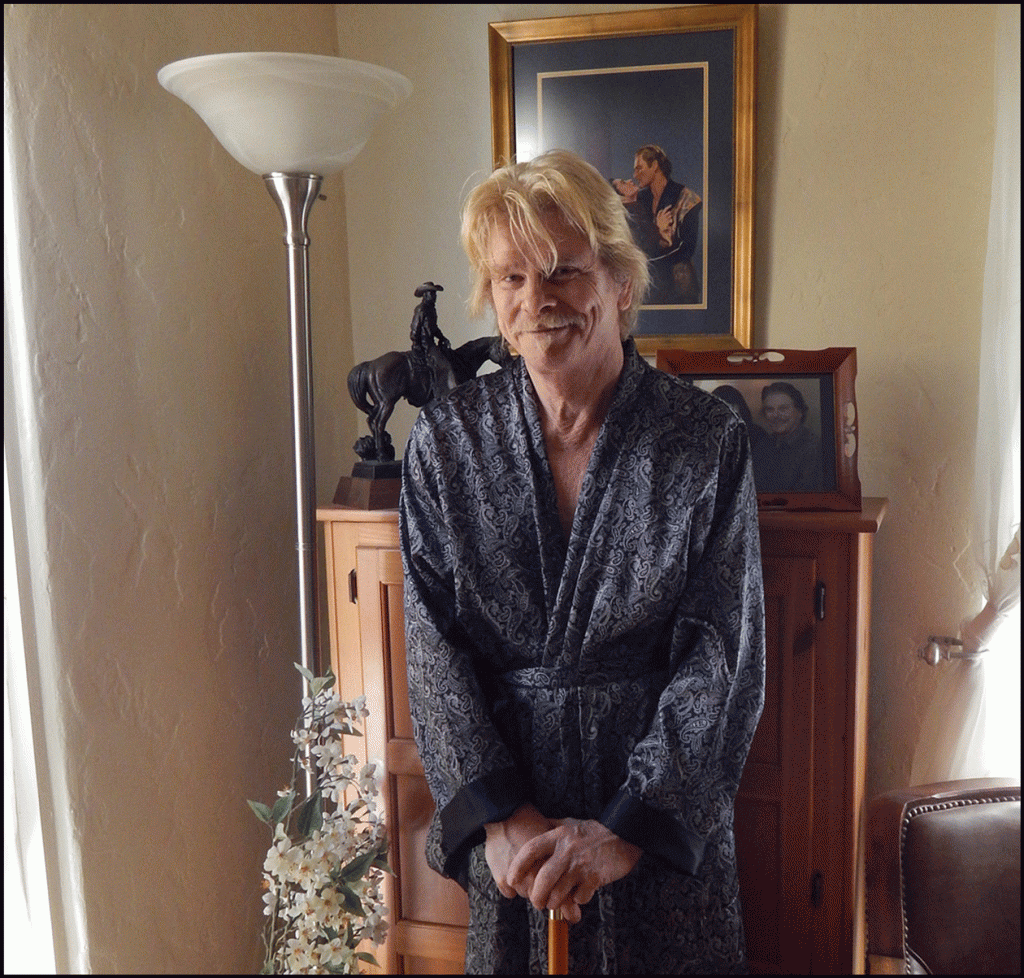


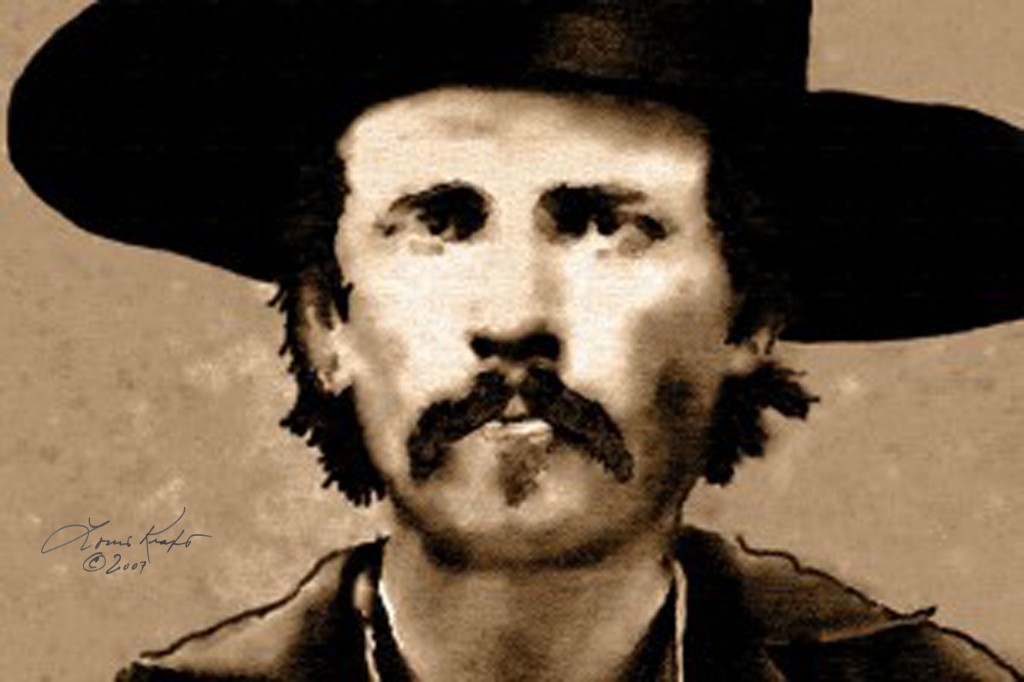
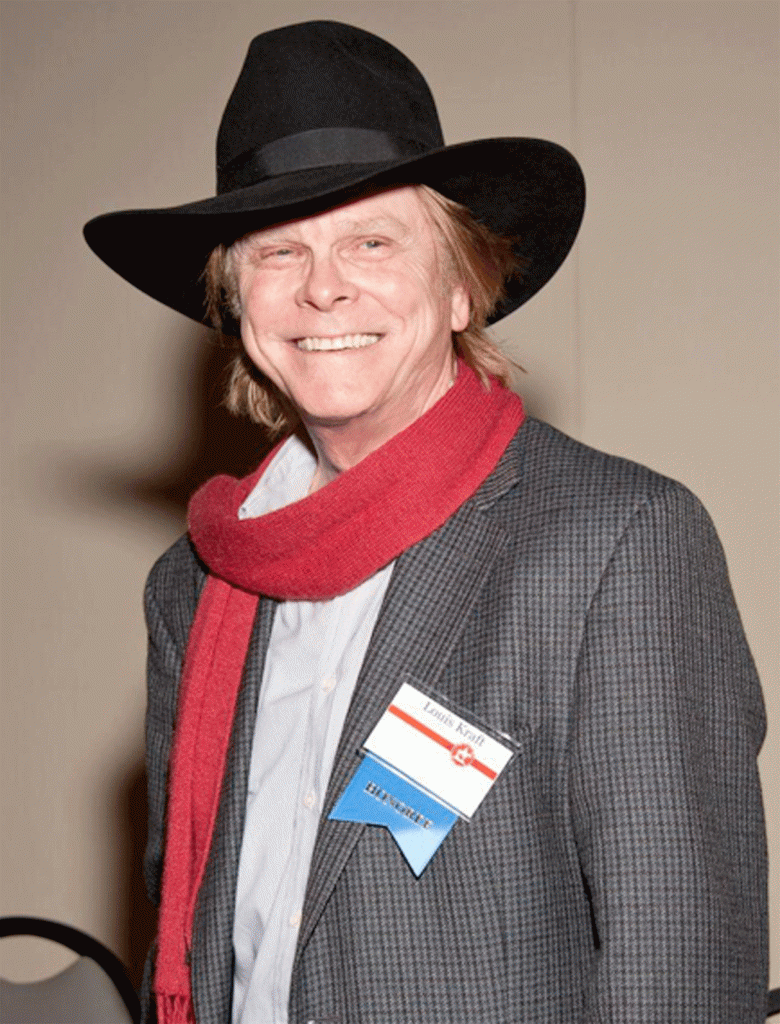
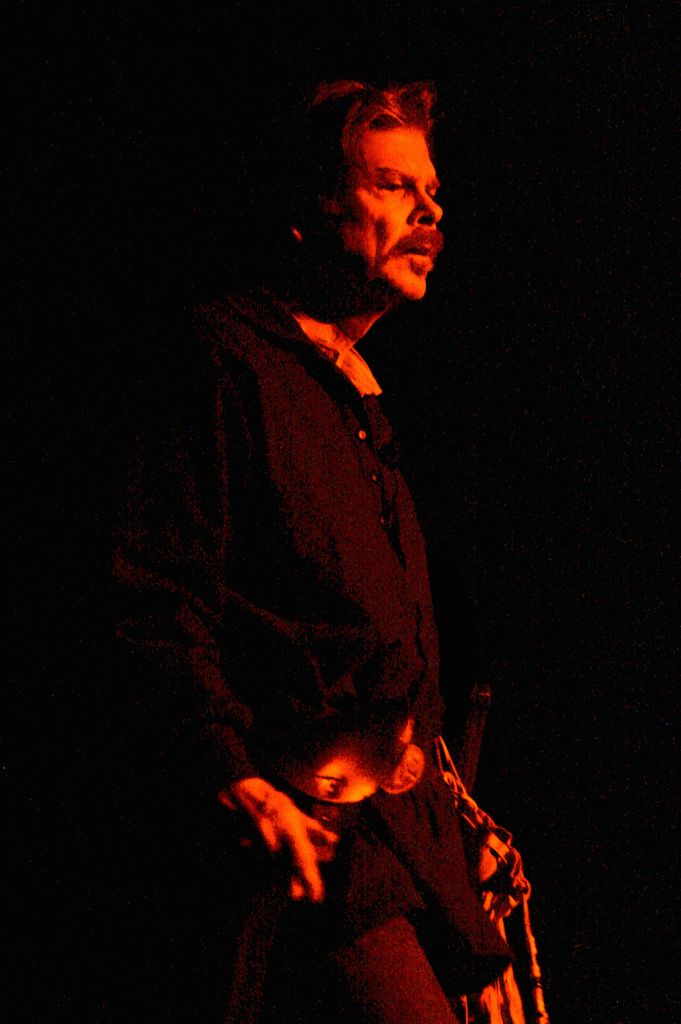


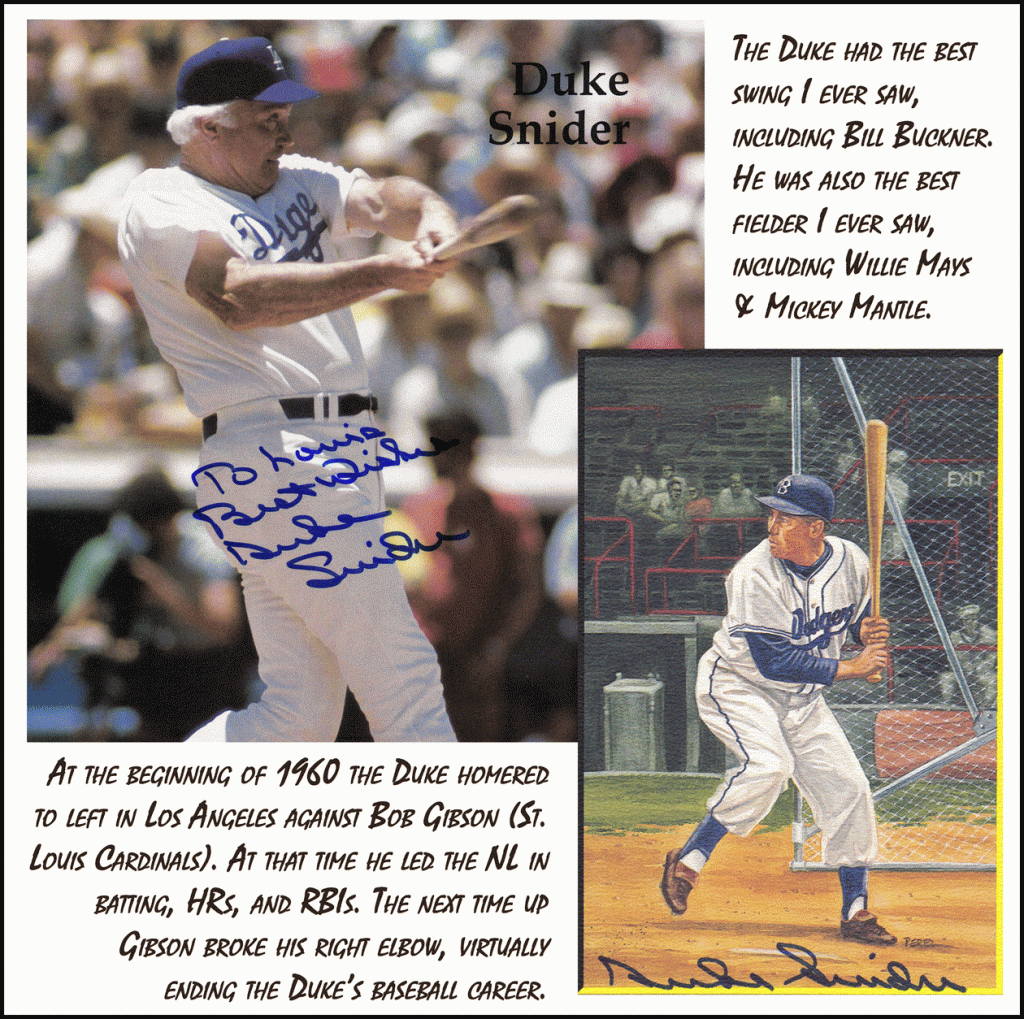
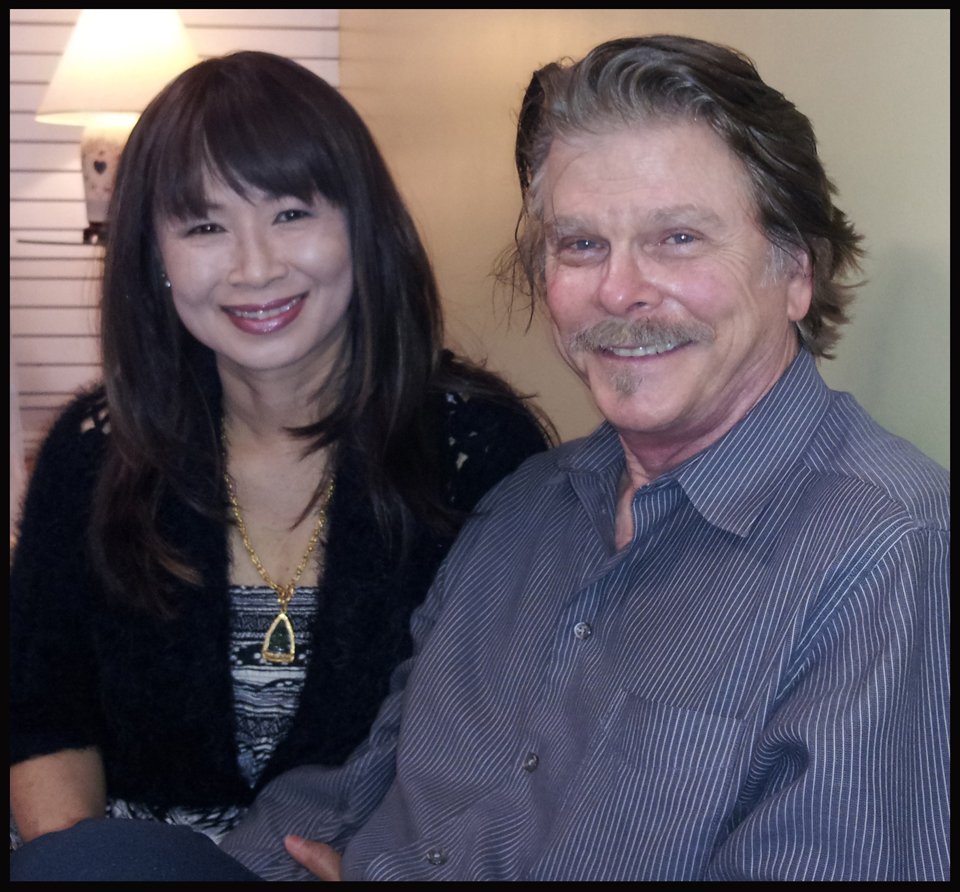
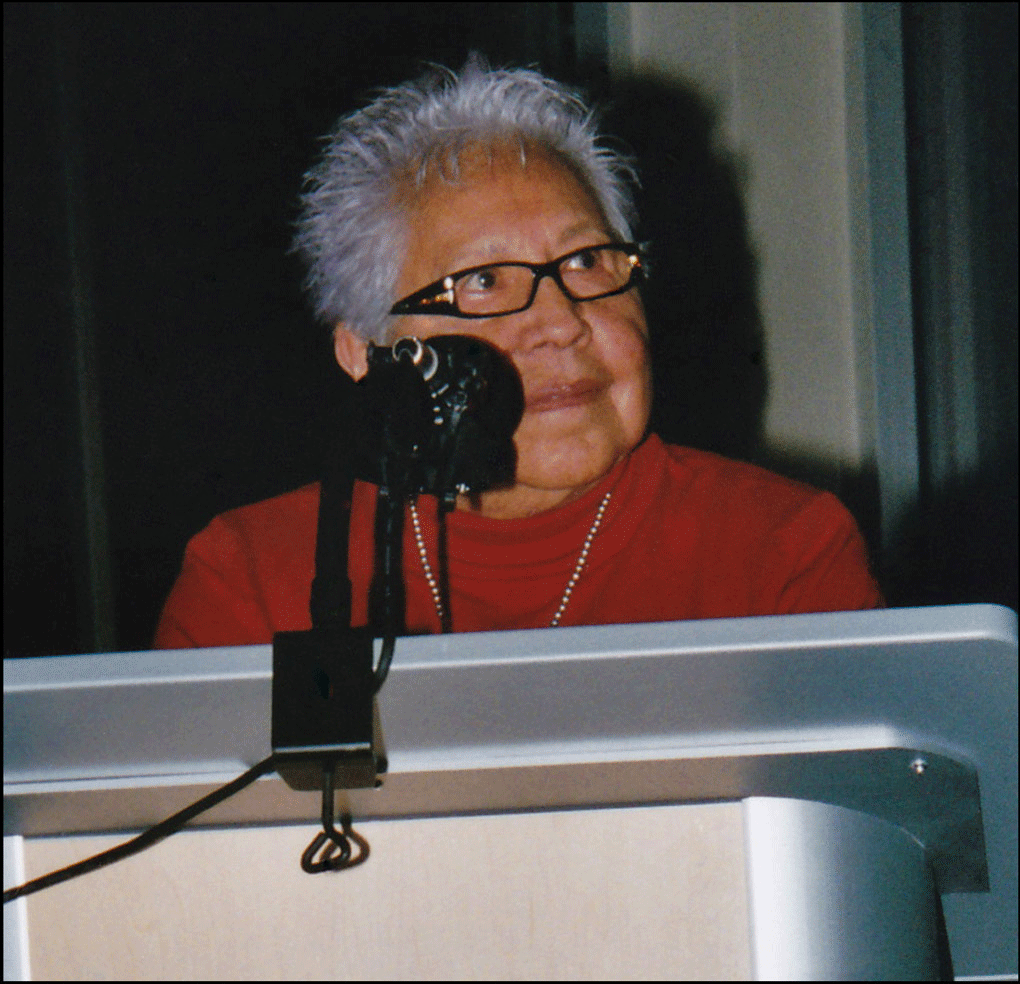

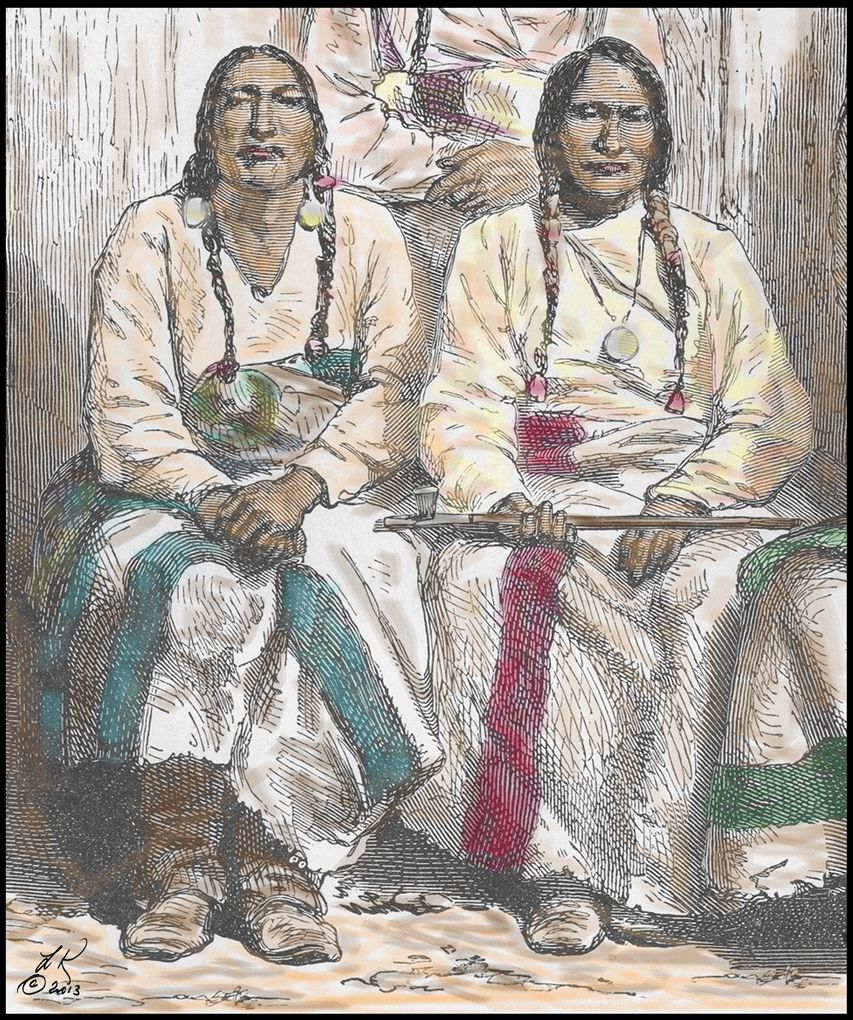
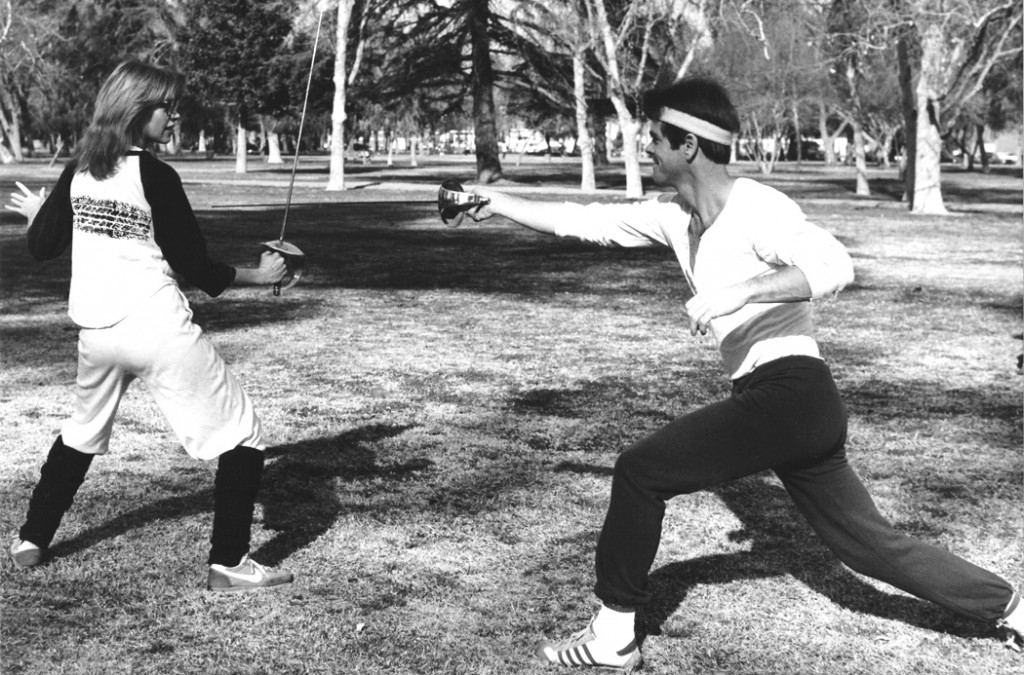
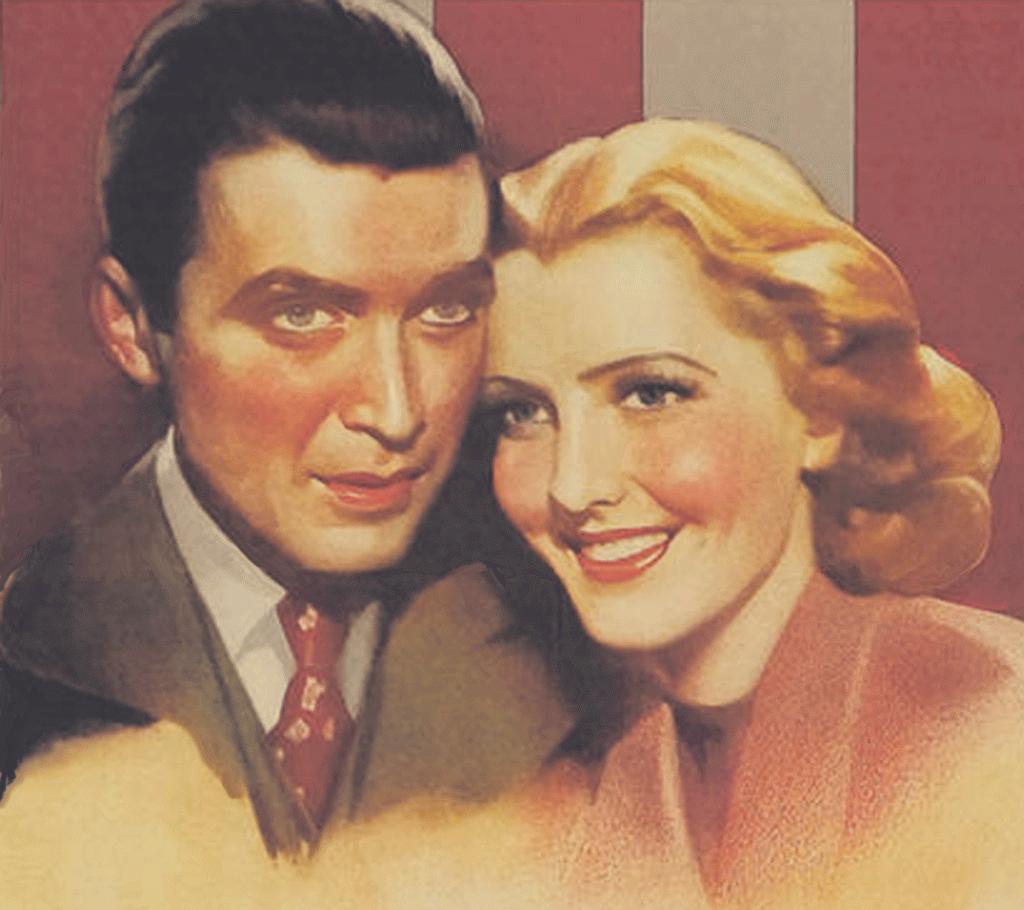





 The reason for completing these two manuscripts is simple: They will be the most important books that I write in my lifetime (while my favorite has already been printed by the University of Oklahoma Press, Ned Wynkoop and the Lonely Road from Sand Creek). LK’s writing world does not end with these two manuscripts, for I will have a long life as I move forward in my writing (this includes two additional nonfiction books on Errol Flynn; two books on Kit Carson, one nonfiction and one fiction; two books on the English pirate and knight Francis Drake (again one nonfiction and one fiction). Ladies and gents, this is a mouthful. But—BUT—on the plus side it will ensure that I live a long life as I protect the women in my life.
The reason for completing these two manuscripts is simple: They will be the most important books that I write in my lifetime (while my favorite has already been printed by the University of Oklahoma Press, Ned Wynkoop and the Lonely Road from Sand Creek). LK’s writing world does not end with these two manuscripts, for I will have a long life as I move forward in my writing (this includes two additional nonfiction books on Errol Flynn; two books on Kit Carson, one nonfiction and one fiction; two books on the English pirate and knight Francis Drake (again one nonfiction and one fiction). Ladies and gents, this is a mouthful. But—BUT—on the plus side it will ensure that I live a long life as I protect the women in my life.
